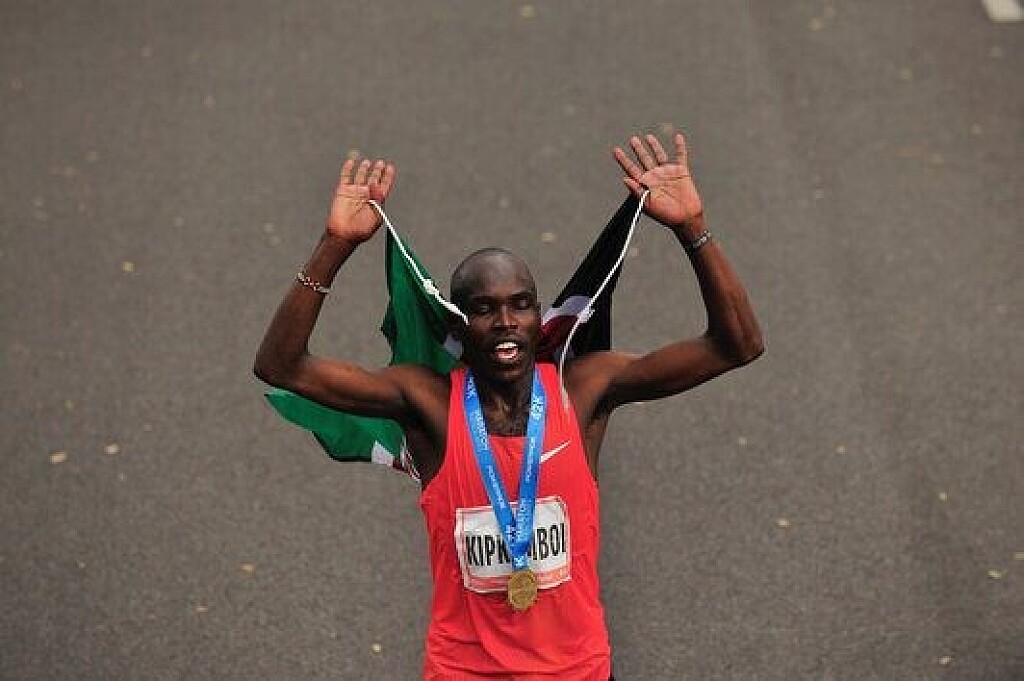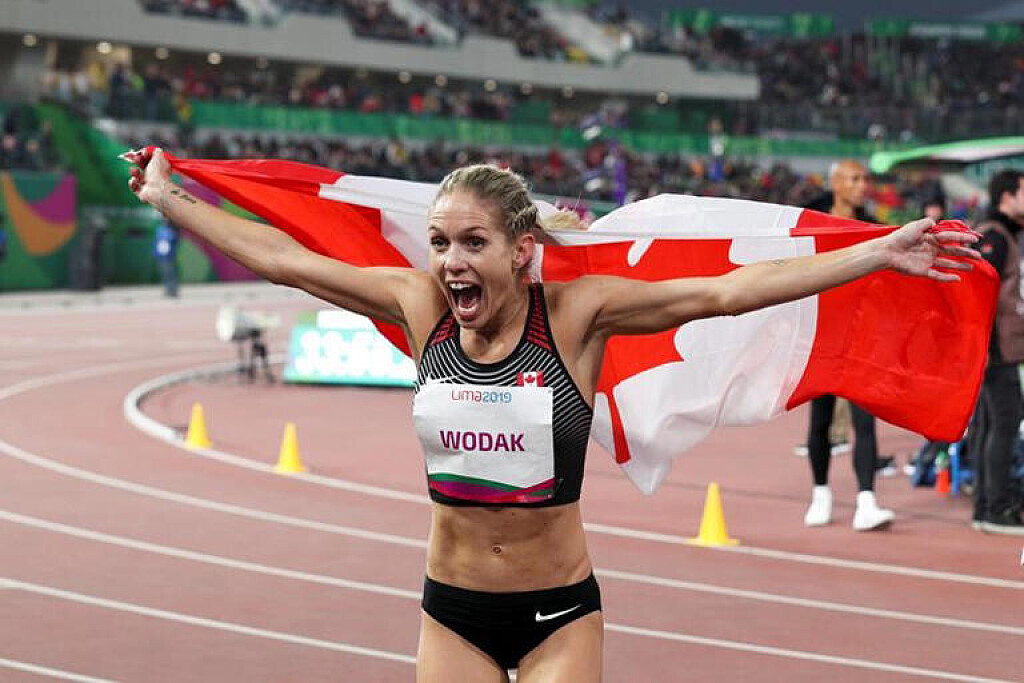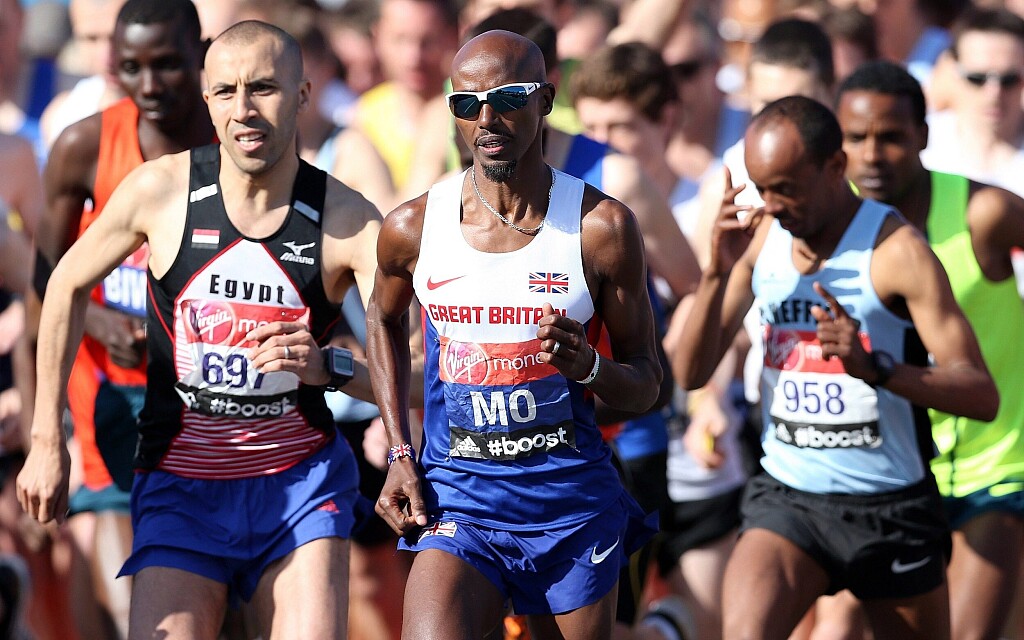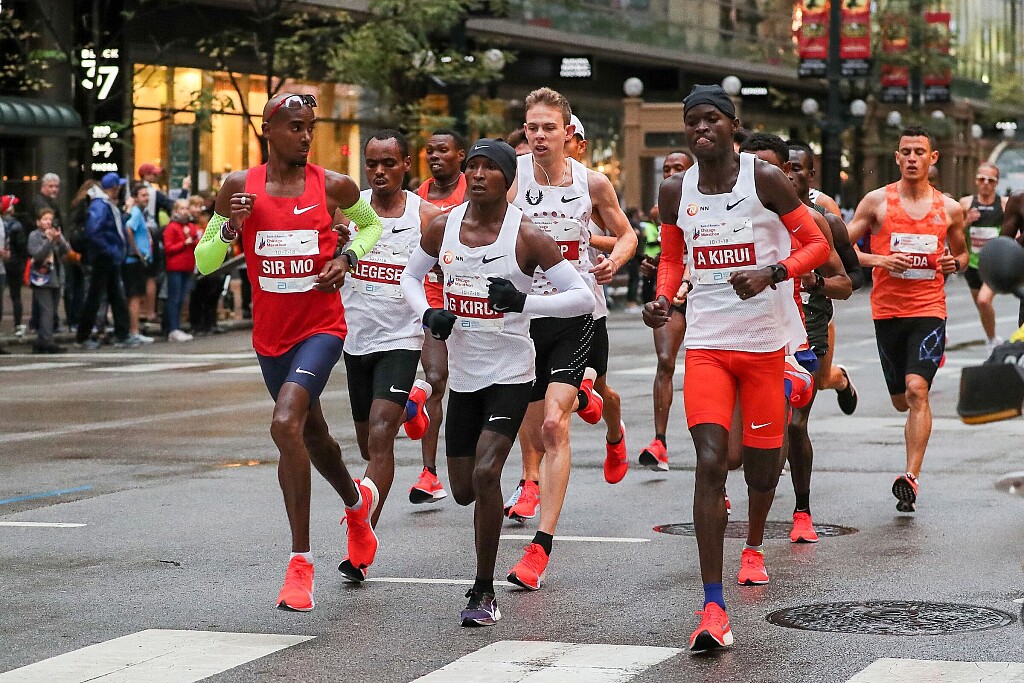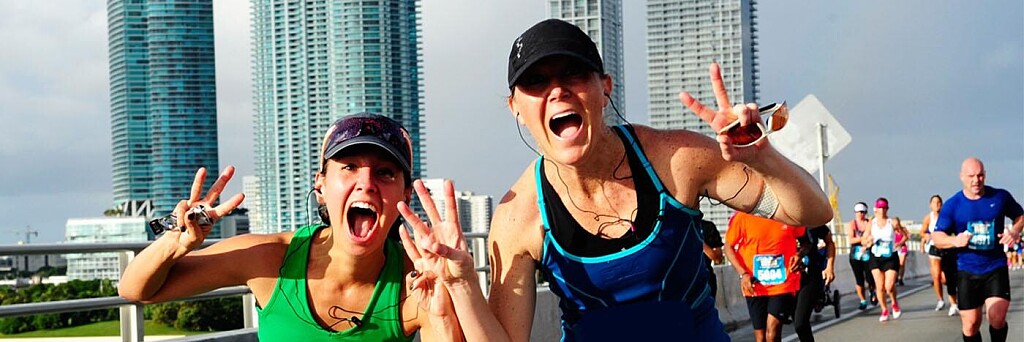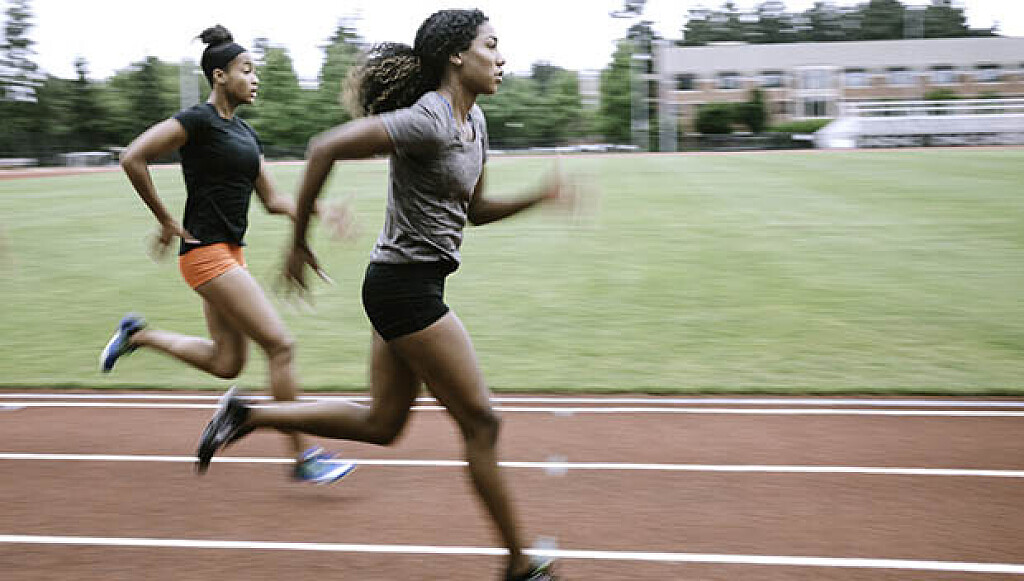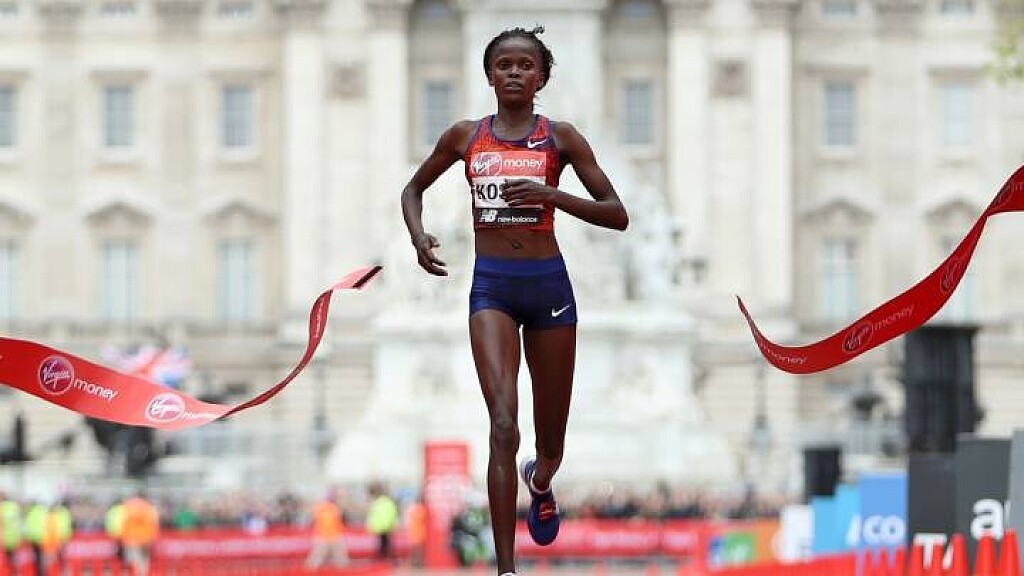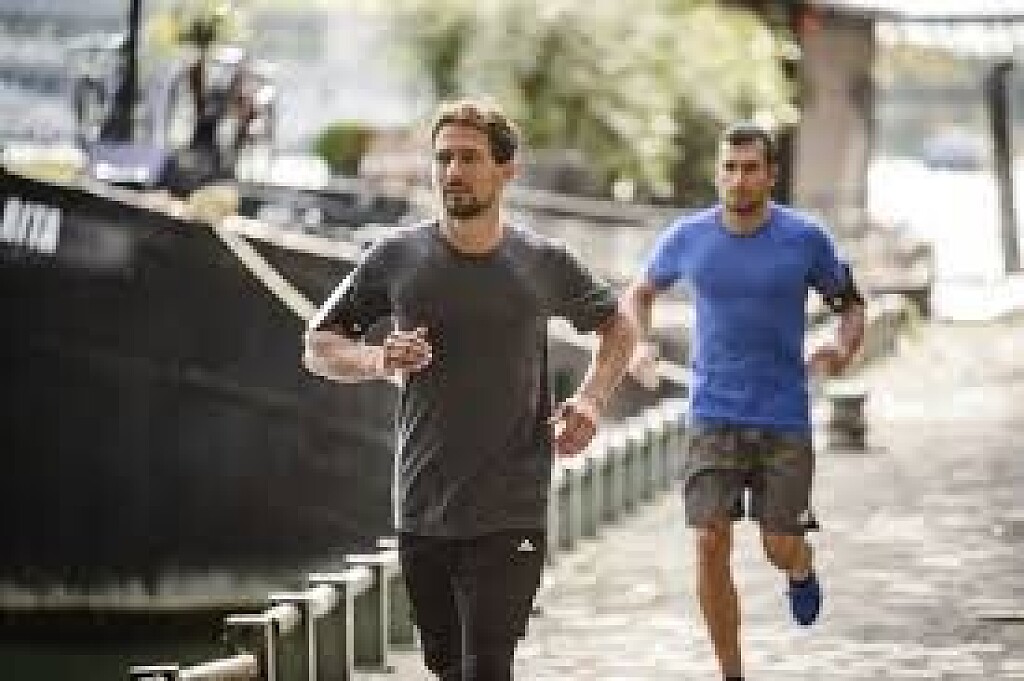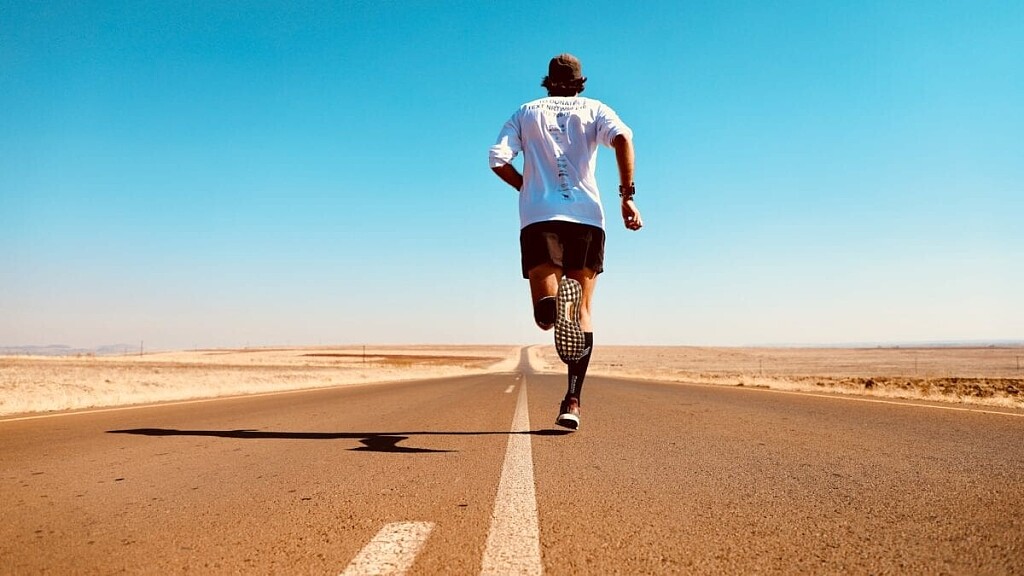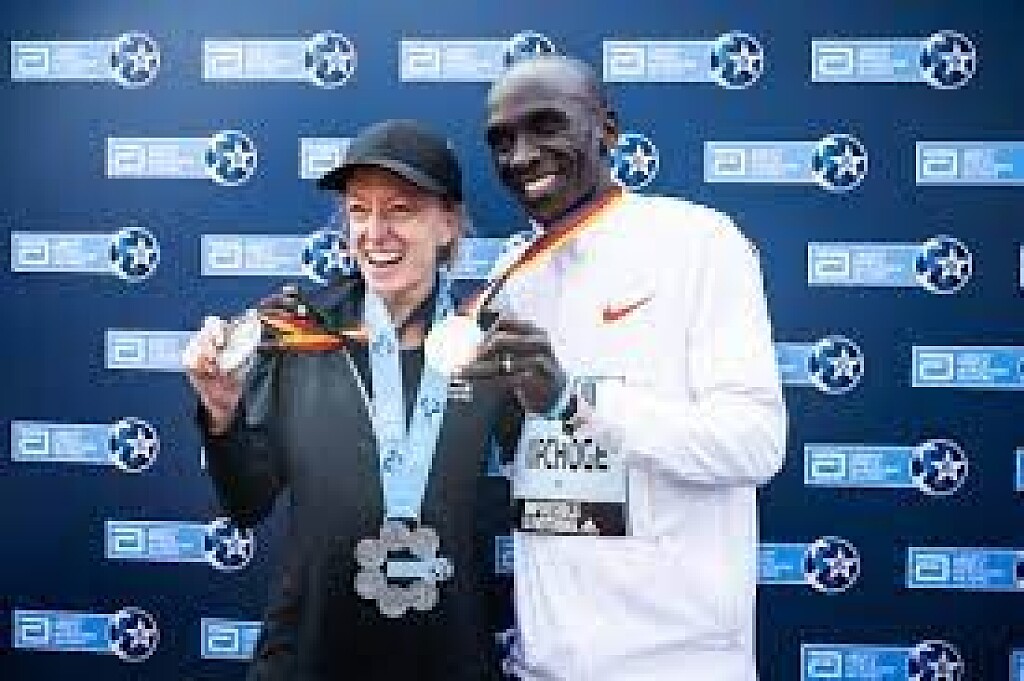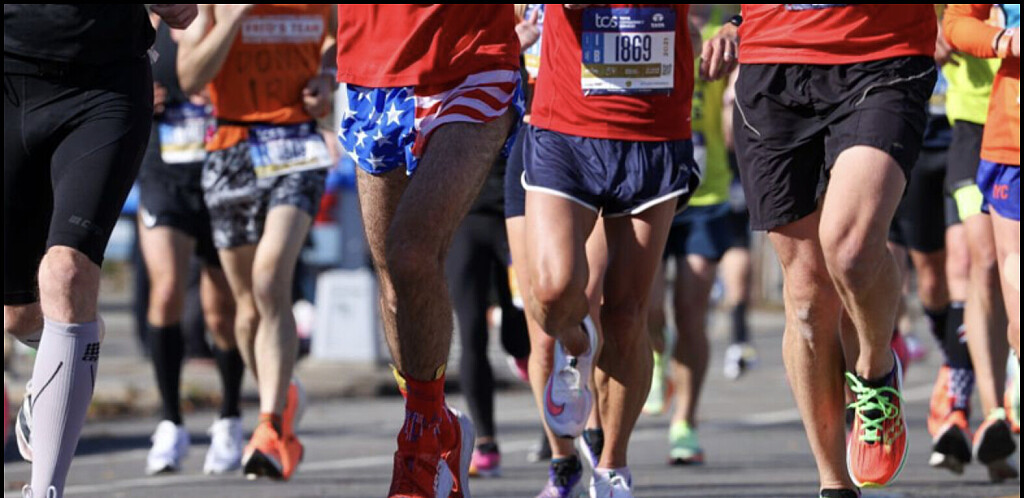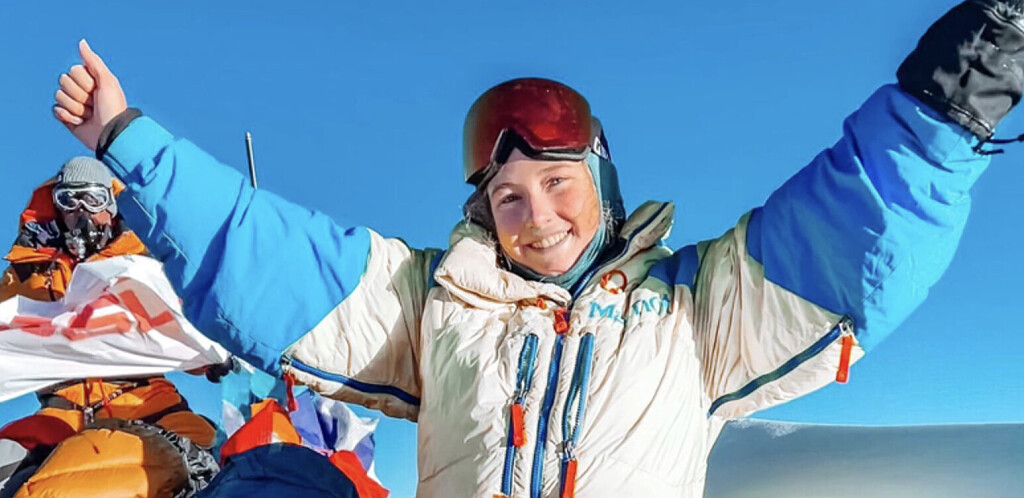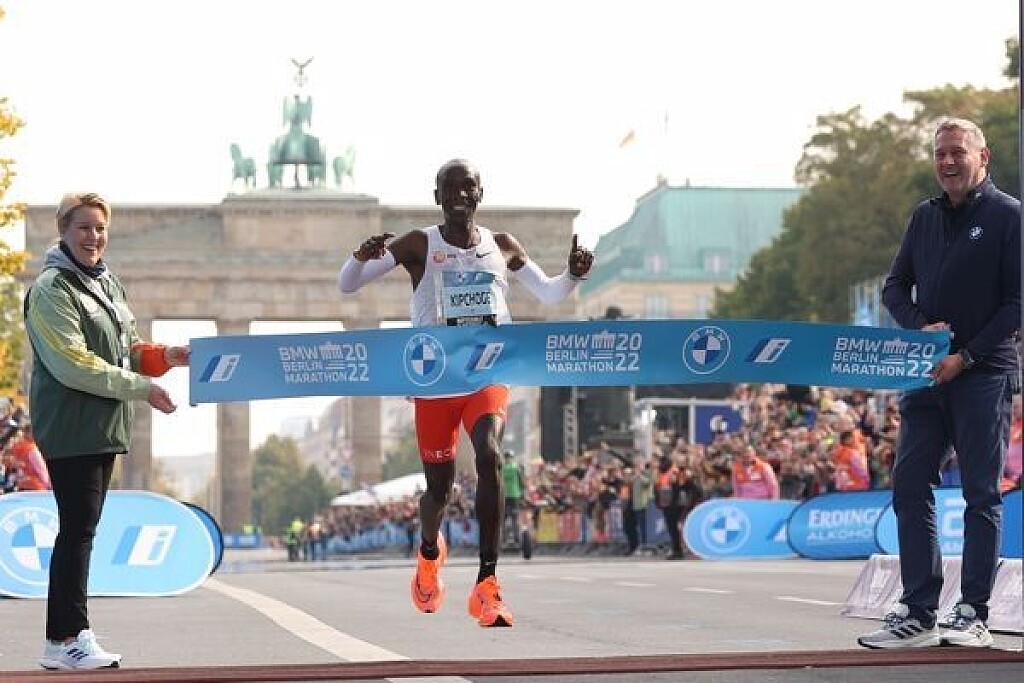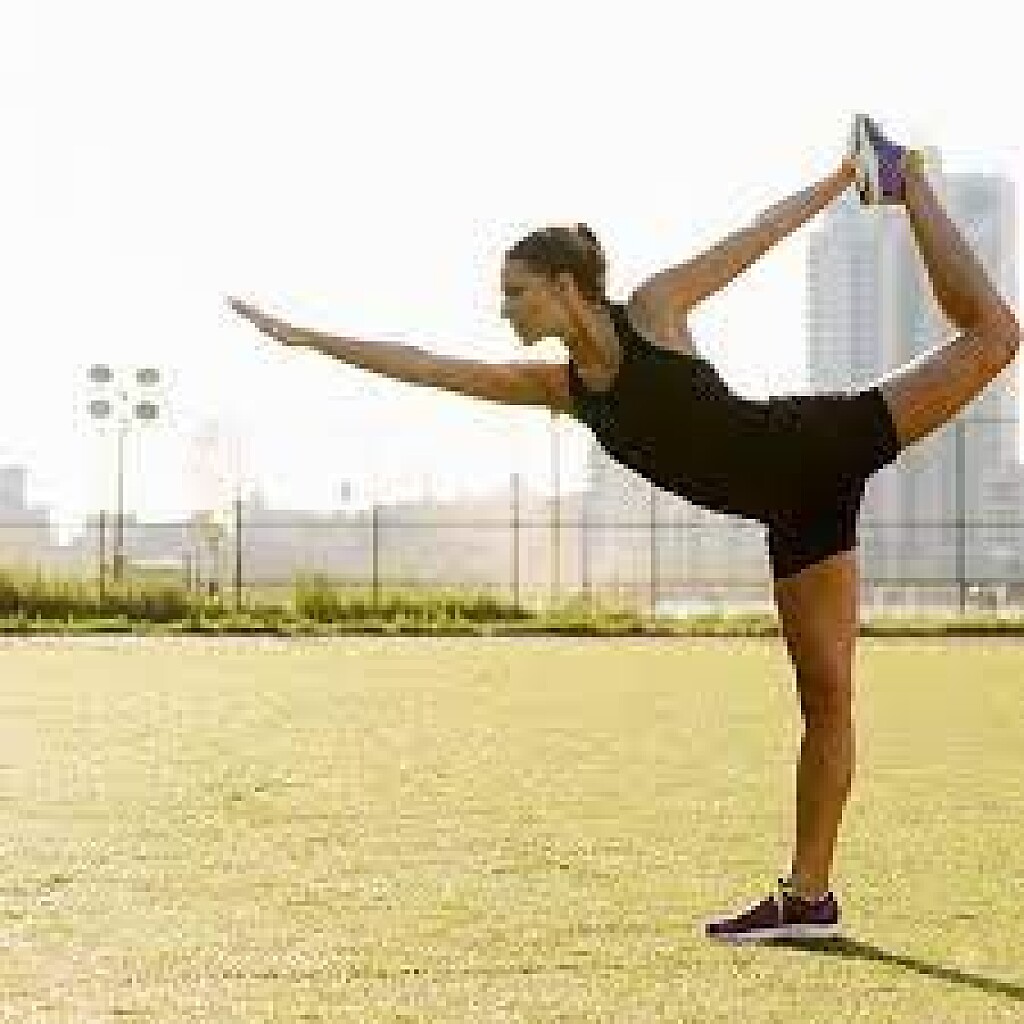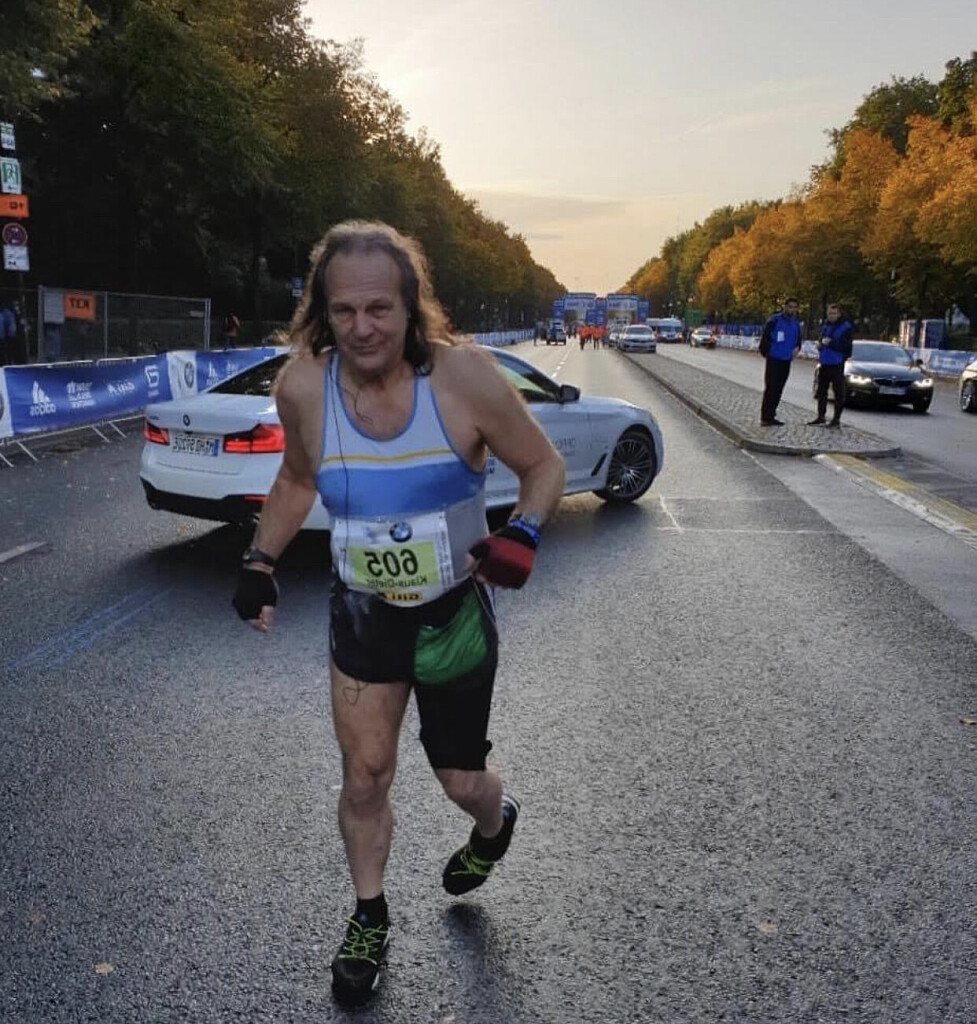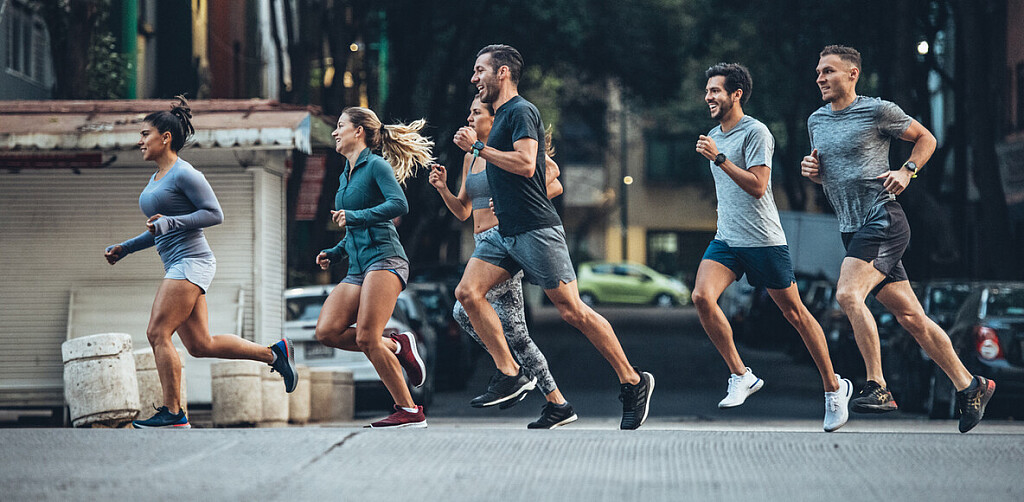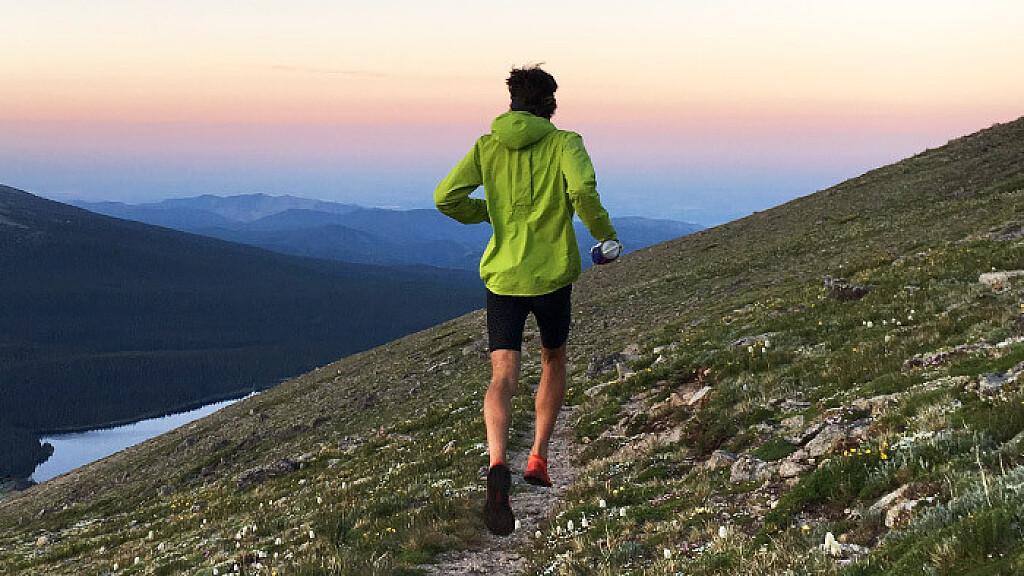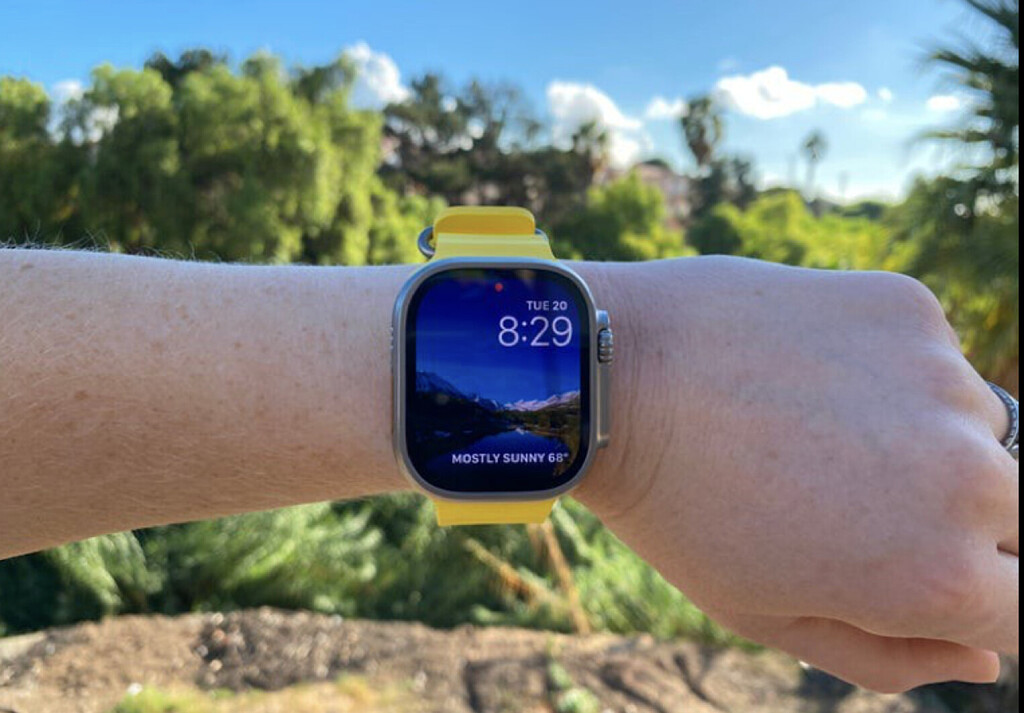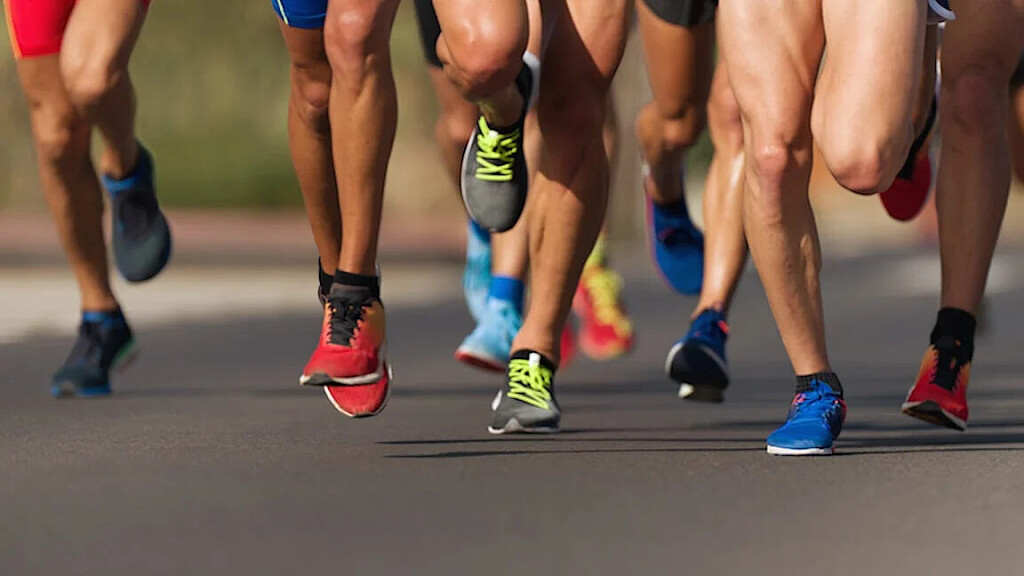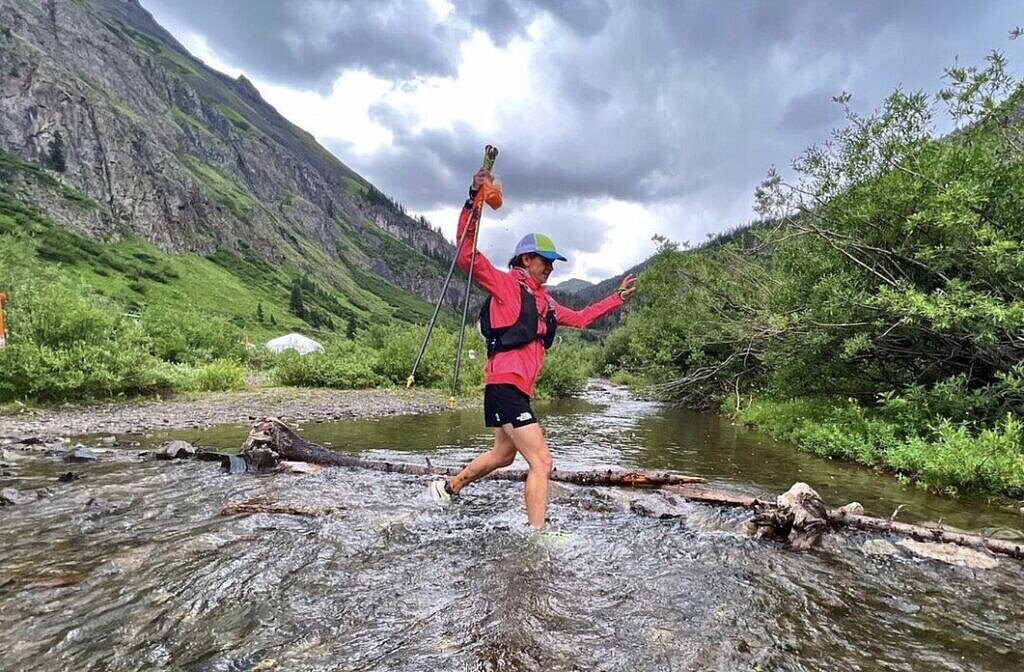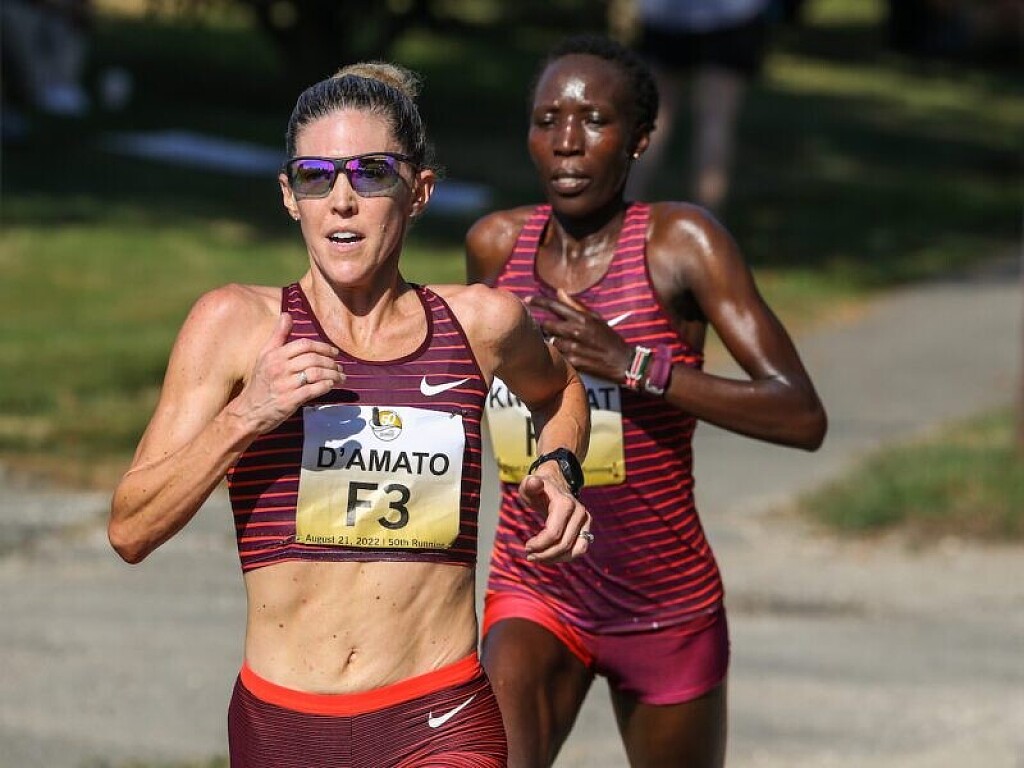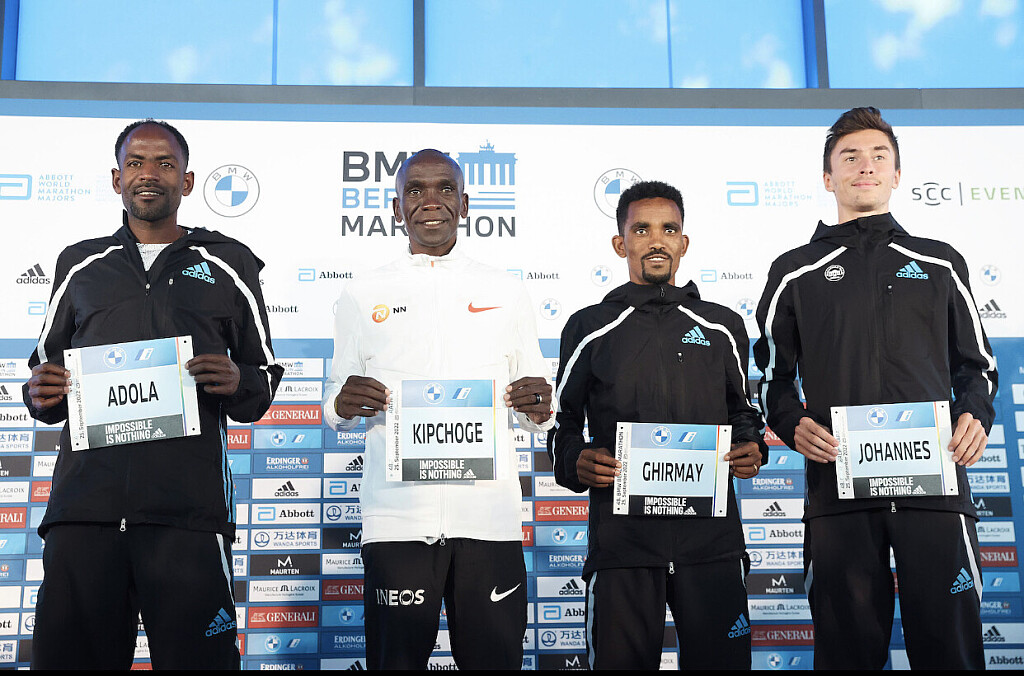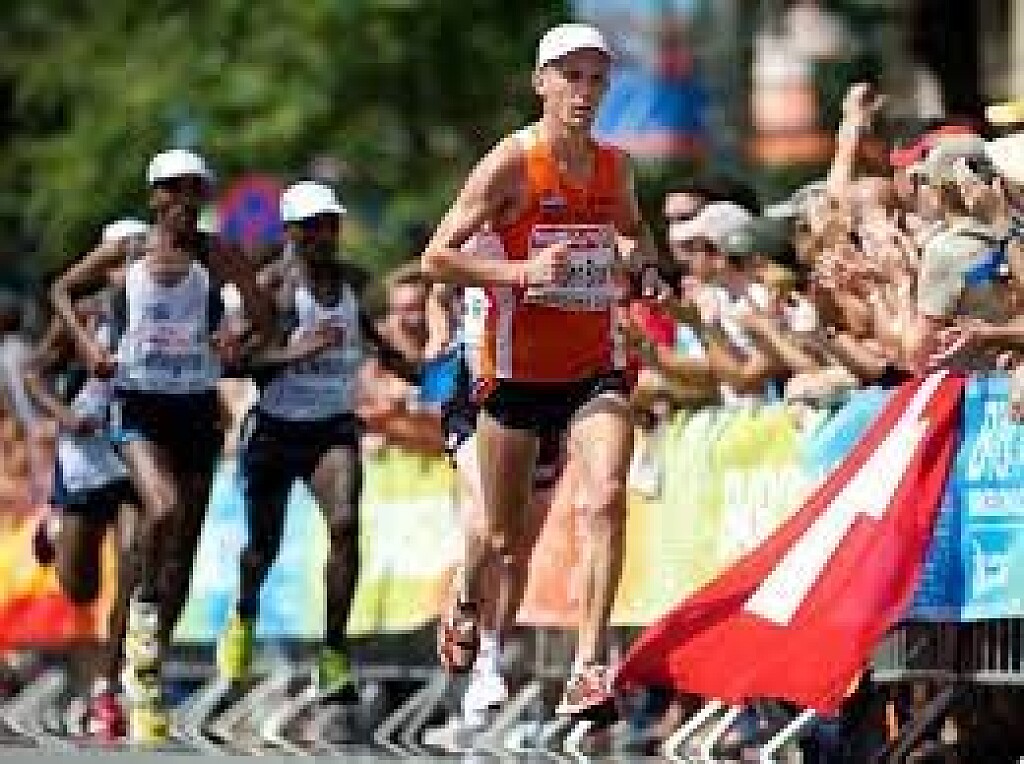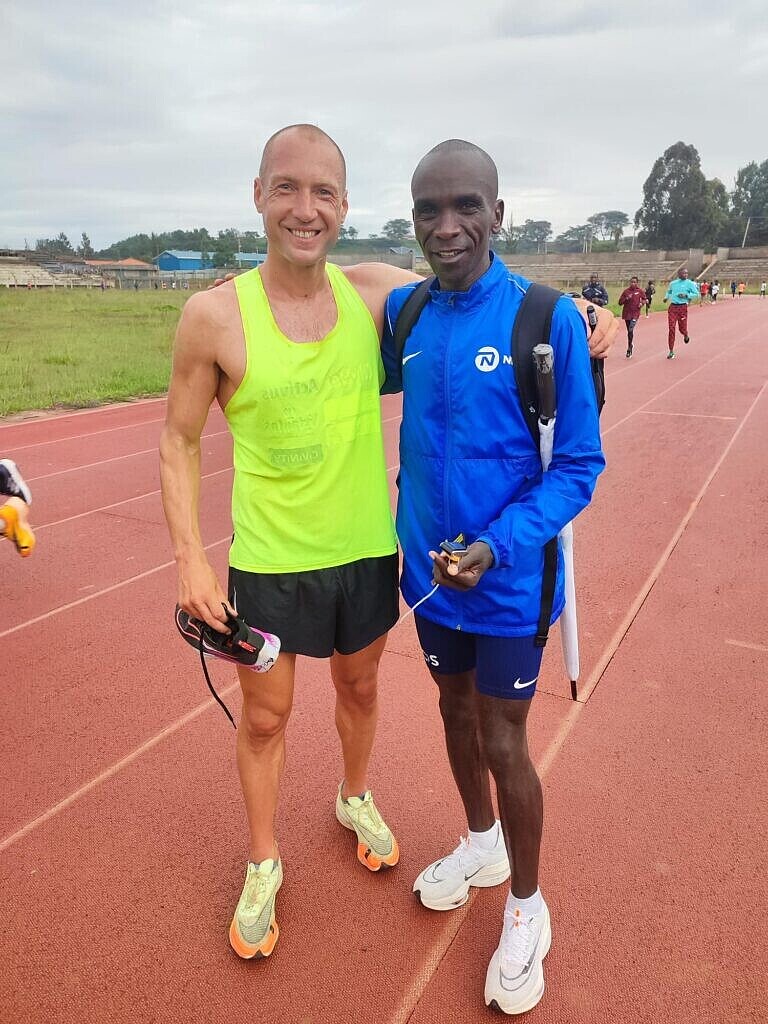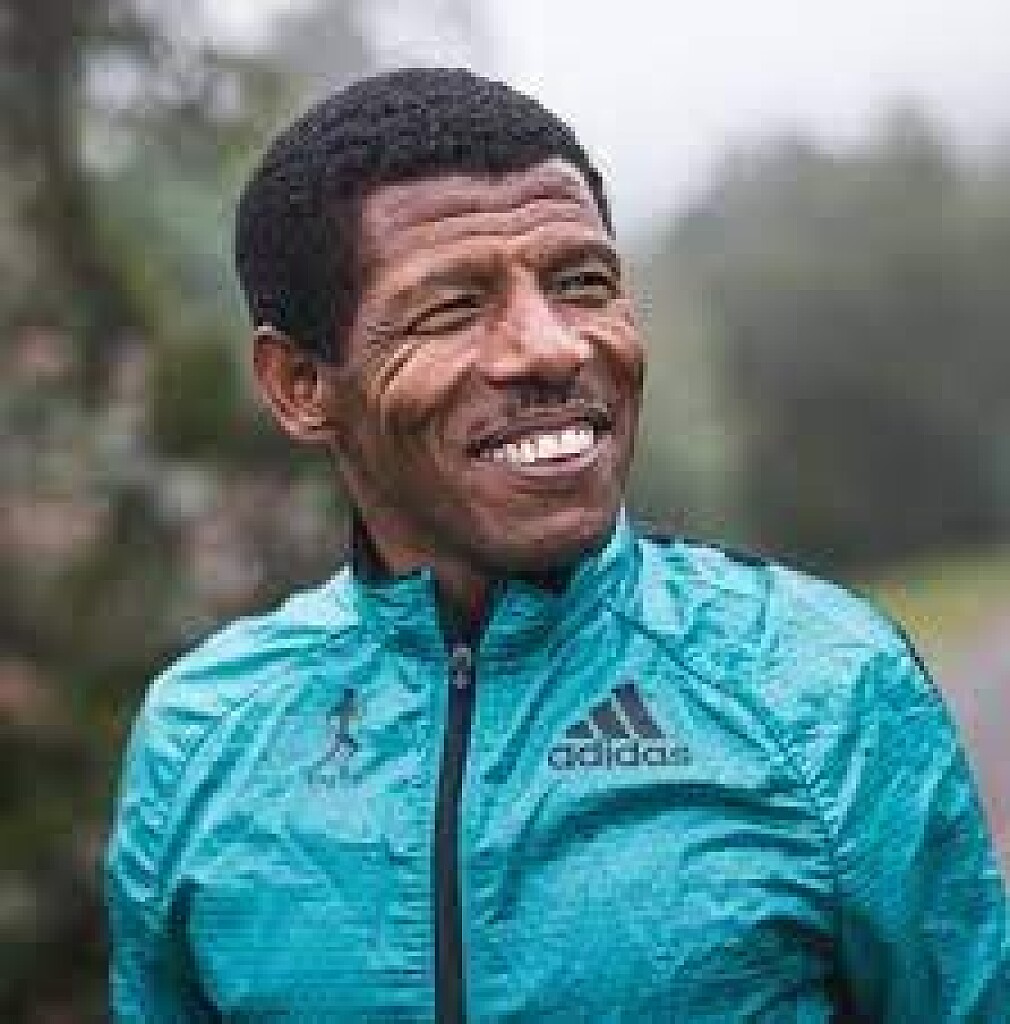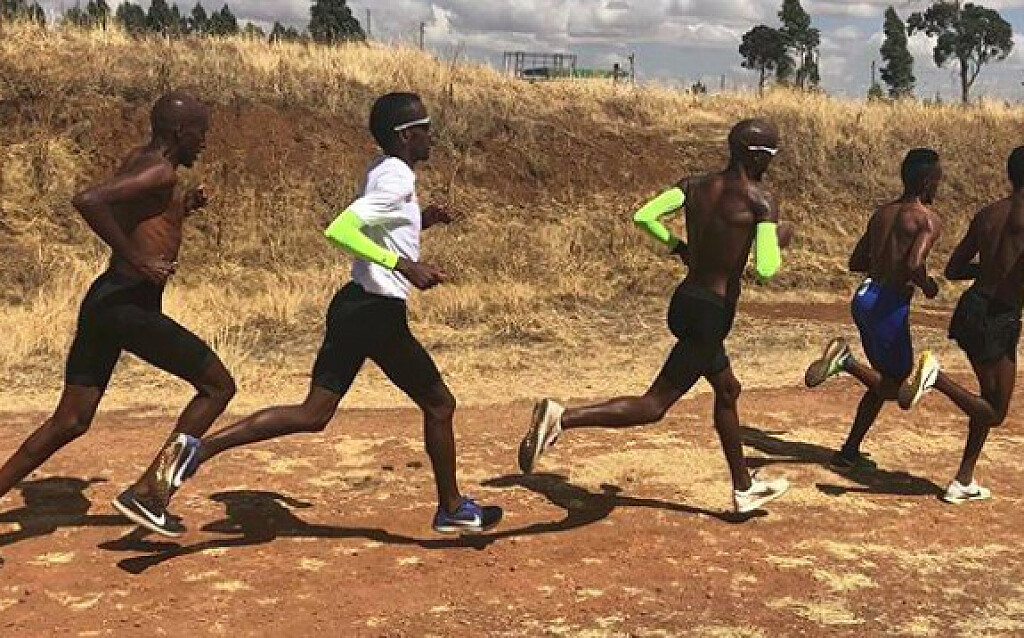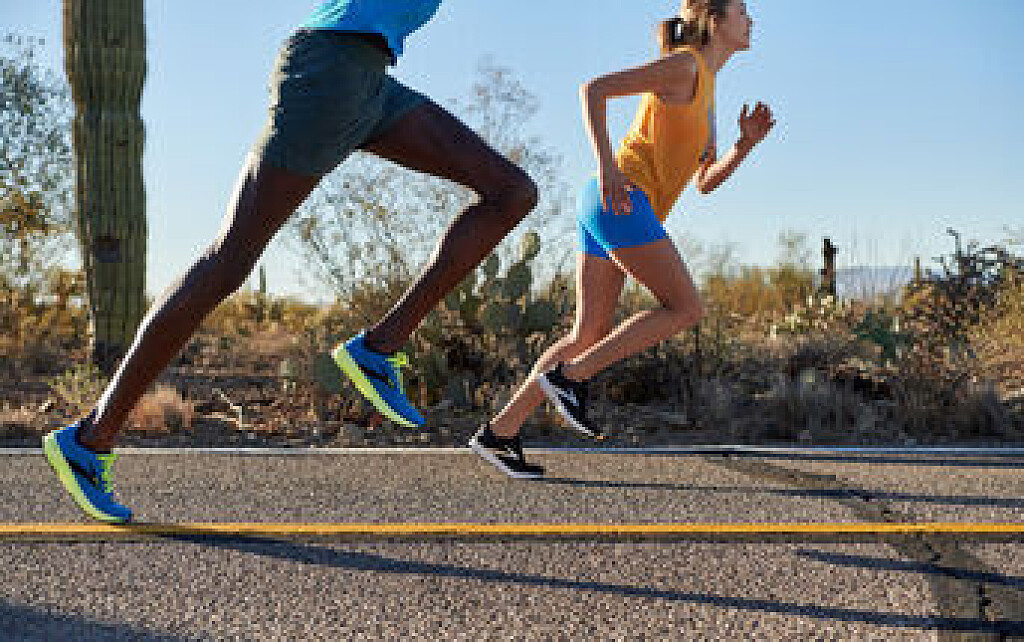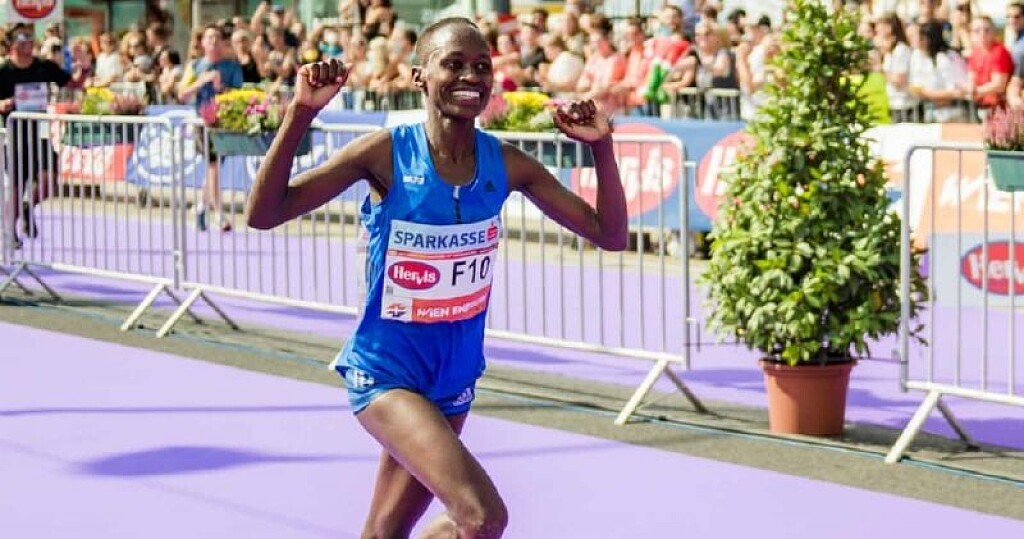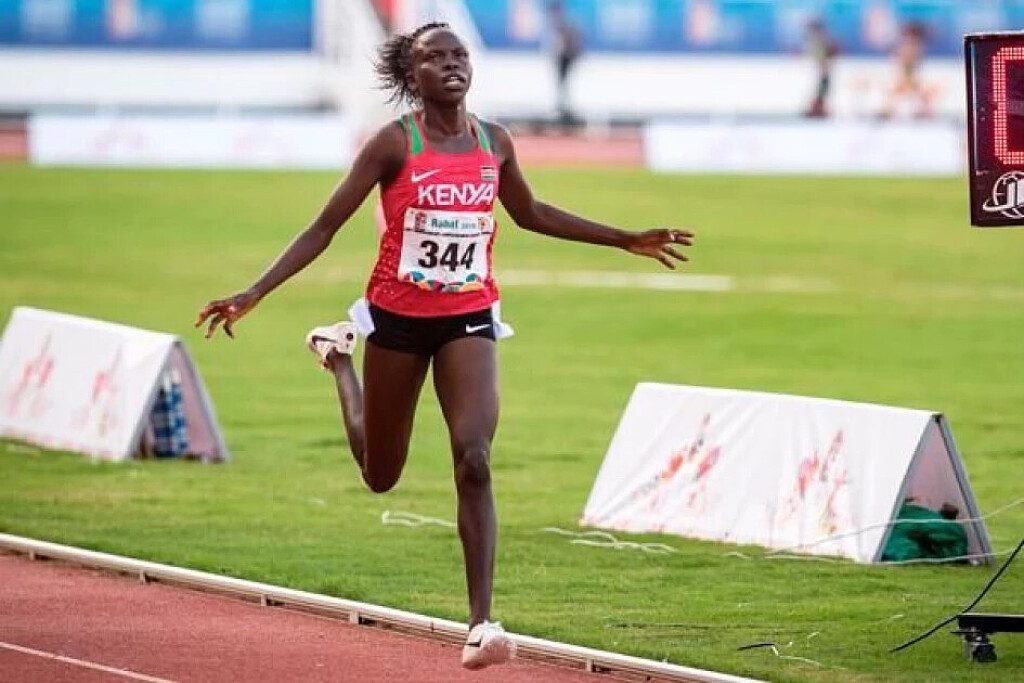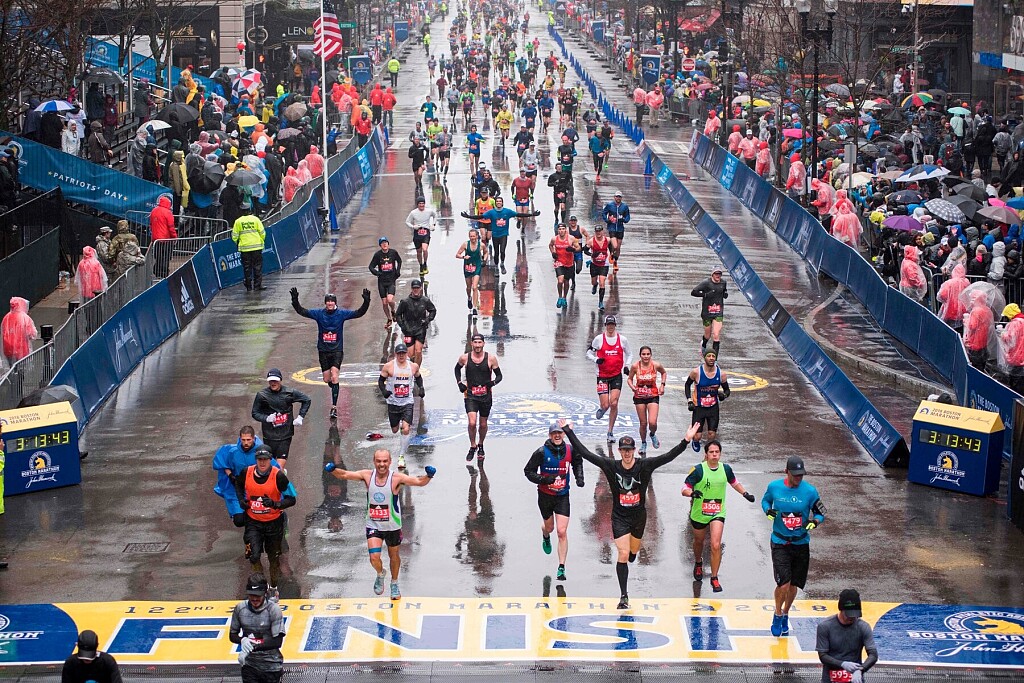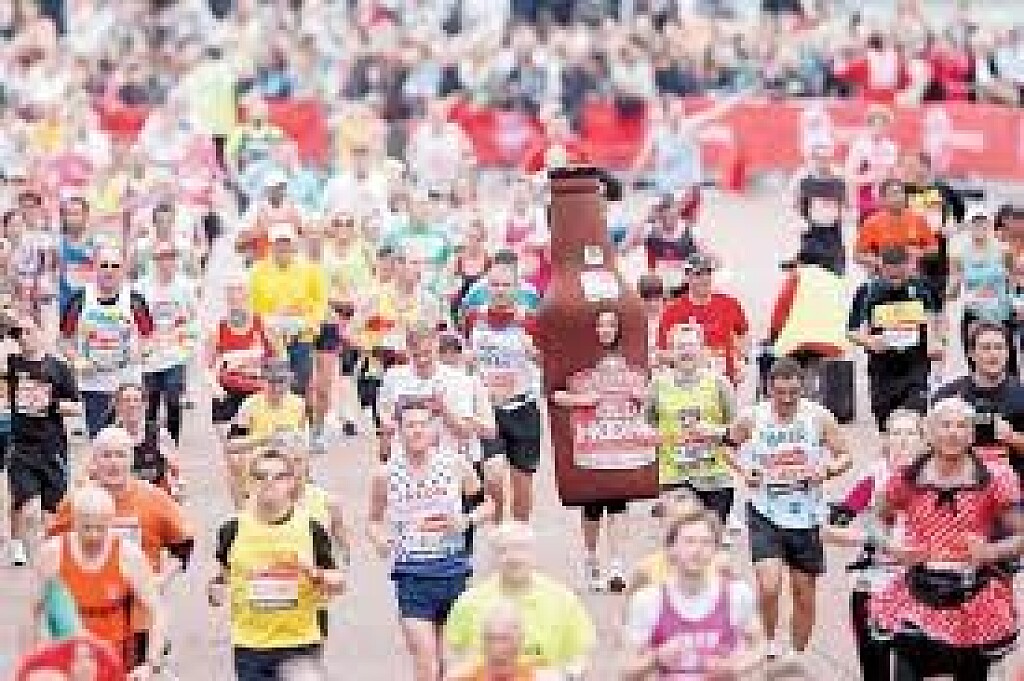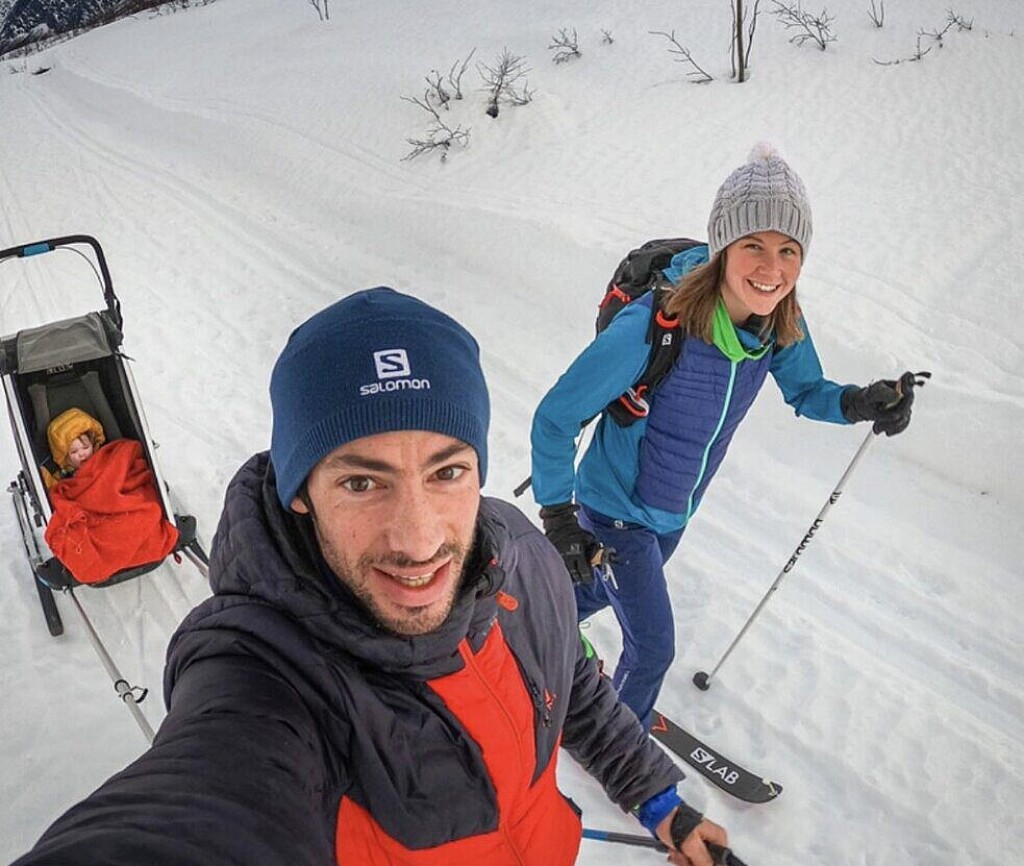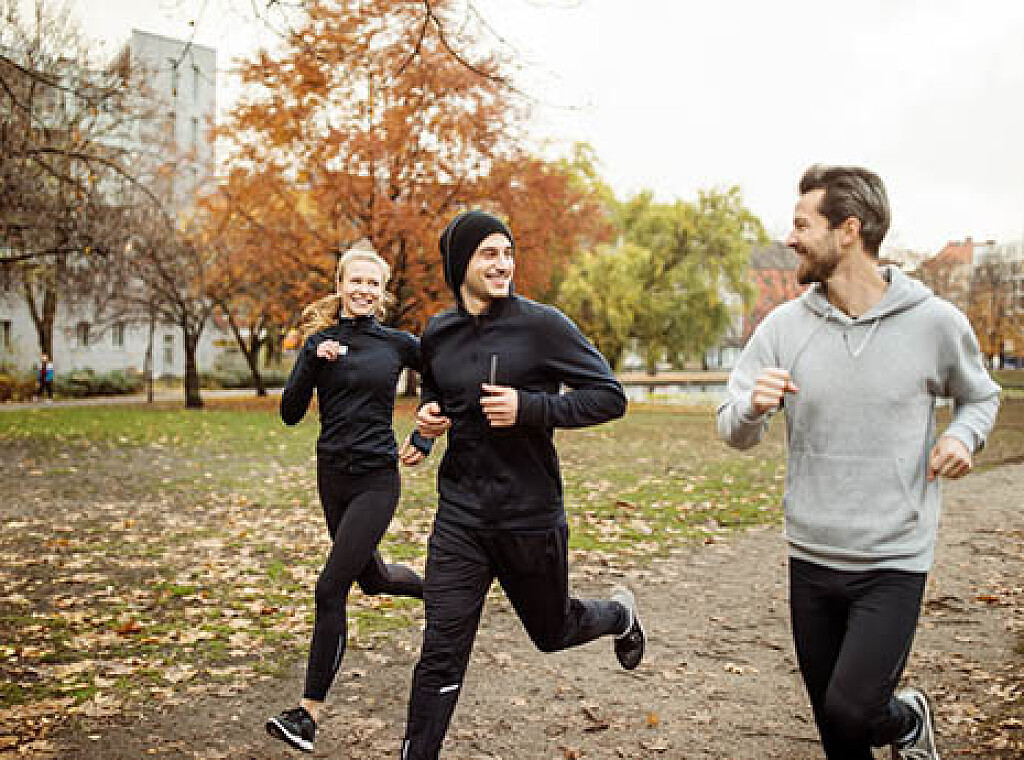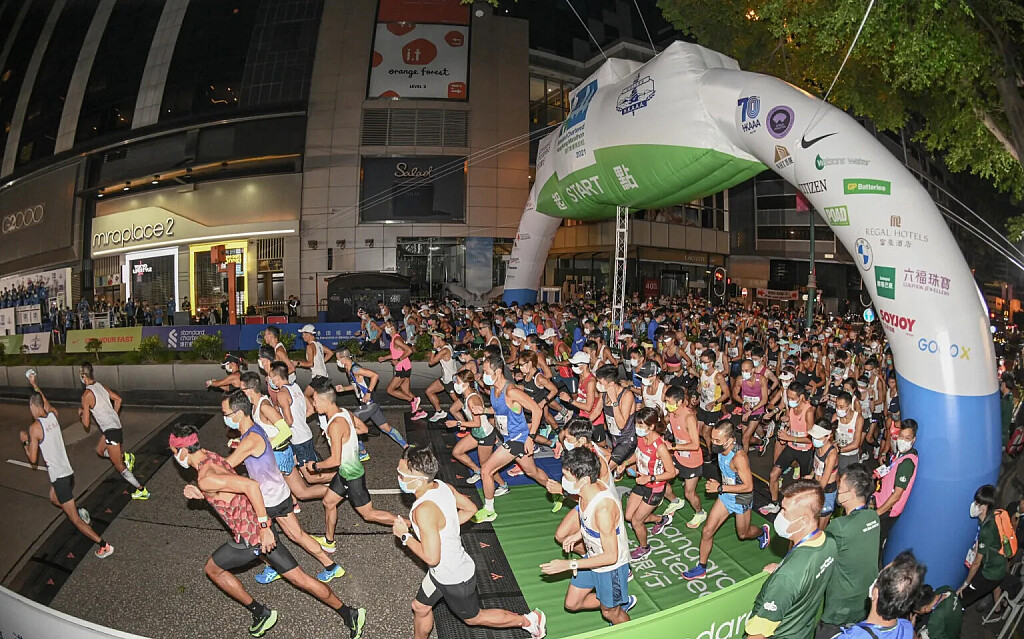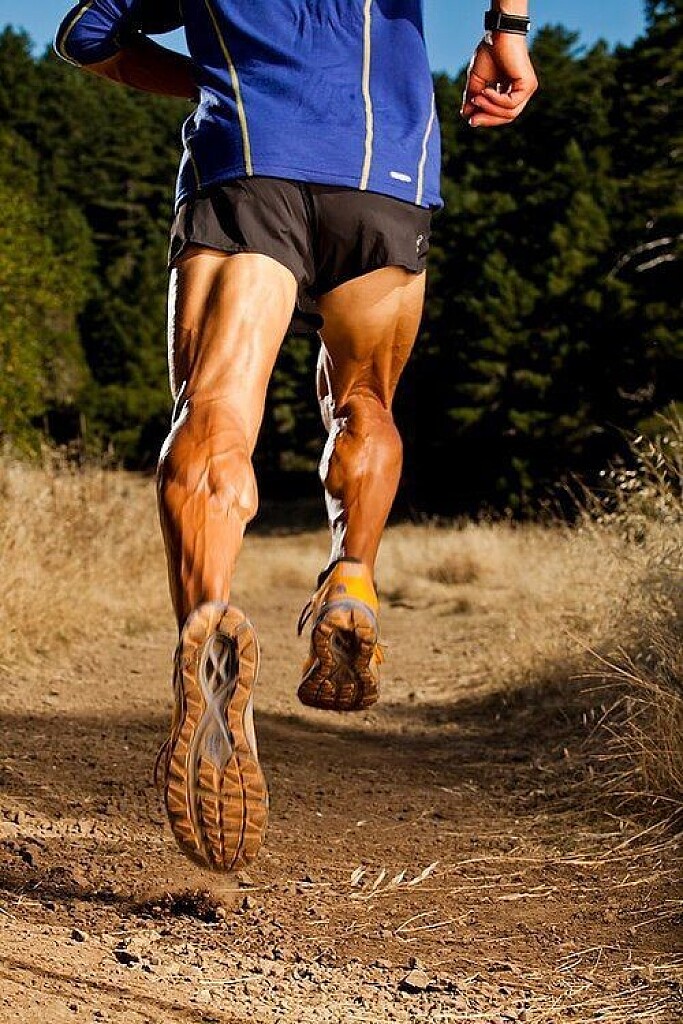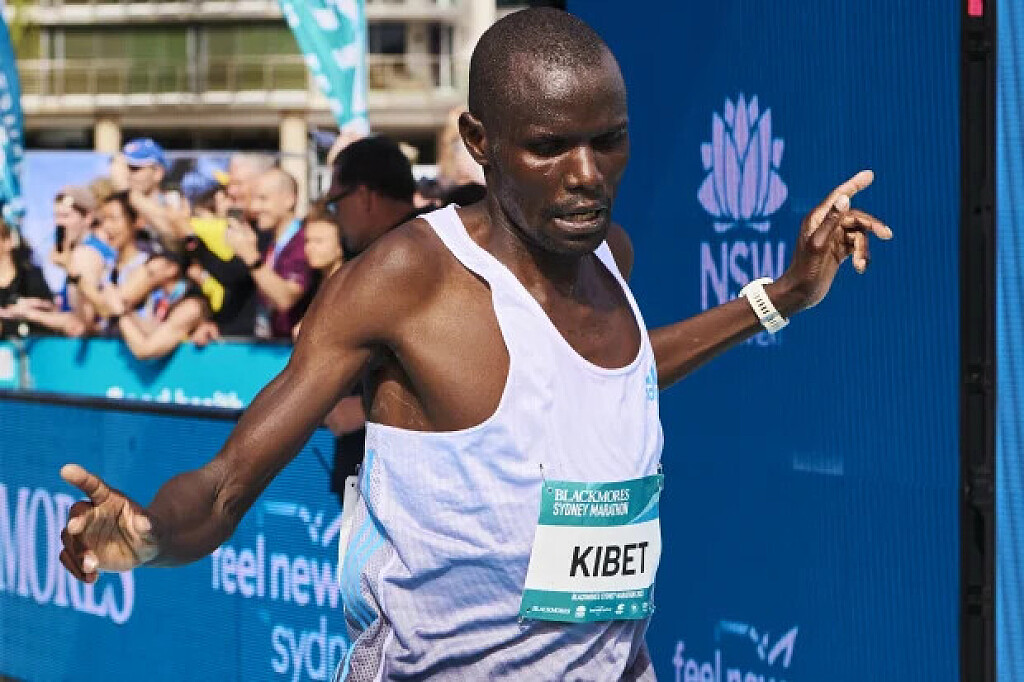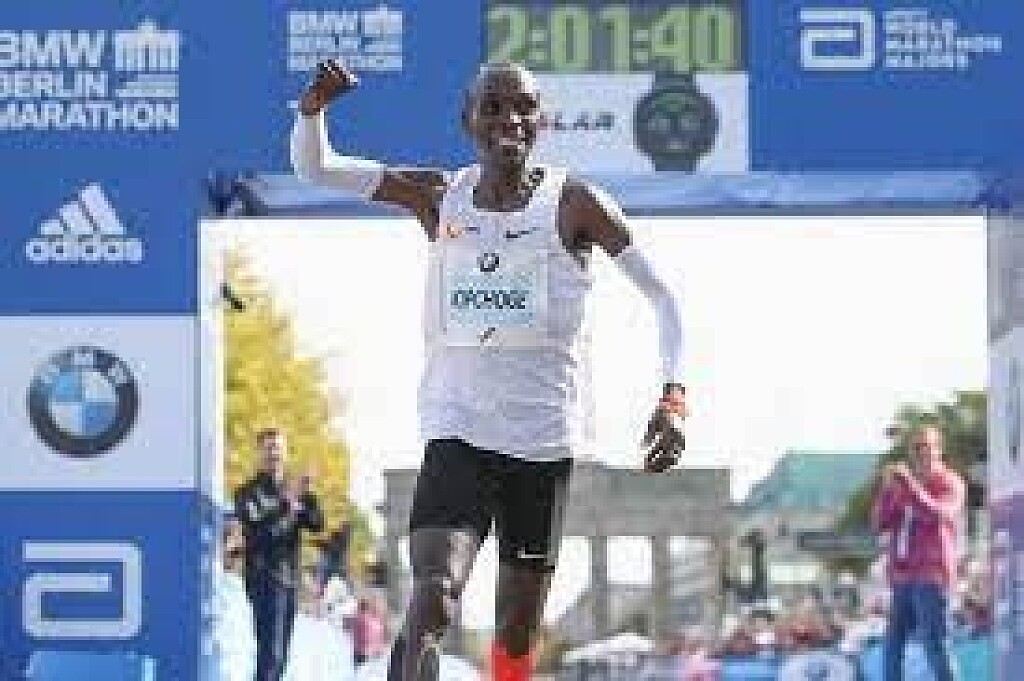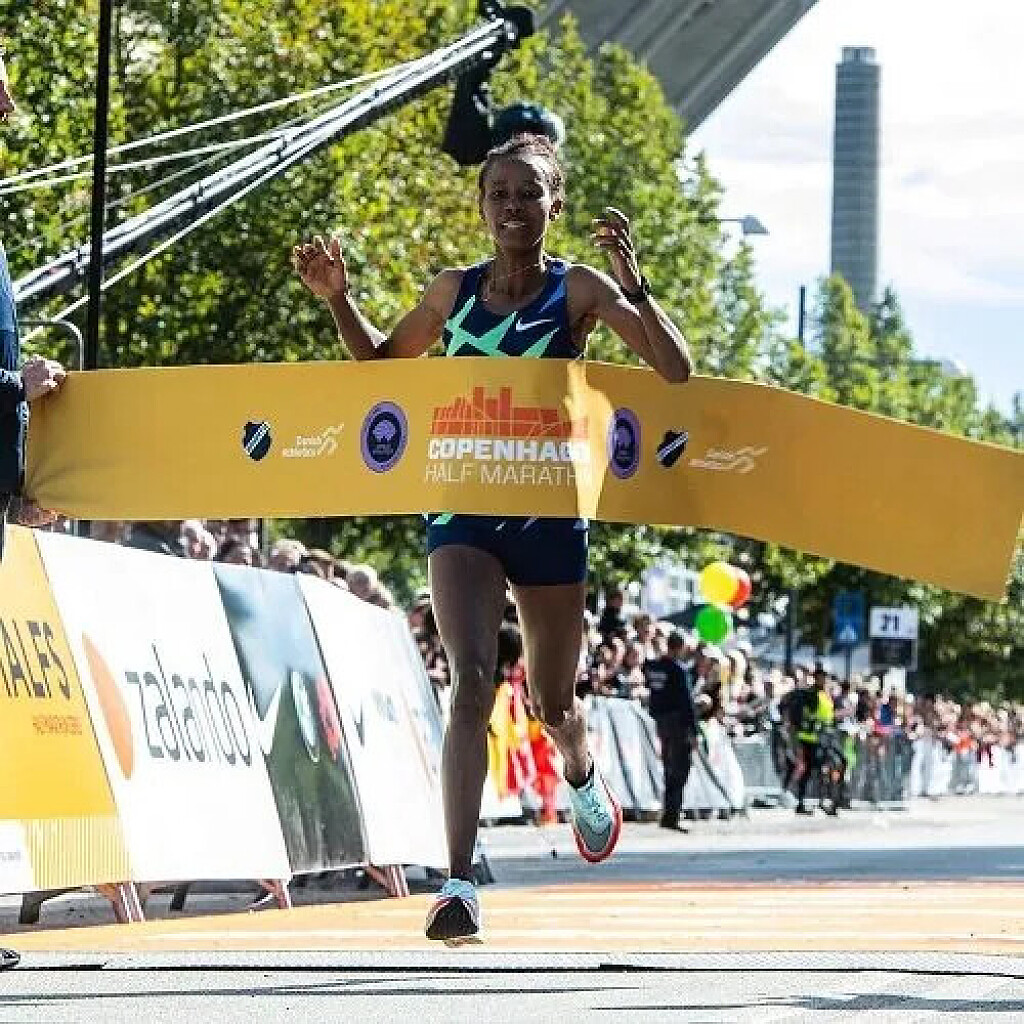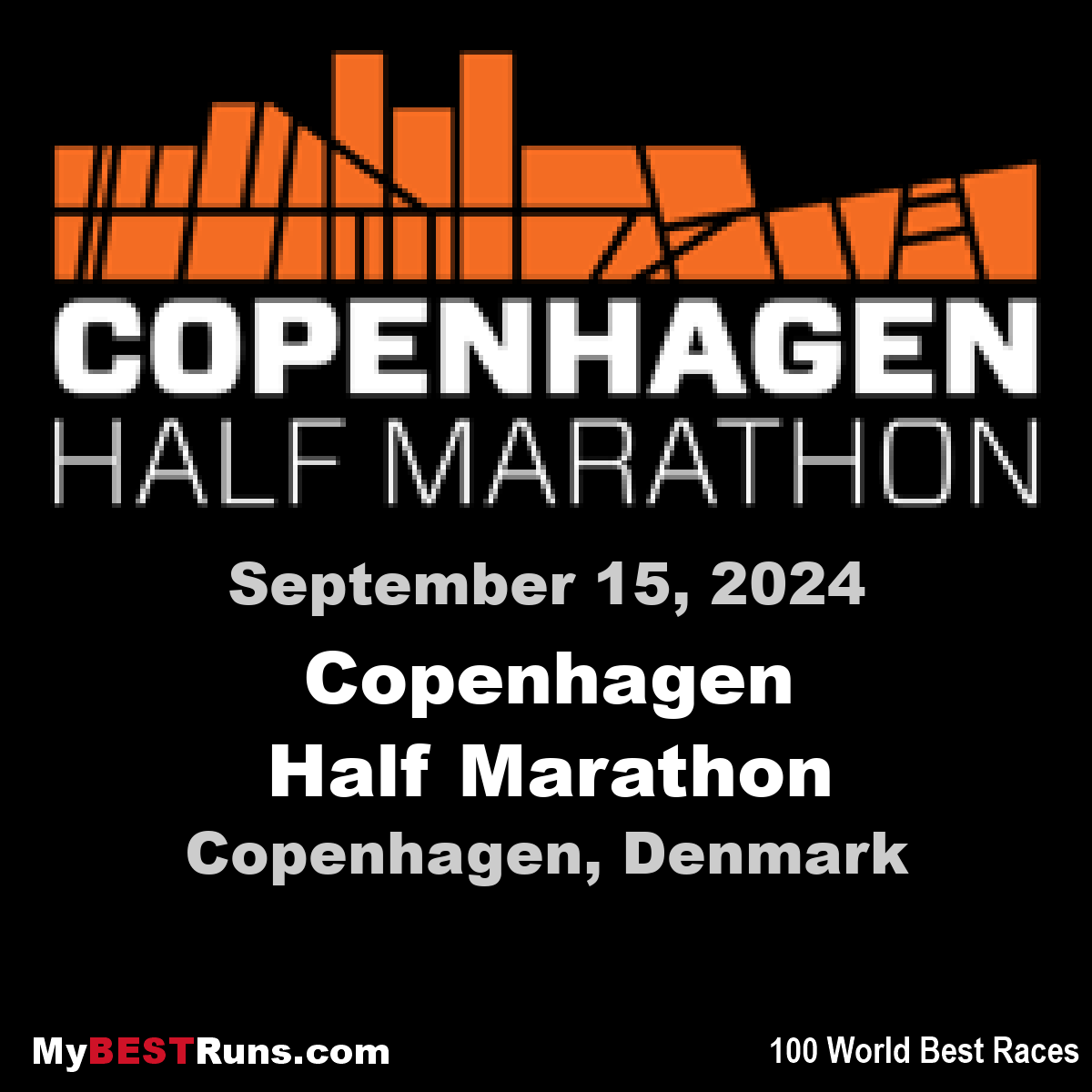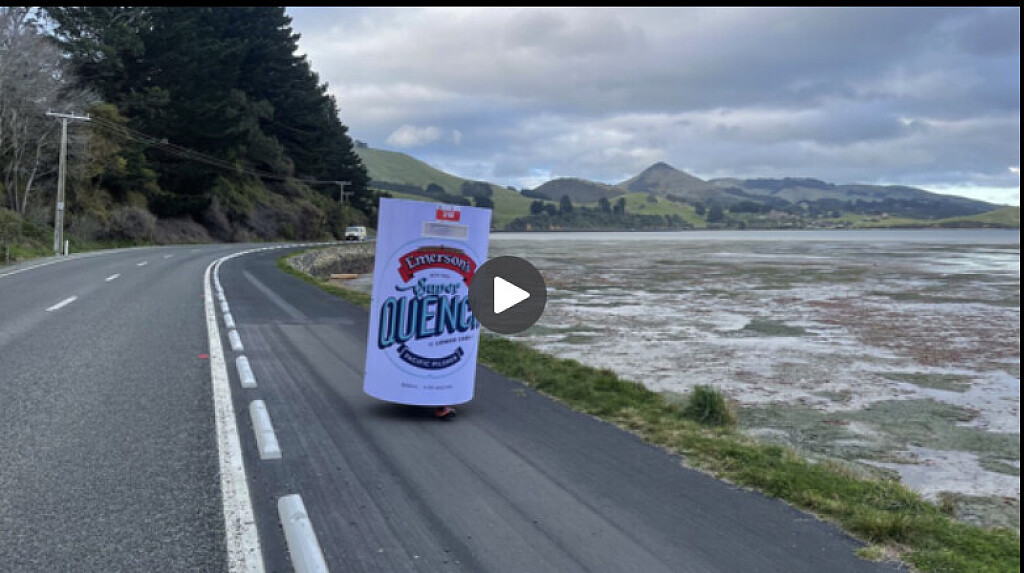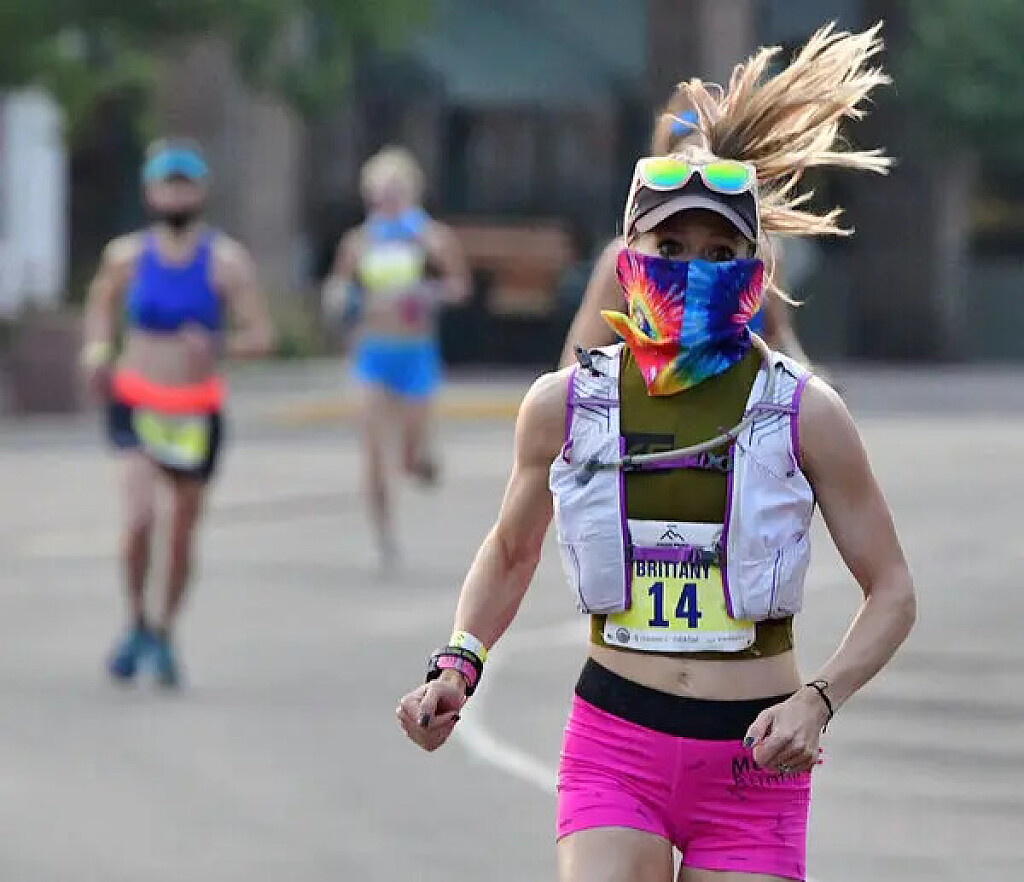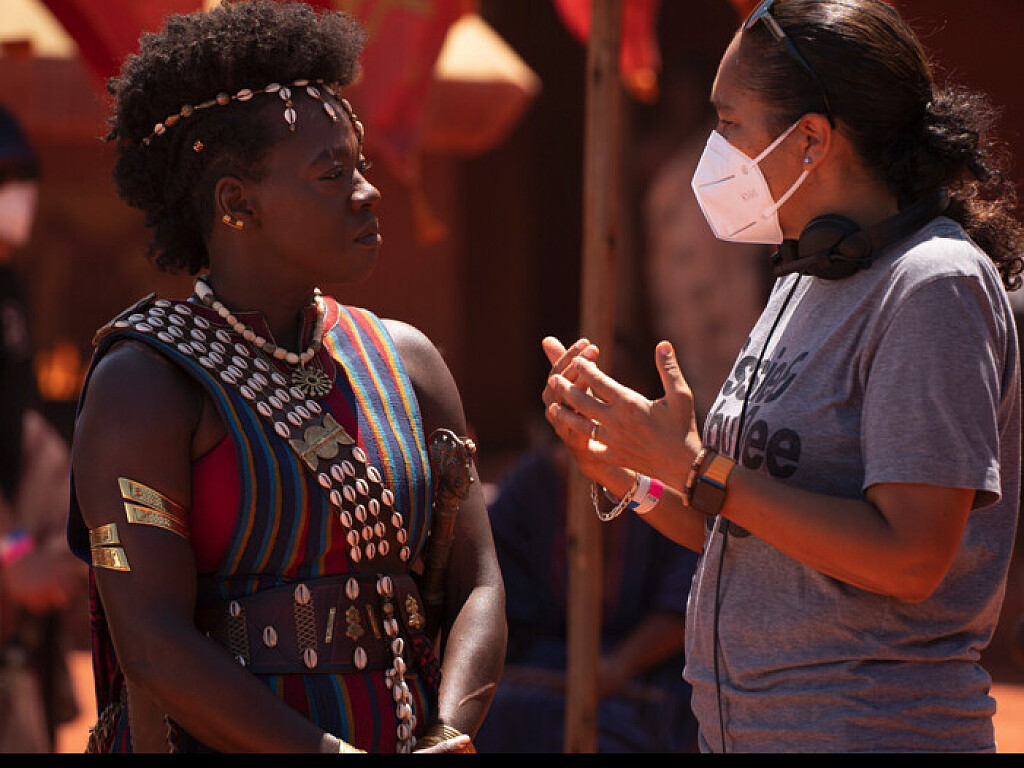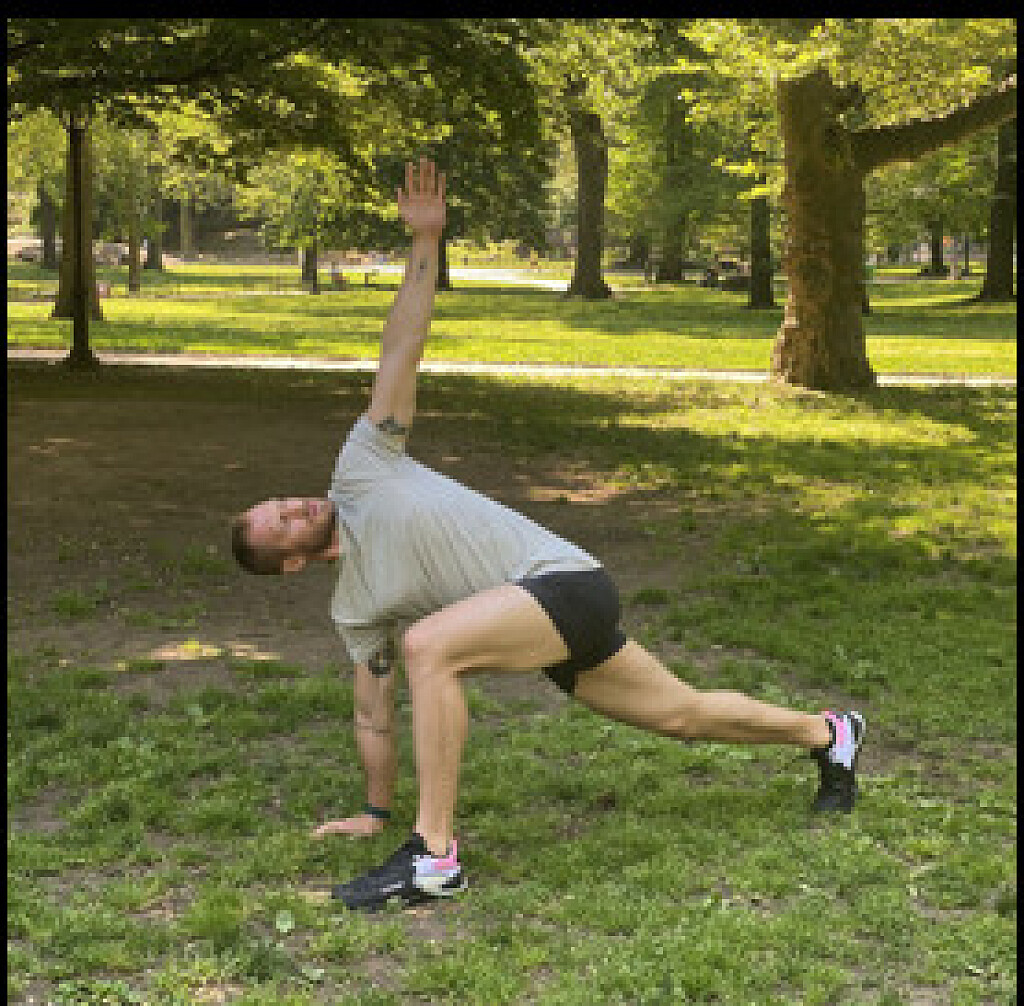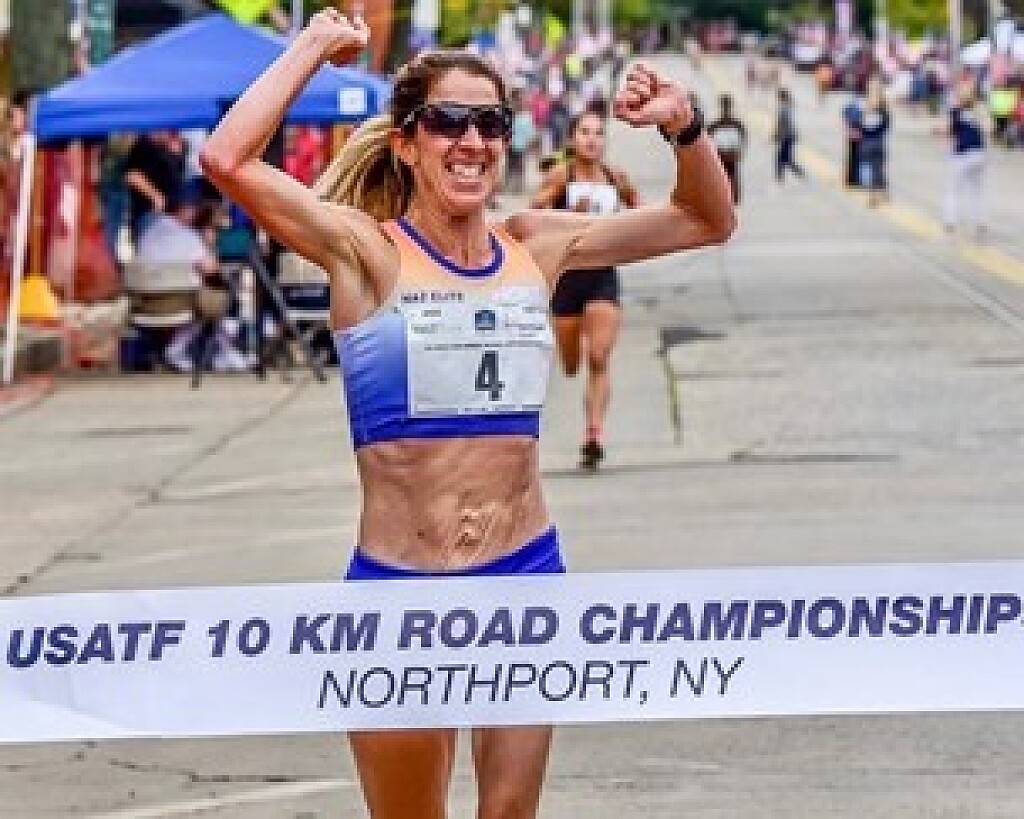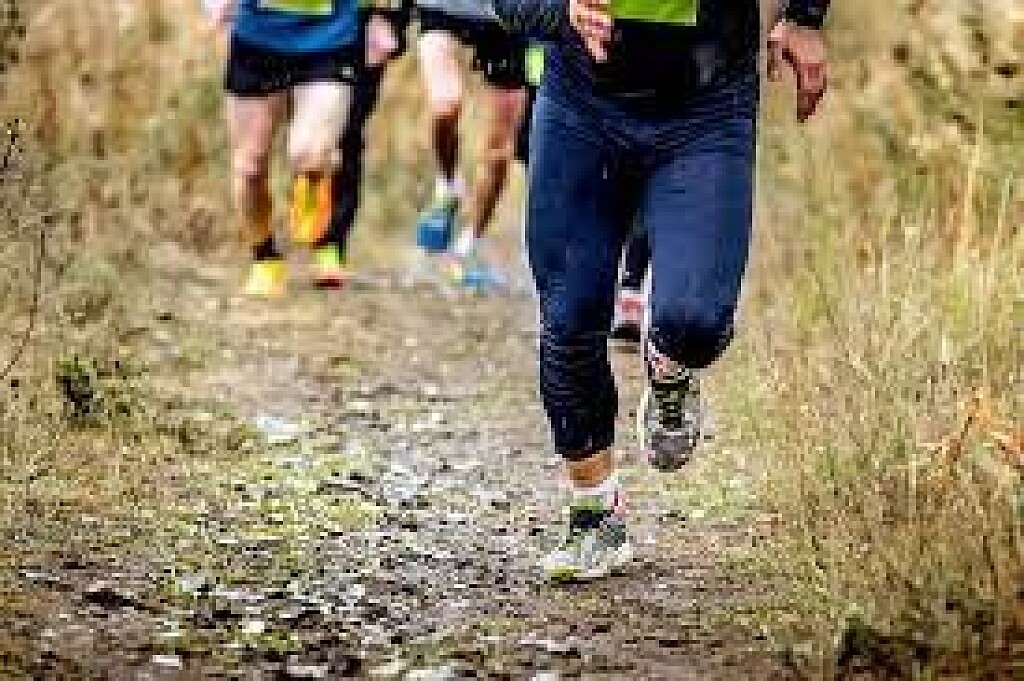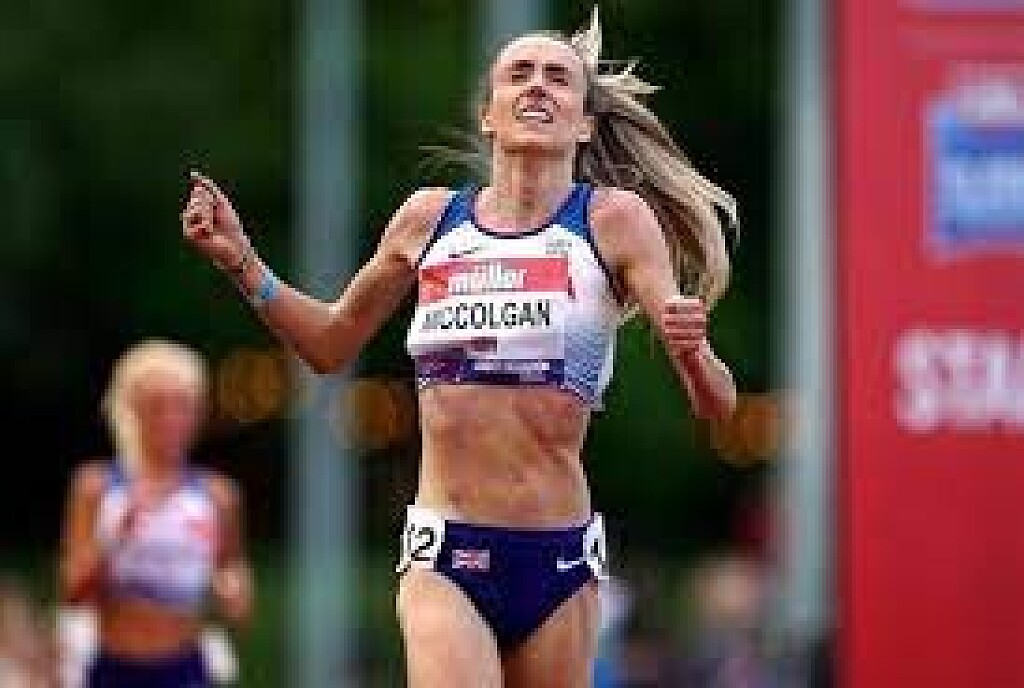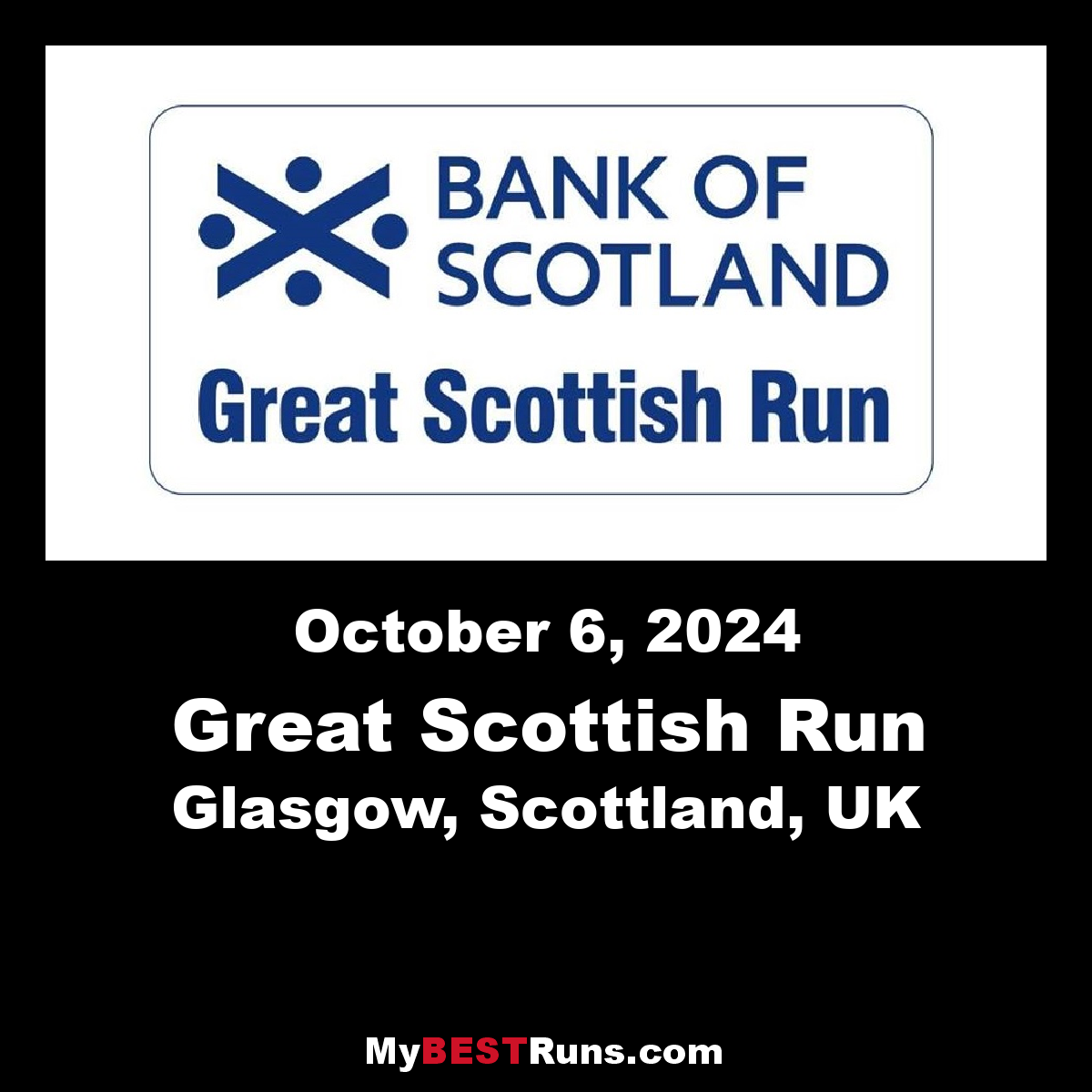Running News Daily
Running News Daily is edited by Bob Anderson in Mountain View, California USA and team in Thika Kenya, La Piedad Mexico, Bend Oregon, Chandler Arizona and Monforte da Beira Portugal. Send your news items to bob@mybestruns.com Advertising opportunities available. Over one million readers and growing. Train the Kenyan Way at KATA Running Retreat Kenya. (Kenyan Athletics Training Academy) in Thika Kenya. Opening in june 2024 KATA Running retreat Portugal. Learn more about Bob Anderson, MBR publisher and KATA director/owner, take a look at A Long Run the movie covering Bob's 50 race challenge.
Index to Daily Posts · Sign Up For Updates · Run The World Feed
Kenyan marathoner Emmanuel Saina faces three-year doping ban
One of Kenya’s top marathon-distance athletes, Emmanuel Saina, has been sanctioned with a three-year ban from competition for doping, the Athletics Integrity Unit (AIU) announced Monday.
With a marathon PB of 2:05:21 from the 2018 Buenos Aires International Marathon (where he also set the South American all-comers record), Saina was the 16th fastest marathon runner in the world that year, and when he last ran officially at the 2021 Rotterdam Marathon his 2:05:51 finish placed him 40th in the world. Saina won the 2021 Honolulu Marathon in 2:14:30, in race that featured Canadian Olympian Lanni Marchant taking the win on the women’s side.

The AIU requested an out-of-competition sample from the athlete in late August, resulting in a positive test for 19-norandrosterone (19-NA), a metabolite contained in nandrolone.
In early September, the AIU notified Saina of the findings of his sample and his violation of the World Anti-Doping Agency’s rules. Saina was also informed of his rights in this situation, which includes the option of admitting to the violation and benefiting from a one-year reduction to his automatic four-year sentence. The AIU received a form of admission and acceptance of consequences signed by Saina on Sept. 17.

Because of Saina’s early admission, his sentence will receive a one-year reduction, resulting in a period of ineligibility of three years beginning Sept. 9, 2022, and the disqualification of his results since Aug. 17, 2022, including the forfeiture of any titles, awards, medals, points prizes and appearance money. Saina waived his right to have a tribunal or to appeal.
The performance-enhancing nandrolone is also what former American Olympian Shelby Houlihan was sanctioned for in 2021. Houlihan contested her ban, arguing that the substance came from pig offal contained in a burrito she ate the day before her out-of-competition test.
The CAS did not accept her explanation and upheld the AIU’s charge. Houlihan also submitted a hair test and a lie detector test, both supporting her innocence, but these were found to be inadequate.
(09/28/2022) ⚡AMPby Keeley Milne
Natasha Wodak smashed Canadian marathon record in Berlin
The 40-year-old from North Vancouver, B.C., who grew to love training for the marathon, shattered the Canadian record in that distance in Berlin on Sunday.
Wodak finished 12th at the Berlin Marathon in two hours 23 minutes 12 seconds, lowering Malindi Elmore's record of 2:24.50 set in 2020.
Wodak, who was 13th in the marathon at the 2020 Tokyo Olympics, was a 10,000-metre specialist on the track for the better part of a decade, and said she didn't enjoy her first marathon experience in 2013.
"I was kind of like 'I don't know how much I want to do this,'" Wodak said.
"But as I've gotten older, and become a more disciplined runner, and I'm in a better place in my life, I really enjoy the training. And I've had a lot of fun with every marathon build, and challenging myself. Because it's new, right? The move to the marathon was a lot of fun, doing new training and challenging myself, and I really enjoyed it. And I think that's a huge part of why I've been successful, is because I really liked the training."
Ethiopia's Tigist Assefa won Sunday's race in 2:15.37. Two-time Olympic champion Eliud Kipchoge of Kenya broke his own men's marathon world record to win the men's race in 2:01.09.
Wodak, who is coached by Trent Stellingwerff, said her recent training indicated she could run 2:24.
On Sunday, she ramped up the pace over the 42.195-kilometre course. Her second half was more than a minute faster than her first.
"I knew at 35K, because we had significantly dropped the pace through the last 5K, that we were well under Canadian record pace," Wodak said, moments before sitting down to a celebratory drink with her family.
"I had a pacer, and he just was like, ‘Let's go, let's go.’ And I just kept on him. I was tired over the last 5K, I was working really, really hard. But I knew that was just because we were running fast.
"I didn't think that I could do 24.12 . . . when I saw that time at the finish line, I was like, 'oh, wow, what?'"
Wodak's record comes amid a surge in Canadian women's distance running.
The Canadian record has dropped five minutes in the past nine years, although Wodak noted the huge improvements in shoe technology have seen distance running times plummet across the board in recent years.
Still, Elmore was ninth in the Tokyo Olympics, and the battle between the Canadian women to make that team was fierce.
"It's really exciting to be a part of women's distance running right now," said Wodak. "We just sort of are feeding off of each other. If Malindi hadn't run 2:24.50, I don't know if I would have set my goal to run 2:24 flat.
"So now Malindi is going to go run Toronto (Waterfront Marathon on Oct. 16), and she's gonna be like, 'OK, I want to run sub-2:23.' We just keep lowering the bar and it’s great when we all build each other up. She wished me good luck (Saturday) and said, 'I hope you have an amazing race.' That's a really cool run community to be a part of when we all support each other."
Elmore tweeted on Sunday, "Congrats Natasha! Huge impressive run today!"
Wodak planned to vacation in Germany with her family. She doesn't plan to race for awhile, and is considering competing in the Canadian cross-country championship Nov. 26 in Ottawa.
(09/27/2022) ⚡AMPBMW Berlin Marathon
The story of the BERLIN-MARATHON is a story of the development of road running. When the first BERLIN-MARATHON was started on 13th October 1974 on a minor road next to the stadium of the organisers‘ club SC Charlottenburg Berlin 286 athletes had entered. The first winners were runners from Berlin: Günter Hallas (2:44:53), who still runs the BERLIN-MARATHON today, and...
more...London Marathon chief urges Mo Farah to take inspiration from Kipchoge
Mo Farah has been urged not to make any hasty decisions about retirement and to take inspiration from the world record holder Eliud Kipchoge when he returns to run the London Marathon on Sunday.
Farah, who turns 40 in March, has looked a shadow of his best over the past couple of seasons. However the London Marathon’s event director, Hugh Brasher, said it would be wrong to write him off after a couple of poor performances.
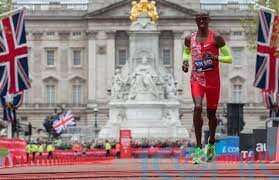
“I think Eliud is proving aged 37 and running a PB that the age barriers that we used to think existed do not necessarily now exist,” Brasher said.
“I think that what we should be doing is allowing Mo time to decide what he wants. One bad performance, a couple of bad performances, do not mean that people should write somebody off. He is an absolutely superb athlete and he will always be welcome back.
“I hope he runs fantastically well but you never can tell because marathon running is the hardest thing. If you’re 99% not 100% you won’t get away with it – it’s really, really hard.”
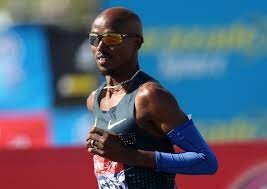
Farah has given no indication he plans to retire yet, despite failing to qualify for the Olympics last year or any major championships in 2022. And Brasher made it clear he would be delighted for him to run in London next year – and also promised him a special retirement send-off when he decided to finally quit.
“The door will always be open to Mo – he is Britain’s greatest endurance athlete in terms of number of Olympic gold medals and world championship gold medals. We have a long history with him, going back to the mini marathon through the fact that we supported him through his university time, which is something that’s not publicised.
“When you look at what happened with Paula Radcliffe, her final run was in the London Marathon in 2015. It was the most incredible send-off that I think that the British crowd were ever able to give any athlete and they came out in their droves. Whenever Mo decides to do his last marathon we would absolutely love it to be London. I think the crowd would love it. He should be celebrated.”
(09/27/2022) ⚡AMPby Sean Ingle
TCS London Marathon
The London Marathon was first run on March 29, 1981 and has been held in the spring of every year since 2010. It is sponsored by Virgin Money and was founded by the former Olympic champion and journalist Chris Brasher and Welsh athlete John Disley. It is organized by Hugh Brasher (son of Chris) as Race Director and Nick Bitel...
more...2022 Chicago Marathon Elite Field Updates
The Bank of America Chicago Marathon is thrilled to welcome elite athletes from around the world to its start line on Sunday, October 9. In addition to the previously announced field, the following athletes will be competing in 2022:
Bernard Koech (KEN) – Runner-up of the 2021 Amsterdam Marathon in a personal best of 2:04:09. Koech finished fifth in Chicago in 2014.
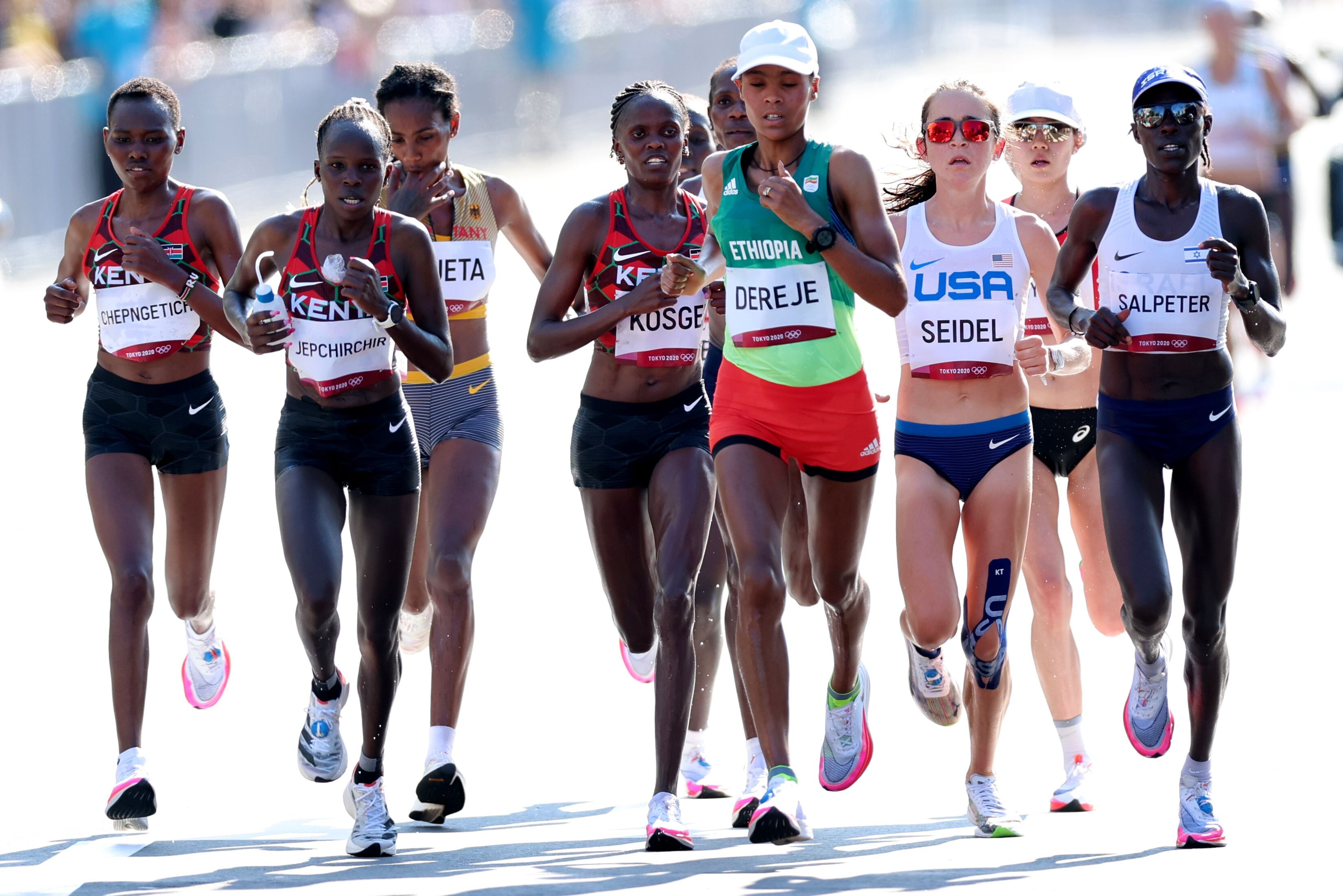
Shifera Tamru (ETH) – 2022 Daegu Marathon champion and 2019 Seoul Marathon champion with a personal best of 2:05:18 (Dubai, 2019). Tamru finished fifth in Chicago last fall.
Guojian Dong (CHN) – Three-time Olympian (2012, 2016 and 2020 marathon); five-time national champion on the track in the 10,000 and 5000m; marathon personal best 2:08:28 (Berlin, 2019).
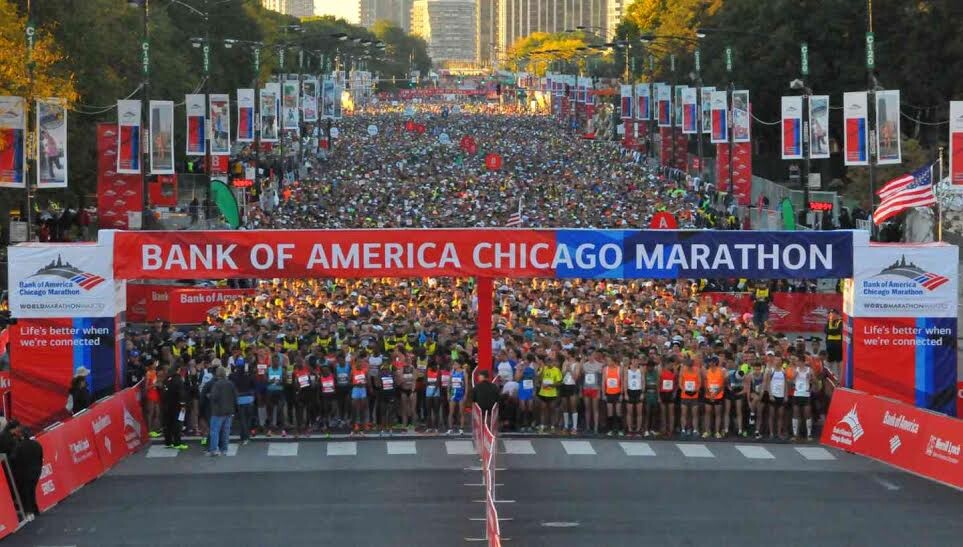
Jemal Yimer (ETH) – Ethiopian national record holder in the half marathon, 58:33, and the 12th fastest half marathon runner in history; third place finish in the 2021 Boston Marathon (his marathon debut); marathon personal best, 2:08:58 (Boston, 2022).
Ruti Aga (ETH) – 2019 Tokyo Marathon champion and 2018 Tokyo Marathon and Berlin Marathon runner-up; marathon personal best, 2:18:34 (Berlin, 2018).
Delvine Meringor (ROU) – 2022 Los Angeles Marathon champion, and 2022 Romanian national champion in the 5000m and 10,000m; marathon personal best, 2:24:32 (Siena, 2021); the Chicago Marathon will be her third marathon.
Sarah Inglis (GBR) – 2022 Commonwealth Games competitor in the 5000m and 10,000m; marathon personal best, 2:29:41 (Chandler, 2020).
Elisha Rotich (KEN), Abayneh Degu (ETH), Amanuel Mesel (ERI), Masaya Taguchi (JPN), Jianhua Peng (CHN), Shaohui Yang (CHN), Steven Martinez (USA) have also been added to the 2022 elite open division race. Fidel Aguilar (MEX), Jose Pulido (USA) and Hannah Dederick (USA) have been added to the 2022 elite wheelchair competition.
Previously announced athletes Jeison Suarez (COL), Jerrell Mock (USA), Colin Mickow (USA) and Hiroki Nishida (JPN) have withdrawn from the 2022 event.
Tune into the 2022 Bank of America Chicago Marathon
Watch Live
NBC 5 Chicago and Telemundo Chicago will provide complete live local TV coverage of the Bank of America Chicago Marathon in English and Spanish from 7 a.m. – 11 a.m. CST on Sunday, October 9. Expert analysts Ed Eyestone, Carrie Tollefson and Amanda McGrory will join Marion Brookes and Leila Rahimi on NBC 5 Chicago, with Juan Luis Barrios, Luis Posso and Saul Mendoza joining Anabel Monge and Héctor Lozano on Telemundo Chicago.
Covering the leaders and reporting along the course will be U.S. American Marathon Record Holder Keira D’Amato for the women’s elite open division and Olympian Diego Estrada for the men’s elite open division. A talented array of NBC and Telemundo reporters will join the broadcast at the start, finish and along the course.
The 44th running of the race will also be streamed live nationally on Peacock from 7 a.m. – 11 a.m. CST, as well as on nbcchicago.com and telemundochicago.com from 7 a.m. – 3 p.m. CST.
International viewers can watch the race via a variety of global broadcast partners, including Eurosport, SuperSport, ESPN Latin America, Sky New Zealand, Astro Malaysia and SMG China. Viewers are encouraged to check their local listings for timing.
Listen Live
670 The Score Sports Radio will provide complete live radio coverage of the Bank of America Chicago Marathon on race day from 6 a.m. – 10 a.m. CST. Fans of the sport can listen to Chicago’s Josh Liss joined by analysts Greg Meyer, Jenny Spangler, Treniere Moser and Chris Wehrman for a play-by-play of all the action. Listen from anywhere on Sunday, October 9 at 670thescore.com/listen.
About the Bank of America Chicago Marathon
The Bank of America Chicago Marathon welcomes thousands of participants from more than 100 countries and all 50 states, including a world-class elite field, top regional and Masters runners, race veterans, debut marathoners and charity participants. The race’s iconic course takes participants through 29 vibrant neighborhoods on an architectural and cultural tour of Chicago. The 2022 Bank of America Chicago Marathon, a member of the Abbott World Marathon Majors, will start and finish in Grant Park beginning at 7:30 a.m. on Sunday, October 9. In advance of the race, a three-day Abbott Health & Fitness Expo will be held at McCormick Place Convention Center Thursday, October 6 through Saturday, October 8. For more information about the event and how to get involved, go to chicagomarathon.com.
(09/27/2022) ⚡AMPby Running USA
Bank of America Chicago
Running the Bank of America Chicago Marathon is the pinnacle of achievement for elite athletes and everyday runners alike. On race day, runners from all 50 states and more than 100 countries will set out to accomplish a personal dream by reaching the finish line in Grant Park. The Bank of America Chicago Marathon is known for its flat and...
more...2022 Publix Rock ‘n’ Roll Running Series Clearwater Canceled Due to Storm
Due to the projected timing and location of impact for Hurricane Ian, the 2022 Publix Rock ‘n’ Roll Running Series Clearwater could not take place. The Rock ‘n’ Roll Running Series will now make its debut in Clearwater, Florida on October 7 & 8, 2023.
Participants that were registered for the 2022 Publix Rock ‘n’ Roll Running Series Clearwater should have now received an email with more information. If you were registered to participate in the 2022 Publix Rock ‘n’ Roll Running Series Clearwater event and you do not receive this e-mail or have additional questions, please contact clearwater@runrocknroll.com.

We thank our runners and walkers for their continued understanding and look forward to welcoming them back to Clearwater with a great event in 2023.
(09/27/2022) ⚡AMPTwo easy ways for beginners to add speed, these simple speedwork sessions introduce faster running in small doses
Speedwork can sound intimidating, and new runners often avoid it until they’ve been logging regular miles for years. Even if you’re fairly new to running, speedwork is an essential addition to your weekly mileage–and it doesn’t mean you’ll be sprinting around a track until exhaustion. You can do your speedwork on the road, trails, track, or even the treadmill.
If you’ve been running for about six months and are injury-free, it’s safe to start incorporating short speed sessions into your training. Try these two simple workouts to get your legs used to moving quickly. As you get more comfortable, you can add repeats or lengthen intervals.
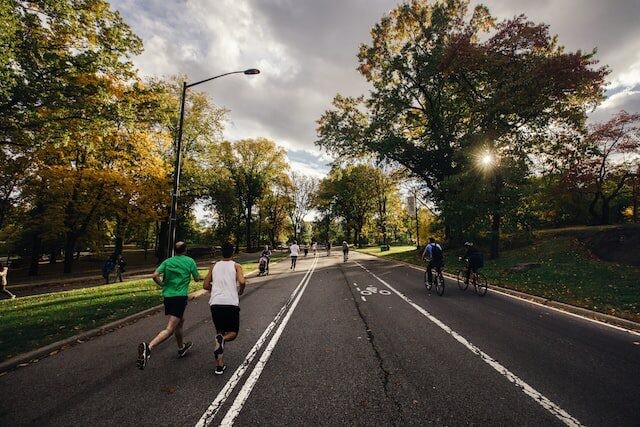
Strides
Strides are a great way to begin adding speed to your sessions. Tack them on to the end of any easy run. Strides are like the multi-purpose tool of speedwork–runners training for very long distances will add them to training runs to remind their legs what it feels like to go at top speed. If you’ve never tried strides before, don’t worry: it’s hard to go wrong.
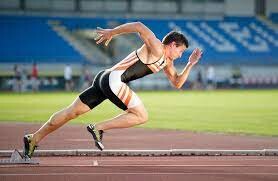
Start your strides running by going easy, focusing on a short, quick stride, and then gradually increase your speed by lengthening your stride. Focus on staying relaxed and running smoothly. It should feel like a controlled faster pace, not a sprint.
The workout:
Easy run (approx 30 minutes)
Four to five strides of 15 to 30 seconds each, 45 seconds rest in between.
Short intervals
If this workout looks too daunting, simply shorten your intervals so that they seem manageable–30 seconds fast with a one-minute recovery is just fine. If you need to walk to recover, go for it. Don’t worry about your pace throughout the intervals, simply go by effort.
The workout:
Warm up with 10 minutes easy running.
Five to eight repeats of one minute hard followed by two minutes easy running or walking to recover
Cool down with five to 10 minutes easy running
Recovery is a key component of speedwork, whether you are a beginner or an experienced runner. In these beginner speed workouts, the recovery intervals are longer in duration than the hard intervals. As you build strength, you can cut down recovery time to make the workouts more challenging. Speed workouts are considered hard training days so you will need a very easy recovery running or rest day following one.
(09/27/2022) ⚡AMPby Keeley Milne
World record holder Brigid Kosgei withdraws from London Marathon with injury
World record holder and twice London Marathon champion Brigid Kosgei has been forced to withdraw from Sunday's race due to a minor hamstring injury, organisers said on Monday.
Kosgei, who won the London Marathon in 2019 and 2020, was one of the favourites going into the event. She also won the Tokyo Marathon earlier this year after a silver medal at the Olympics last year.

"I have been struggling over the past month with an issue in the hamstring of my right leg. My training has been up and down and not the way I would like to prepare to be in top condition for the 2022 TCS London Marathon," she said in a statement.
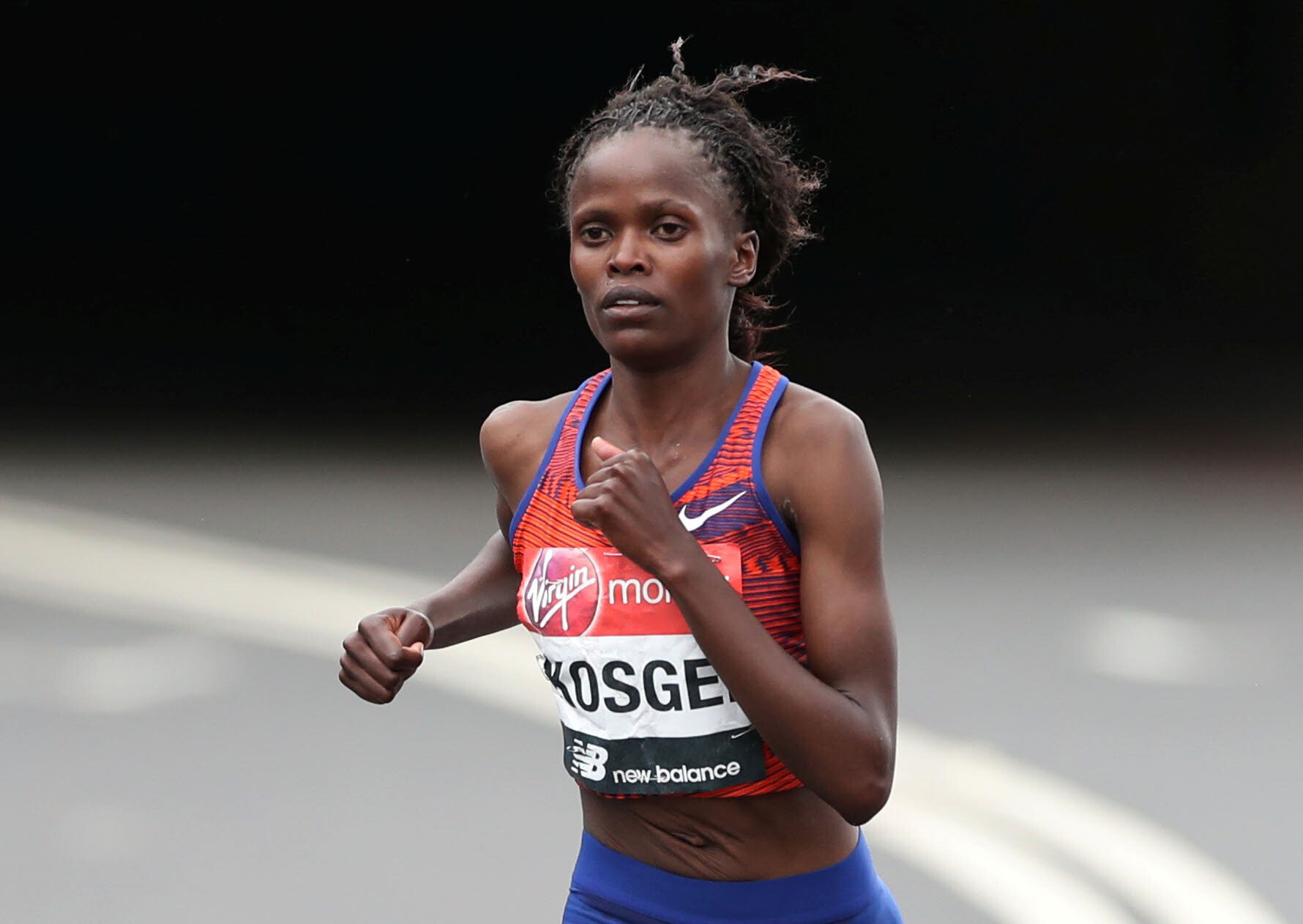
"We've decided it's best I withdraw from this year's race and get further treatment on my injuries in order to enter 2023 stronger than ever."
Kosgei set a world record time of 2:14:04 in Chicago in 2019. She was upset in London last year when she finished fourth in a race won by her compatriot Joyciline Jepkosgei, who is set to headline the event this weekend.
(09/26/2022) ⚡AMP
TCS London Marathon
The London Marathon was first run on March 29, 1981 and has been held in the spring of every year since 2010. It is sponsored by Virgin Money and was founded by the former Olympic champion and journalist Chris Brasher and Welsh athlete John Disley. It is organized by Hugh Brasher (son of Chris) as Race Director and Nick Bitel...
more...Want to become a stronger runner?
There’s nothing quite like the satisfaction that you feel after a great workout, or a sporting match, but during these tumultuous times your options are limited to experience that endorphin release. We know exercise is essential, not only to your physical health, but also your mental health, so what better way to get the heart pumping then to hit the pavement and go for a run?
Depending on the research you read, as many as 8 out of 10 runners will get injured over the next 12 months. We can assume this number may even be slightly higher due to the current circumstances. Most will currently spend days in an office chair and in front of a screen. Long periods of inactivity, poor posture and hectic lifestyles are hardly conducive to injury free running.
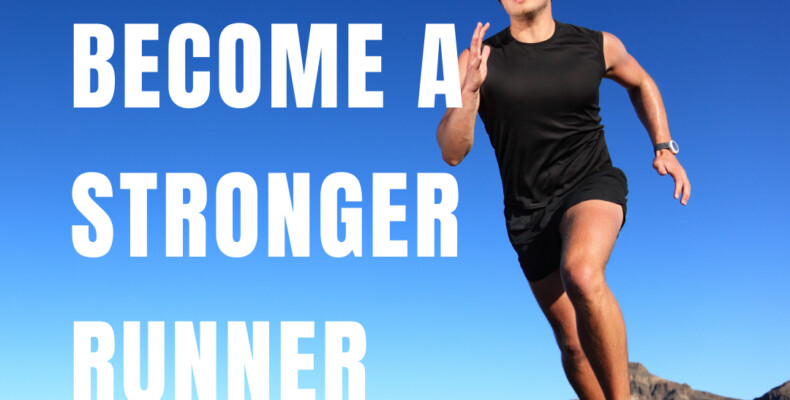
So, how do you make sure your body is strong enough to cope with the increase in running load, and the different muscles you’re going to use? Luckily, we have 7 top strength tips to keep you injury free and to keep those legs ticking over as you watch your exercise ring close!
1.Add strength training to improve power
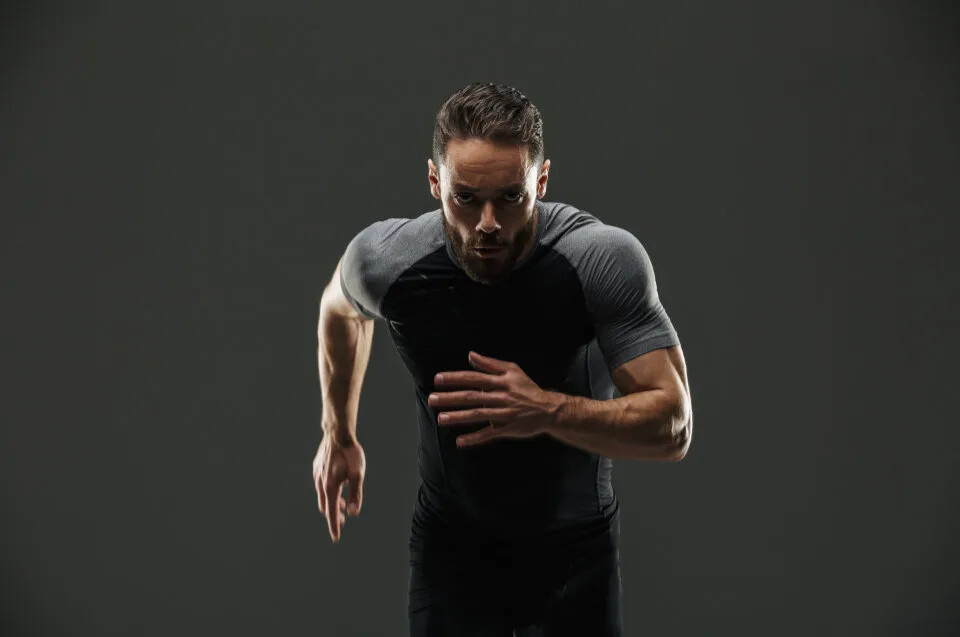
While this tip may seem simple, a good training program for runners isn’t just about logging your miles. Strength work accomplishes three big goals for runners. Not only can it help bulletproof your body to help you prevent injuries by strengthening muscles and surrounding tissues, but strength work will help you run faster by improving your neuromuscular control, coordination and power. Additionally, it improves running economy by encouraging coordination, appropriate activation of muscles and improves balance!
2. Do compound and functional movements
Compound and functional exercises work multiple muscles groups across multiple joints at the same time. We’re talking squats, deadlifts, paloff press, Bulgarian split squats, and the list goes on! Training multiple muscle at a time teaches multiple muscle groups to coordinate their activation and firing rates, which is vital to effective running. It is important to implement a mix of upper and lower body exercises as well as core work. Additionally, these movements improve dynamic flexibility, muscle coordination and have substantial cardiovascular benefits.
3. Strengthen your weaknesses
Did you know that your glutes and calves are the two powerhouse muscles that push you forward when you are running? And they activate in different ranges and planes? Also, did you know that almost every muscle activates when you run? Even those forehead muscles as you frown your way through the middle of your run! It is important that it is identified where individual weaknesses occur, in what ranges, and with what activation patterns to ensure your strength program improves what you need. Specificity is KEY!
4. Schedule your strength sessions
In a perfect world, a runner should beef up their strength work in the off-season and then reduce the load as they go into the season. For most runners, 2-3 days a week of strength training is sufficient, but it is important to be strategic about when you schedule them. Generally having at least one day in between your strength days is important to allow your muscles to recover. Additionally, you should avoid any type of strength work prior to your running workouts. Either plan on doing it right after a run or later in the day after you’ve completed your endurance training.
5. Build your load slowly
The golden rule to loading with running: increase weekly training mileage by no more than 10% per week, this is the same with strength work. It’s important that strength and conditioning sessions are not viewed like a HIIT class. Runners should start with a few exercises done slowly and with good technique, and gradually increase repetitions, sets and alter tempo. The body adapts best to working multiple muscle groups, so add a variety of exercises to get the full benefit.
6. Don’t try anything new on race day
Lets all put our hand up. Who has been tempted to try something new on a race day or longer run day? The temptation is real, and it’s strong! Race day nerves or the desire to take a few seconds off a PB are both reasons runners might try something different when it matters most. Any level runner should avoid this temptation and stick to what has been implemented in training. Don’t play Russian roulette and change what is working on the day.
7. Must train the whole body
Running requires a solid foundation. While you may think you are simply relying on your legs to power you forward, when you run, your abdominal and back muscles activate to stabilise your spine. Additionally, your arm drive is an integral part of good running mechanics. When your legs tire during a run, your arms pick up the slack through the kinetic chain so you can complete that 5km under that 30-minute mark!
While all of these tips can be applied easily, you need to remember that each person is different! Your body is not the same as the person striding out on the opposite side of the road. Whether you are a competitive runner or just starting out, looking after your body is essential for longevity in running and maximum enjoyment.
(09/26/2022) ⚡AMP
by Carlingford Active Health
Five rookie reminders for a successful long run
It’s surprisingly easy for the new runner to neglect to plan out specifics to ensure a smooth outing on their weekend long run. You may also become fatigued during that long run and forgetful of the things that ordinarily come as common sense or established routine. For the newbie to longer-distance running, here are a few reminders to keep you on track for a successful run from start to finish.
1.- Plan your route

Set the course you will run ahead of time, noting any potential obstacles along the route, like unsafe crossings. Be sure to seek out a potential potty stop in the vicinity, should the need arise.
2.- Drink enough, but not too much
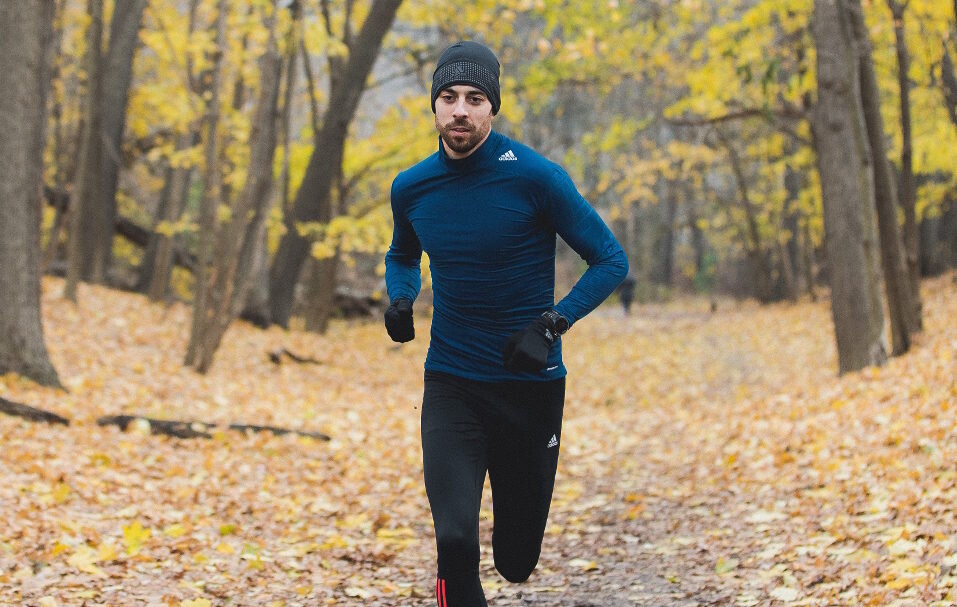
We all know this, but learning to hydrate properly with the right amount of fluids for your individual needs and body is often a matter of trial and error. Too little fluid intake and you may feel tired and sluggish, or you may get a headache or a dry mouth, among other symptoms of dehydration.
With too much fluid intake, you may need to find a bathroom in the middle of your run. Be aware of the risk of drinking far too much and experiencing hyponatremia, a severe and dangerous level of over-hydration. Like all things, balance and self-awareness are key.
3.- Check your route distance
If you are using a GPS watch, don’t forget to double check the actual distance you’ve run before pressing the stop button. It seems obvious, but you can avoid the rookie mistake of falling short of your distance goal. Additionally, Strava and Garmin apps can sometimes clock a different route than each other, so adding a few extra meters can ensure the finish distance is enough.
4.- Recruit a crew
Have helpers along the way. Arrange to have family, friends or fellow runners be your support crew. Have a pit stop prepared in advance with a friendly face, water, gels or any supplies you might need. Encouragement and a cheering squad are a welcome sight and a good boost during a long run.
5.- Plan your kit
Pick the right outfit ahead of time. Training runs (including long runs) are a great way to test new gear and nutrition ahead of race day. You want to be sure the clothes you wear fit comfortably and don’t chafe.
Lastly, don’t forget to celebrate when you finish! It is an accomplishment to be proud of, no matter how it went.
(09/26/2022) ⚡AMP
by Roxana Marion
Deena Kastor completed all sixth World Major Marathons
On Sunday, former American women’s marathon record holder, Denna Kastor, 49, finished the 2022 Berlin Marathon in 2:45:12 to place 48th overall in the women’s field. Kastor earned her sixth star with her results in Berlin, for having finished all six World Major Marathons. She is only the fourth woman to achieve all six world majors, in addition to the Olympic and World Athletics Championships marathons.
Kastor had hopes of hitting the U.S. Olympic Trials standard of 2:37:00in Berlin, but came up short. She finished second in the women’s 45-49 age group.

Kastor has raced the other five majors (Boston, London, Tokyo, Chicago and New York City), and although she was set to race Berlin in 2019, an ankle injury dashed those plans. Kastor is one of the top marathoners in American history, and up until this year, she held the national record at 2:19:36, set at the 2006 London Marathon, which she won. (She won the Chicago Marathon in 2005.)
Keira D’Amato broke Kastor’s record at the Houston Marathon in January 2022, when she ran 2:19:12; some predicted she would run even faster in Berlin on Sunday, but a mere nine weeks after her eighth-place finish at the World Athletics Championships, she was two minutes off the record in Berlin, with a sixth-place finish in 2:21:28.
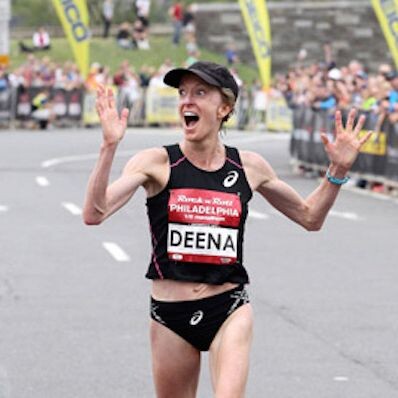
Kastor also held the American half-marathon record of 1:07:34 until 2018, when Molly Huddle ran 1:07:25. She also won a bronze medal in the marathon at the 2004 Athens Olympics. She ran the Tokyo Marathon in 2019.
Kastor’s goal of completing all six World Majors is a goal held by many marathoners (both amateur and pro) around the world, including the great Eliud Kipchoge, who bested his world record time in the Berlin marathon with a time of 2:01:09.
(09/26/2022) ⚡AMPby Keeley Milne
BMW Berlin Marathon
The story of the BERLIN-MARATHON is a story of the development of road running. When the first BERLIN-MARATHON was started on 13th October 1974 on a minor road next to the stadium of the organisers‘ club SC Charlottenburg Berlin 286 athletes had entered. The first winners were runners from Berlin: Günter Hallas (2:44:53), who still runs the BERLIN-MARATHON today, and...
more...New Research Finds Injuries More Common in Marathoners Who Rapidly Increased Mileage
“More miles doesn’t always equal a better result,” says lead researcher.
Increasing your mileage too quickly can up your risk of injury, according to a new study published in the British Journal of Sports Medicine.

While training for a marathon, focus on consistency and slowly increasing your long runs to safely rack up miles and remain injury-free.
Before you start training for your first or next marathon, here’s yet another reason for you to be meticulous about how you approach training: New research published in the British Journal of Sports Medicine found an association between rapid increases in mileage and injuries in marathon runners after analyzing nearly 50,000 runs using Strava data.
Sixteen weeks before the New York City Marathon, researchers began to track the runs of 735 participants, ages 18 and older, to analyze changes in their training volume and injury status. During the study, runners tracked their mileage through Strava and completed a survey every four weeks to report any illnesses or injuries that interrupted their training or resulted in them not competing.
“There’s a lot of different ways that you can look at training in terms of mileage, pace, frequency, and heart rate. What we wanted to do is start with something that is relatable to runners because runners often discuss their training in the form of mileage,” lead researcher, Brett Toresdahl, M.D., attending physician at the Hospital of Special Surgery (HSS) and research director for the HSS Primary Sports Medicine Service tells Runner’s World.
For the purpose of this study, training volume was analyzed using two common methods: The 10-percent rule and acute to chronic workload ratio (ACWR). The 10-percent rule recommends runners consistently increase their training volume by no more than 10 percent each week. A more conservative approach, Toresdahl says this isn’t always an ideal way to increase mileage while training for a marathon. The ACWR method, on the other hand, is used to compare weekly training volume to monthly training volume. For example, Toresdahl explains, if you ran 20 miles in the past week but only averaged 10 miles in the past month, your ACWR would be 2:1 or 2.
In the end, researchers found a link between runners who had an ACWR of 1.5 or more and injury, while there was no association between injury and exceeding the 10-percent rule. Runners who initially reported injury during the first month had more days when their ACWR rapidly increased than those who ran injury-free that month.
“If your training volume in the past week was 50 percent higher than the average of your training volume over the past four weeks, that would be a risk factor for injury,” says Toresdahl. (That means if you run a weekly total of 25 miles this week, your previous four-week average should be somewhere above about 17 miles.)
That doesn’t mean everyone who exceeds that amount will experience an injury, but rather the more times you exceed that amount over the course of training, the more likely you are to become injured, Toresdahl says.
Overall, 40 percent of runners experienced an injury while training, and 4 percent of participants experienced a major injury that resulted in them not participating in the marathon.
How to Safely Progress Your Training Volume Leading Up to a Marathon
To sidestep injury, focus on consistency first, Toresdahl says, then focus on increasing the long run and not necessarily increasing those midweek, shorter runs. “Just looking at the training patterns of the runners who remained uninjured, we saw that their long run distance was increasing, but their total distance per week wasn’t increasing that much, meaning that they were maintaining a pretty consistent midweek or shorter run cumulative mileage,” he says.
Dealing with changes in mileage is only part of the overall stress a runner will endure while preparing for a marathon. Likewise, the ACWR is only one way to monitor your training volume, says Toresdahl. Meaning, there are plenty of ways to approach safely increasing your mileage to remain injury-free as you train for a marathon—the key is listening to your body and not doing too much too soon.
Also, instead of following a generic training plan or virtual trainer, consider teaming up with a run coach to help you through your training. They can also help you adjust your training plan to your schedule and needs.
Most importantly, Toresdahl says, “listen to your body—don’t feel compelled to just put in more mileage. More miles don’t always equal a better result.”
(09/25/2022) ⚡AMPby Runner’s World
Lucy Westlake Is the Youngest American Woman to Summit Everest—But She Was a Runner First
She uses her track and cross-country training to help her physically and mentally climb the world’s highest peaks.
After running year-round for 11 years, Lucy Westlake recently joined the track and cross-country team at the University of Southern California in Los Angeles.

In high school, she ran the 5K cross-country event and 3200-meter track distance with a few career highlights including becoming the Illinois State Team Champion in 2018 and 2019. Now, she’ll compete in the 6K cross-country event and 5,000-meter and 10,000-meter track distances.
While the direction of her adult running career has yet to unfold, Westlake, 18, tells Runner’s World that her lifelong athleticism as a runner has already helped her reach tremendous heights.
In fact, on May 12, 2022, the Chicagoan became the youngest American woman to summit Everest, the world’s highest peak at 29,032 feet, right before her high school graduation. (Westlake was 18 years, 6 months, and 8 days old, beating out the last record holder who was 18 years, 7 months, and 9 days old.)
Climbing Everest took 27 days, and every single step was worth it, says Westlake.
“It was definitely the hardest thing I’ve ever done in my life—physically, mentally, and emotionally. Looking up at the summit from Camp 4 the day before our summit push, it truly looked impossible. At 9:00 p.m., my Sherpa and I began our climb and 8.5 hours later we stood on top of the world together,” she says.
A Start in Two Sports
Raised in Louisville, Kentucky, Westlake started running with a team at age 6. In January 2016, during 6th grade, her family relocated to Naperville, Illinois, a western suburb of Chicago.
While attending Naperville North High School, Westlake’s weekly training routine included one 90-minute long run, three to four strategic workout runs, like tempo workouts, which totaled six to eight miles each, and easy runs in between. She also made sure to have a complete rest day every two weeks, while hitting a weekly mileage of 40.
Core workouts and yoga were also a big part of Westlake’s high school routine, as well as weight training for 50 minutes, four to five days a week.
Despite growing up in cityscapes, her first-ever run was on trails—not pavement—near her family’s cabin in the Upper Peninsula of Michigan, when her grandpa challenged her to a dual to see who could first reach the top of a nearby slope.
“I love trail running and want to explore that more after college. You get to see beautiful scenery and it’s challenging,” says Westlake, who also took a roadtrip to the Grand Canyon with three teammates this summer to run and hike the 24-mile Rim-to-Rim, which is the furthest distance she’s covered on a run in one effort.
Prior to setting the world record on Everest, Westlake became the youngest female, at age 17, to climb the highest peaks in all 50 states. She and her dad, Rodney Westlake, completed the goal together over the course of a decade. That journey included a 21-day summer expedition to the summit of Denali, in Alaska, which was the most challenging summit to reach in the U.S., she says, due to the required mountaineering skills, weather window, risk management, and time commitment.
“I was always running on a team and in school, so my family did one or two short road trips out west to climb mountains every year,” says Westlake, who was first introduced to high altitude while visiting family in the city of Puebla, Mexico, at age 6, when she hiked the 14,636-foot La Malinche.
Climbing Everest
On April 15, 2022, Westlake, her dad, and seven friends flew to Kathmandu, Nepal, where they met their guides to trek to South Everest Basecamp. Two days later, they flew to Lukla, where they started the eight-day, 38.5-mile trek to basecamp, camping overnight at tea houses along the way.
South Everest Basecamp is a collection of primitive campsites at the base of Everest, where mountaineers stage their ascent and descent of a climb up the southeast ridge. Westlake’s dad and their seven friends stayed one night at basecamp before returning to Lukla the same way they’d hiked in, and they all flew back to the United States. They did not continue with Westlake up Everest, which she ascended with her Sherpa guide for the next 16 days.
On the day of Westlake’s summit, prosperous conditions quickly aligned: As mentioned, the out-and-back took Westlake 27 days (a climb that takes 40 days, on average, to complete).
“We got lucky with the first good weather window of the year, and I was one of the first people to summit,” Westlake says. “I didn’t have any unusual problems with how my body reacted to the altitude, so I didn’t need very many rest days. My Sherpa and I moved well together and had a great chemistry, so the climb was perfect.”
To help cover the cost of her climb, Westlake received a $12,500 scholarship from Grape-Nuts, the breakfast cereal brand. In March 2022, the brand donated a total of $115,000 to 10 female adventurers pursing expeditions to celebrate Women’s History Month.
How Running and Mountaineering Go Hand-in-Hand
Westlake credits her mountaineering fitness and endurance to her lifelong running routine.
“Running is a super cardio sport. In mountaineering, your heart rate at high elevation is naturally higher, and you’re climbing for hours on end. Running is a great way to train,” Westlake says.
It’s not just the physical aspect of running and mountaineering that make them complementary sports for Westlake.
“Running has taught me a lot about mental toughness—that’s the reason I’m able to summit mountains,” she says. “I’ve become used to accepting pain. You have to be able to push your body and stay focused.” Summit day on Everest was long, she adds, so being able to work through the physical and mental hardships is a crucial skill, which running helps her hone.
In fact, Westlake says the skills she gained on the run, particularly not so good runs, helped her make it to the top of Everest. “I’ve had great races and bad races, great seasons and bad seasons. I’ve learned along the way that patience, consistency, and believing in yourself lead to long-term success—it’s the same on a high-altitude mountain. It takes patience to allow your body to acclimate, consistency of putting one foot in front of the other no matter how hard it gets, and always believing that it’s possible,” she says.
Learning to take the rough patches as they come and continue moving forward also carries from her mountaineering adventures back to her run miles. “During tough running workouts when I was struggling and felt like finishing was impossible, I remember back to when I was climbing fixed ropes up vertical walls in the Khumbu Icefall on Everest and had no idea how I was going to reach the top. And when my wake-up call to start a summit push is at 4:00 a.m. and I am completely exhausted from not being able to sleep well at high altitude, I remember back to all those early morning running practices, and it feels like second nature.”
Westlake’s Future Goals
Westlake’s new goal? Become the youngest person, male or female, in the world to complete the Explorers Grand Slam within the next two years. This challenge includes reaching the North Pole and South Pole and summiting the Seven Summits—the highest peaks on each of the seven continents.
“My mountaineering goals are driven to help close the gender gap in the mountains. If an 18-year-old, 5’4” 105-pound girl can climb Mount Everest, so can a lot of other women,” says Westlake. “I want the next generation of girls to see mountaineering as a sport they can pursue and strive to become the best they can be.”
In addition to her climbing goals, Westlake also has her sights set on running victories. “I want to see how far I go in college and if I can pursue a running career, especially in distance running,” she says. “I’d love to try a marathon after college, because endurance is my strong suit. My strongest aspect is my mental toughness, which marathons lend themselves toward.”
Climbing to Support Human Health and Female Athletes
Westlake uses her expeditions to raise awareness and funds through LucyClimbs, an Etsy shop with merchandise like sweatshirts and t-shirts, to support WaterStep, a nonprofit that teaches water treatment practices and provides filtration resources to communities in need worldwide.
“I love the mountains and running for myself but need to have that higher purpose. I don’t want my gifts to be selfish, I want to give back,” she says.
Westlake also received the 2022 Billie Jean King Youth Leadership Award at the annual ESPY Awards, thanks to her summit of Everest. The award is categorized as an ESPN Sports Humanitarian Award, and was designated to five women for using their athleticism for a positive influence on society.
“Mountaineering is a sport dominated by men twice my age and size. When I’m in the mountains, I don’t see many people like myself. The mountains have shaped me into the person I am today—so has running—and together they give me purpose,” Westlake says. “My Everest climb was dedicated to promoting women in the outdoors and inspiring girls to follow their dreams not only in mountains but in any sport and aspect of life. There’s a huge gender gap in mountaineering, and the best way to combat that reality and stereotype is to see other women in mountains and eliminate the cost barrier.”
(09/25/2022) ⚡AMPby Runner’s World
The 10 Best State Parks For Fall Running, Riding, Hiking, and Camping
Fall is officially here, and now may be the best time to visit some of these prime locations.
September 22 marked the fall equinox, the first official day of autumn. It’s a season synonymous with numerous things from pumpkin spice lattes and apple orchards to Halloween and football. Here at Runner’s World, we think state parks should be added to the list.

With cooler temperatures (in most parts of the country), autumn is the optimal time to get outside and explore nature before shorter days and colder winter months arrive.
Whether you’re running, hiking, camping, or biking, state parks offer beautiful scenery and a retreat into nature, without the crowds that often accompany national parks – a trend that took off in the pandemic.
And with 10,336 state park areas, the options are seemingly endless... So how should you choose where to go?
Google Maps has made the decision-making process a bit easier. By analyzing star ratings and reviews, they named the top 10 rated state parks in the United States.
Topping their list are the cascading waterfalls of Bond Falls Scenic Site in Michigan—a state that claims two spots on the list. California graced the top 10 list the most with three state parks, all with forests of towering redwoods.
Top 10 Rated State Parks in the U.S.
Bond Falls Scenic Site (Michigan)
Avenue of the Giants (California)
DTE Energy Foundation Trail (Michigan)
Prairie Creek Redwoods State Park (California)
Sinks Canyon State Park (Wyoming)
Jedediah Smith Redwoods State Park (California)
Granite Mountain Hotshots Memorial State Park (Arizona)
Grayson Highlands State Park (Virginia)
Waimea Canyon State Park (Hawaii)
Letchworth State Park Upper Falls (New York)
Building off the top 10, Google Maps also determined the top-rated state park in each state by looking at those with the highest star rating and at least 250 reviews. The list included parks like Alaska’s Denali State Park and Colorado’s Eldorado Canyon State Park. Additionally, Google Maps named the top state parks near national parks and the top hiking areas or vista points in state parks.
If you’re sold on a fall visit to a state park, but would rather stick to parks near you, the Association of State Park Directors (NASPD) can help. Their website’s “Locate a Park” feature allows you to see a list of all parks in your state or a map of those closest to your current location.
If you’re partial to national parks or want to combine a visit to a national park with a state park, we’ve got you covered. Check out our top picks for national parks as well as tips for running through them.
While preparing for your outdoor adventure, make sure to verify the hours and entry fees for your destination, as both can vary by location and season. You can also check the air quality (AQI) through Google Maps’ new mobile air quality layer, like the existing wildfire layer.
And if you’d rather not travel in-person, you can always check out any of these parks virtually through Google Earth.
(09/25/2022) ⚡AMPby Runners World
Eliud Kipchoge sets new world marathon record in Berlin clocking 2:01:09
Eliud Kipchoge sliced half a minute from his own world record to win the BMW Berlin Marathon, clocking a sensational 2:01:09 at the World Athletics Elite Platinum Label road race on Sunday (25).
There was also a stunning breakthrough for Ethiopia’s Tigist Assefa in the women’s race as she smashed the course record by more than two minutes with 2:15:37, becoming the third-fastest woman in history.
Just when it seemed Kipchoge had achieved everything he possibly could over the classic distance, the legendary pushed the world record further out of reach for the rest of the distance-running world.
Unlike his last world record run, the double Olympic champion went out hard on this occasion, passing through 5km in 14:14 and 10km in 28:22 – not just comfortably inside world record pace, but also well inside a projected two-hour finish.
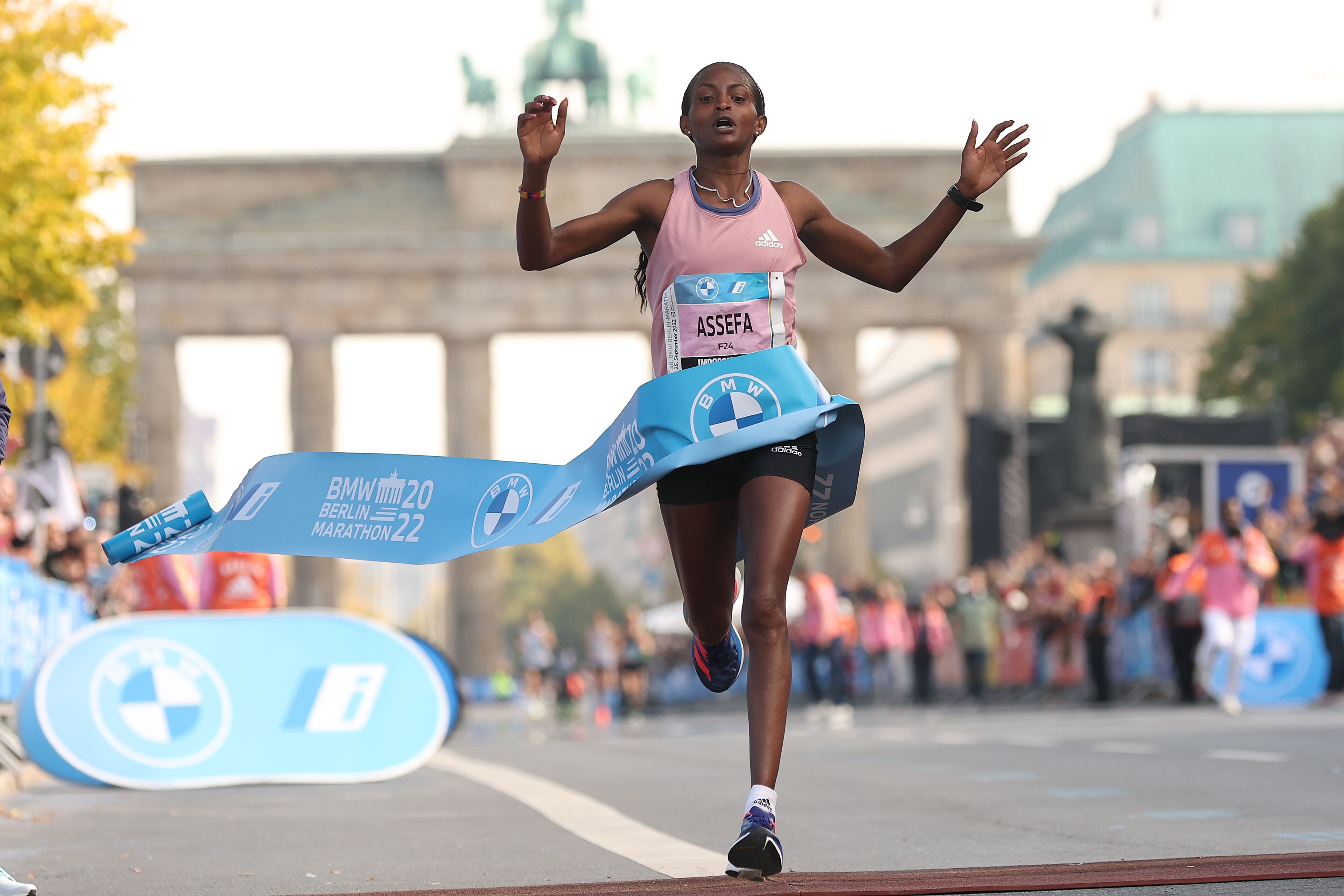
Kipchoge maintained that pace through half way, which was reached in 59:50, but his pace started to drop slightly from then on, and by 25km (1:11:08) his projected finish had slipped to just outside two hours – still more than a minute inside world record pace, though.
Ethiopia’s Andamlak Belihu was just about staying level with Kipchoge up until this point, but the Kenyan superstar then gradually pulled clear and was out on his own.
He passed through 30km in 1:25:40, then reached 35km in 1:40:10. By the time he passed through 40km in 1:54:53, his lead had grown to move than four minutes with Mark Korir having moved into second place.
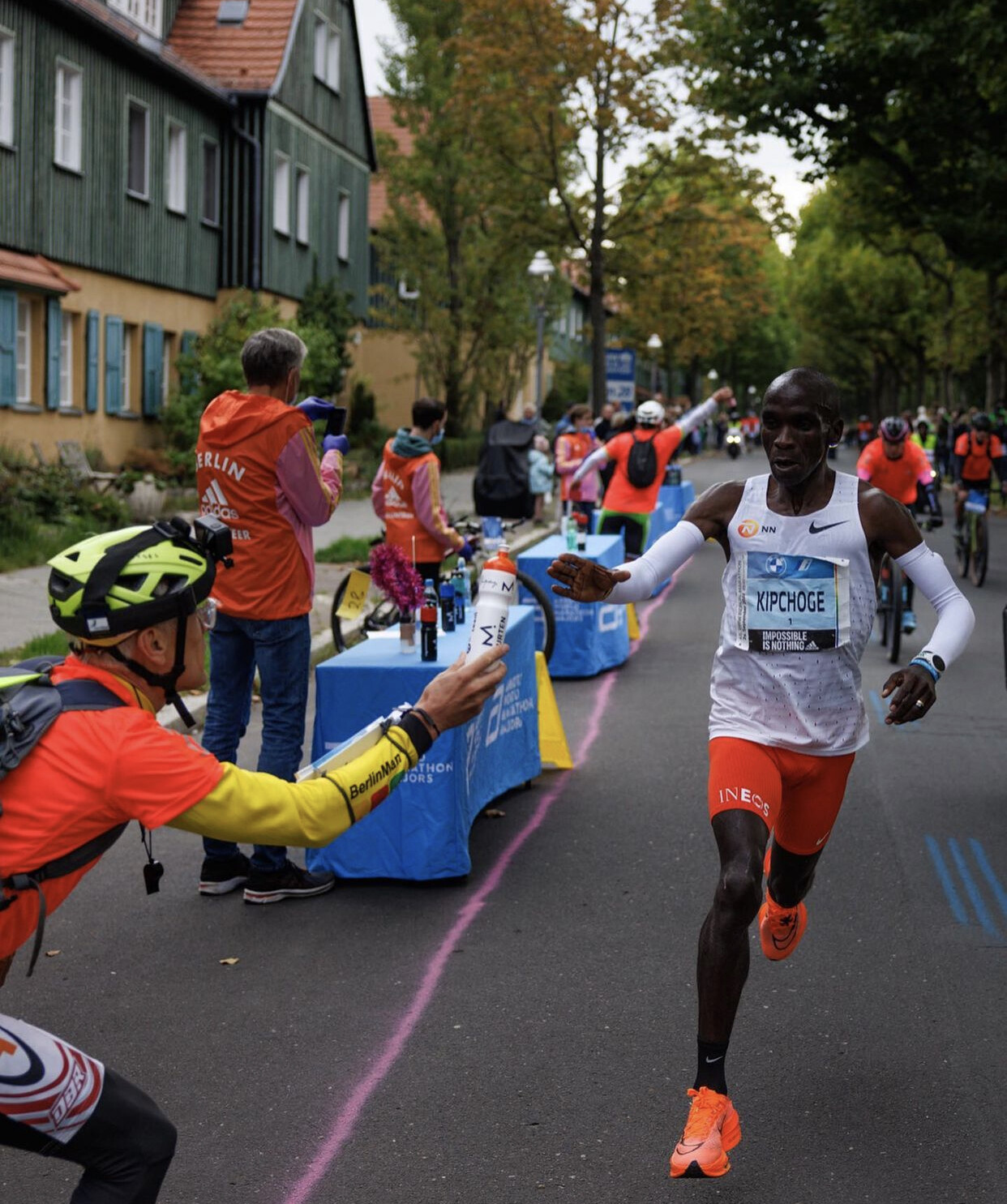
His victory – and world record – nor a formality, Kipchoge went on to cross the line in 2:01:09, taking 30 seconds off the world record he set in the German capital four years ago. Korir held on to second place in 2:05:58 and Ethiopia’s Tadu Abate came through to finish third in 2:06:28.
"I am overjoyed to have broken the world record in Berlin," said Kipchoge. "I wanted to run the first half so fast. No limitations.
"After 38km I knew I would be capable of breaking the world record. The circumstances were great, and so was the organisation of the event. I’m really happy with today and impressed by the fans and their support."
By contrast, several runners were in contention for most of the women’s race. A group of six women passed through half way in 1:08 - well inside course record pace – but by 30km, reached in 1:36:41, just three women remained at the front: Assefa, along with Ethiopian compatriots Tigist Abayechew and Meseret Gola.
Despite running significantly quicker than she ever had done before, Assefa – a former 800m specialist – maintained her relentless pace and opened up a gap of about 20 seconds by 35km.
She continued to pull away from the rest of the field and crossed the line in an Ethiopian record of 2:15:37 – a time that has only ever been beaten by world record-holders Brigid Kosgei (2:14:04) and Paula Radcliffe (2:15:25).
Kenya’s marathon debutante Rosemary Wanjiru came through to take second place in 2:18:00, finishing just three seconds ahead of Abayechew.
Leading results
Women
1. Tigist Assefa (ETH) 2:15:37 2. Rosemary Wanjiru (KEN) 2:18:00 3. Tigist Abayechew (ETH) 2:18:03 4. Workenesh Edesa (ETH) 2:18:51 5. Meseret Gola (ETH) 2:20:58 6. Keira D'Amato (USA) 2:21:48 7. Rika Kaseda (JPN) 2:21:55 8. Ayuko Suzuki (JPN) 2:22:02 9. Sayaka Sato (JPN) 2:22:13 10. Vibian Chepkirui (KEN) 2:22:21
Men
1. Eliud Kipchoge (KEN) 2:01:09 2. Mark Korir (KEN) 2:05:58 3. Tady Abate (ETH) 2:06:28 4. Andamlak Belihu (ETH) 2:06:40 5. Abel Kipchumba (KEN) 2:06:49 6. Limenih Getachew (ETH) 2:07:07 7. Kenya Sonota (JPN) 2:07:14 8. Tatsuya Maruyama (JPN) 2:07:50 9. Kento Kikutani (JPN) 2:07:56 10. Zablon Chumba (KEN) 2:08:01
(09/25/2022) ⚡AMPby World Athletics
BMW Berlin Marathon
The story of the BERLIN-MARATHON is a story of the development of road running. When the first BERLIN-MARATHON was started on 13th October 1974 on a minor road next to the stadium of the organisers‘ club SC Charlottenburg Berlin 286 athletes had entered. The first winners were runners from Berlin: Günter Hallas (2:44:53), who still runs the BERLIN-MARATHON today, and...
more...Why Balance Might Not Be the Right Goal
Balance is a word that's thrown around a lot these days. Every time you look up there's a new article advocating for work/life balance or living a well-balanced life. We are told that working to achieve balance will ensure we lead more fulfilling lives. As if the key to life satisfaction lies in balance.
What if that's not true? Working towards better balance might be what is keeping you from finding passion in life and potential in running. Balance could be holding you back. When you are willing to challenge the seemingly ideal concept of balance, you can figure out if it's a goal that supports the life you want to live.
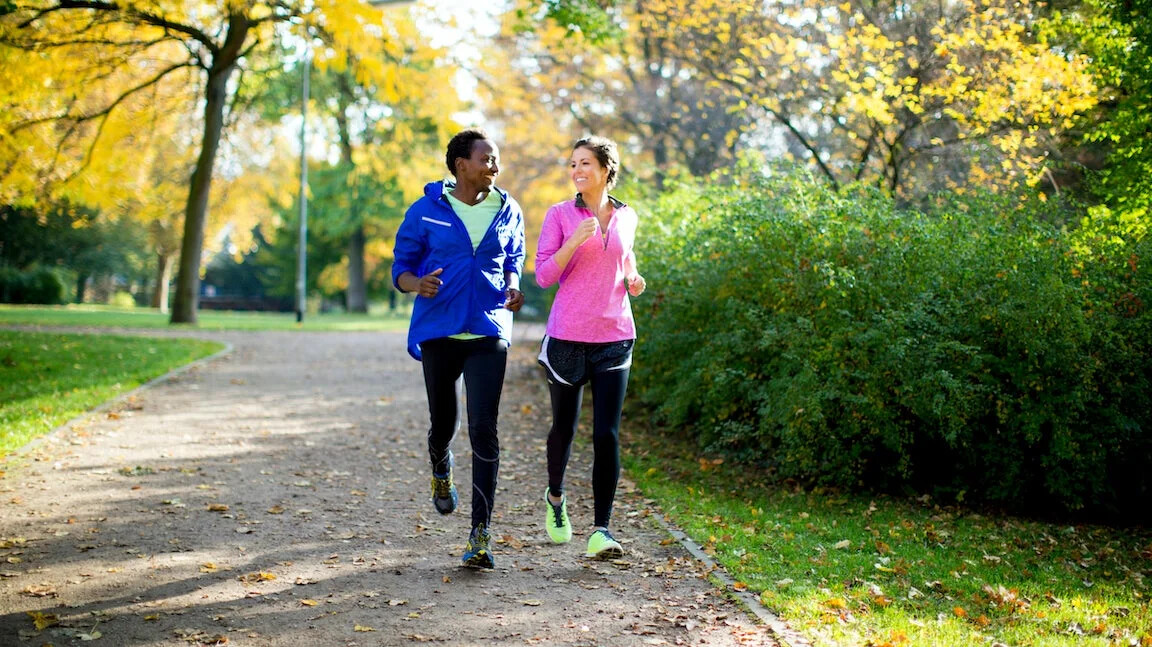
What's Wrong with Balance?
You are a runner. You are also a friend, partner, employee, boss, and/or parent. You have so many roles at once; a multi-faceted human with many interests and responsibilities. You don't turn off being a parent when you go for a run or stop being a runner when you're at work. You are a whole, complete human made up of many parts.
The problem with balance is that it operates from the assumption that your work and your life are separate entities. That could not be further from the truth. The skills you develop at work elevate who you are at home and as a runner. The perseverance and dedication you bring to your running is also part of who you are as a leader at work.
Take some time to think about the person you are in each part of your life. How would you describe yourself? What qualities do you bring? Creating awareness around this will allow you to see the qualities and values inherent to you that you bring everywhere you go. You are the same person. Who you are as a runner does not take away from another area of your life. Instead of seeking balance, practice integrating who you already are with what matters most to you.
Why Balance is Limiting
Have you ever stopped and asked why you are trying to achieve balance? Whose idea was it anyway? And is it serving you?
Forcing yourself to live under the idea of balance, just for the sake of balance, does not make sense if it does not support the life you want to live. The more attention you give to any area of your life, the more results you will create in that area.
Passionate about running a half marathon in every state?
Excited about some backpacking excursions you have coming up with family?
Amped up about a work project you are leading for the first time?
Whatever it is, go all in on it. You cannot and will not know what is possible within these goals without first ditching the goal of balance. You have to first give yourself permission to let go of someone else's idea of how you should live your life.
At the same time, it is important to remember that we have limited hours in a day and limited bandwidth. Going all in is not only about what you do, but how you do it. Make sure how you are spending your time is in alignment with your goals, priorities, and who you want to be.
The Power of Choice
If you are trying to balance every aspect of your life, each part of your life gets equal attention. Which means no part of your life has the chance to become the most important. As a result, you cannot achieve your best in any particular area because your energy and attention is divided. What do you want to achieve in the different aspects of your life?
It takes time to become a stronger, faster runner. If it's important to you to progress as an athlete, it will require more time and energy resources. Each stage of life brings different priorities and challenges, which might require going "off balance" to achieve a goal. It's important to see this as an intentional choice that supports the greater vision for the life you want to live. If you have a goal to run your first sub 4 hour marathon, your training volume will inevitably increase. This might mean less social time with friends and family in the build up to the race. It does not mean that you will never spend time with those friends and family again! This is just a time in your life when your race goals require more from you. The most important thing you can do for yourself is honor the choice. This allows you to be more present in your training and get more out of the time you are putting in. Additionally, it will likely make you more present in the social time you do have, knowing that it's limited and sacred.
Be intentional with the choices you make and the energy you put towards those choices.
As it turns out, balance might not be the right goal. Especially if as you are trying to achieve balance, you are living by someone else's standard and limiting yourself. Ask yourself this: if I stopped chasing balance, what would I achieve?
(09/24/2022) ⚡AMPKlaus-Dieter Knapp gets to start the Berlin Marathon early
This man is an inspiration:
While everyone is waiting for their start, Klaus-Dieter Knapp will be already on the course from 7:45 am.
Klaus-Dieter has suffered from incomplete paraplegia for many years. For example, it takes him up 8.5 hours to finish the marathon. For this reason, Klaus-Dieter is exceptionally allowed to start earlier.

Klaus-Dieter is ready to run his 36th BMW BERLIN-MARATHON this year.
"We wish Klaus-Dieter and all of you good luck on the course," says the organizers on FB.
(09/24/2022) ⚡AMPHow to break the ice at your new run club, Showing up to a new run club is similar to your first day of school or a first date
Joining a new run club can be intimidating. If you don’t know anyone, it can be hard to know if it’ll be a good fit, but it is one of the best ways to meet like-minded individuals in a new city or environment, or if you’re relatively new to running. Showing up to a new run club is similar to your first day of school or a first date—awkward at first, but there are ways you can set yourself up for success.
It is important to note that not all run clubs are the same. Some are more friendly than others, and there can be a wide variety in how seriously they approach training.
Here are a few ways you can break the ice with other runners.
Find another solo runner
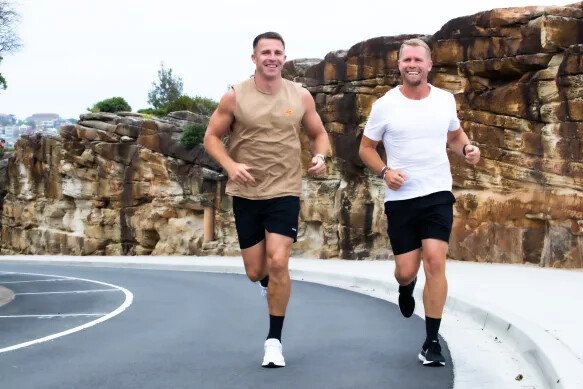
Finding another runner who’s in the same boat as you can make the entire experience feel a little more welcoming. There is nothing more relatable than striking a conversation with someone who is going through the same nerve-racking and intimidating emotions you are going through.
The “what are you training for” question
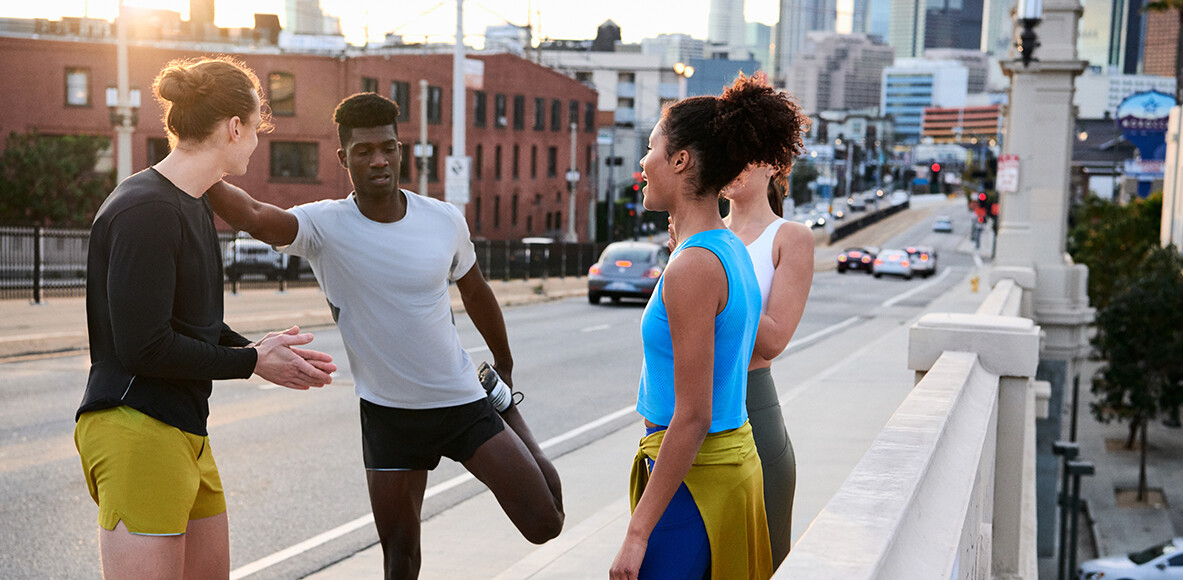
A runner’s favourite question! After asking this, you have officially broken the ice, and can expect your new-found friend to vent to you about their training and previous PBs for the next 10 to 15 minutes.
Set yourself up for success
Don’t be shy–shoot the club leader a message on social media to let them know you are attending, and introduce yourself immediately upon arrival. The job of the club leader is to make sure everyone feels welcome and introduce you to people around the same age or pace, to help you settle in.
Put yourself out there!
Some run clubs will go out for a post-run beverage or food after they finish. Attending these post-run events can help you get to know the other runners whom you might not have had the opportunity to socialize with on the group run.
(09/24/2022) ⚡AMPby Running Magazine
Incorporate these downhill running techniques into your easy runs to improve your turnover and speed
When you are running downhill, it may seem like an opportunity to pick up the pace. But you need to be smart about how you approach it: running downhill generates more force than running uphill or on a flat surface, putting more pressure on your muscles and joints. Often, runners will hit the downhill too fast or too hard, and they may pay for it later in the race (or even suffer an injury).
There are techniques for running downhill properly, helping you avoid injury and improve your leg turnover and speed.

Relax your upper body
Gravity naturally forces your body to land harder on the surface when running downhill. Instead of stomping down a decline or tensing your neck muscles to help slow you down, relax your upper body from your core and up, and let gravity do the work for you.
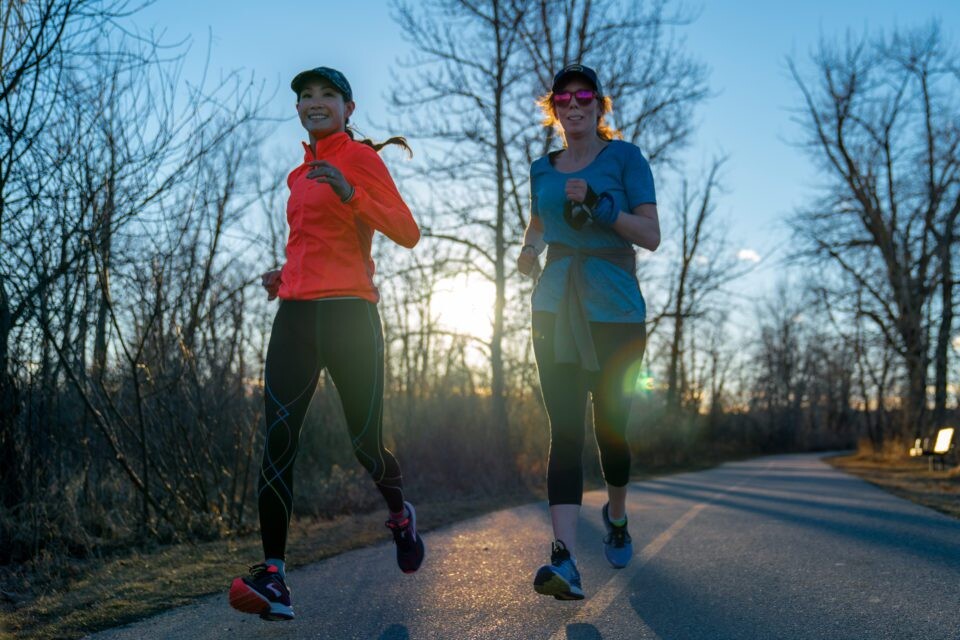
A great way to practice your downhill running is on easy runs. Try to incorporate downhill routes into your training to master the form. Don’t train on a hill that’s too steep. Look for a downhill with a three to five per cent grade and practice your form.
Control your stride
When approaching an uphill or downhill, the goal is to sustain the cadence from the flats. One way to do this is by controlling your stride. Lean slightly forward with your body and hips, forcing your legs to land underneath your body. If you are running down a technical hill, shortening your stride and taking quick, short steps will give you more control and is a great way to avoid injury.
Engage your core and keep your hips forward
Our bodies have a natural tendency to lean back and slam down with our heels, causing us to lose momentum on the downhill and to overstride. A way to prevent this is by engaging your hips and core and pushing them slightly forward—this will force your legs to land under your body, giving you more control of your stride without losing speed.
(09/24/2022) ⚡AMPby Marley Dickinson
The Apple Watch Ultra - The First Apple Watch That Can Go The Distance
We have reviewed Apple watches before. Often times it's simply as a service to endurance athletes who might think about buying one, so we can just say, "It's a nice watch, but it's not really for what you do." Especially those of us who train every day, sometimes twice per day, and have a particular affinity for data and accuracy and workout organization.
Apple watches have great apps, beautiful screens, and the best touchscreens in the game, but their built-in workout profiles and post-data analysis leave something to be desired. And the battery life-oh the battery life! But with the latest "adventure-focused" Apple Watch Ultra, now-for better or for worse-Apple has its hat in the endurance sport's ring with the big boys.

First, we'll look at what's new on the Apple Watch Ultra, talk about what we liked as we've spent hours using it, what we didn't like, and then dive into the endurance sports specifics before giving our conclusions and some competitive analysis. Let's see how it fares:
Apple Watch Ultra: What's New
Before we get into the specifics that make the Apple Watch Ultra an endurance/outdoor contender, let's quickly take a look at what's new:
Apple Watch Ultra: What We Like
As we noted before, the Apple Watch series was always a bit frustrating for athletes-the super limiting battery life meant you had to charge it pretty much every night, and you couldn't go on super long runs or adventures or race almost any ultras with it. Even if you loved everything else about the Apple Watch, that was always a deal breaker. The good news is that with the increased battery life and low-power options, you're looking at a smartwatch that can effectively handle any workout, event, or outdoor adventure that you could throw at it. Apple also teased a low-power workout mode that would give additional battery life, but with reduced resolution of GPS and heart-rate readings coming soon.
Battery life aside, the more robust build of the Apple Watch Ultra makes it feel less like a piece of fine art and more like a tool for training. And it's not just looks-the raised lip of the case protects the precious screen better than previous models by a ton. It's also safe to say that the "Precision Start" function and "Action" buttons are both things that pretty much every other smartwatch ever made already has, but both were gaps missing in Apple's exhaustive function quiver.
With all of this combined, the Apple Watch Ultra is not only a decent (yes, just decent, more on that below) outdoor adventure watch, but it's actually a good watch for anyone training for endurance sports-regardless of distance. Outside of training, Apple's "lifestyle functions"-things like text messaging, weather, music, third-party apps, contactless payment, and (way way) more-are basically unparalleled.
Yes, Fitbit has some fun stuff and a nice screen, but Apple is still lightyears ahead of any competitor when it comes to smartwatch power and integrations. As an example: The three-mic setup is nothing short of magic when making calls on the watch-no one is even remotely trying to do this stuff, except for Apple.
Also, let's not forget that since the untimely demise of the Forerunner 945 LTE, this is one of the only full-function workout watches with legit battery and LTE connectivity. So if you like to go training (or racing!) untethered to your phone, like so many of us do, this is still one of the ONLY ways to stay in touch via LTE. That's not nothing.
Apple Watch Ultra: What Could Be Better
While I won't speak to the dive functions, I would say that many of the "outdoor" functions like navigation and mapping are still pretty on-grid if the Apple Watch Ultra is supposed to speak to the hardcore adventure set. The lack of offline mapping and navigation seems like nothing more than an oversight (or lack of a mapping partner, maybe), and the compass waypoints and retroactive backtracking-while cool-aren't exactly going to save your life in the backcountry.
The battery is better, for sure, but to consider this a 100 miler or backpacking watch over something more expedition-worthy is reckless at best. If you're with a group of friends backpacking for a week, it's probably not a bad choice, but if you're doing a solo multi-day adventure or tackling and unsupported fastest known time (FKT), I wouldn't count on the Ultra as your only navigational tool-like you could for some upper-end adventure watches (the Coros Vertix 2 or the Garmin Fenix 7/Enduro line, for instance).
In terms of more workout-specific capabilities, the battery life (finally) brings the Apple Watch into the realm of ultra runners, but it still lacks some of the data power they really need. Trail runners should be encouraged that this is a watch they can finally do an ultra with (and all of the related ultra training). The multisport crew might complain about a lack of open-water swimming distance alerts that pretty much all open-water ready smartwatches have right now.
And while native running with power is a total game changer, given that currently only Polar and Coros have that built-in, serious runners might take issue with how inflexible the power metrics are in the workout screens. Yes, having average power and average three-second power is great (and the ability to move those metrics around), but lap power is sometimes just as important, if not more.
On the note of workouts, the Apple Watch Ultra does have some cool built-in workouts that you can select when you're feeling uninspired by your training program, and of course you can create and edit your own workouts on watch-without the need for an app. Apple also says there will be a "track detection" feature coming soon that will actually recognize-via satellite imagery-that you're in proximity to a track (U.S. only), and prompt you if you're going to be running on it. If so, you'll choose a lane, and it'll snap the GPS tracking and distances to that track. While other brands like Garmin and Coros have something similar, no one can automatically detect that you're near a track. For better or for worse, it's a reminder that the Apple Watch Ultra is paying (very close) attention to you.
Finally, there's the Gucci-patterned elephant in the room: The price. Sometimes it feels like Apple gets a bit of a pass on pricepoint because it has SO MANY great lifestyle integrations and really cutting-edge hardware, but because Apple wants to play with the long-distance training/adventure crowd now, they need to stand and be compared to other smartwatches in that world (see our competitive comparison below).
Eight-hundred dollars gets you a lot of smartwatch in the endurance/adventure realm-for instance the Garmin Fenix 7 or Forerunner 955 series or the Coros Vertix 2. All of those watches have some very very robust training modes, loads of customizable sport functions, navigation, and insane battery life. No, none have a beautiful screen, smartphone integrations, or LTE like the Apple Watch Ultra, but in terms of working out/navigating the outdoors, they're still on another level.
Conclusions
There's so much to cover in this watch, a reviewer could write a book, but the easiest thing to do is break the new Apple Watch Ultra down into what an Apple Watch has been before, and what this latest version is hoping to be. In the past, Apple watches have been a great lifestyle smartwatch that integrates incredibly with the Apple ecosystem. They play music send and receive texts, check emails-basically most things a smartphone can do now. They also let you go for casual workouts and track your "fitness" (lowercase) as you went.
The Ultra still has all of that. Now, with the Ultra, Apple wants to be considered an endurance sports/adventure outdoors player up against the watches we used to buy to supplement our Apple Watch purchases-from brands like Coros and Garmin and Polar.
Now, instead of having your Apple Watch for going to the office or going out at night, and your "workout watch" for serious runs, backpacking, and outdoor adventure, Apple wants to be all of these things: Leave your Garmin at home, let it die. Does Apple fully pull this off? Not quite, but they're dangerously close. For $800, you're still not playing in the same sandbox as $800 Garmin or Coros watches, but if this watch was $500 (with LTE), those brands would be sweating big time.
Even so, the issues we have with the Apple Watch Ultra aren't core issues-I can't imagine it'd be a tough lift to get offline mapping, especially given that the storage is already there (32gb by the way). It also doesn't seem incomprehensible that Apple could somehow add an average lap running power data field.
Is this the watch that replaces all of your watches? It very well could be.
(09/24/2022) ⚡AMPby Trail Runner Magazine
How to prevent heavy legs while running?
Tired, aching legs are not only a discomfort, they can also discourage potential runners from maintaining a regular training regime. So, to help you keep running, here are a few tips to help with heavy legs - as you will soon see, these are simple yet effective measures to put into place.
1. Warm up
We’ve all heard this advice before, but it is worth taking heed. Warming up before exercise encourages more efficient blood flow to the muscles thus allowing them to contract more efficiently. This should help you get the most out of your workout, whilst also preventing the onset of heavy legs.
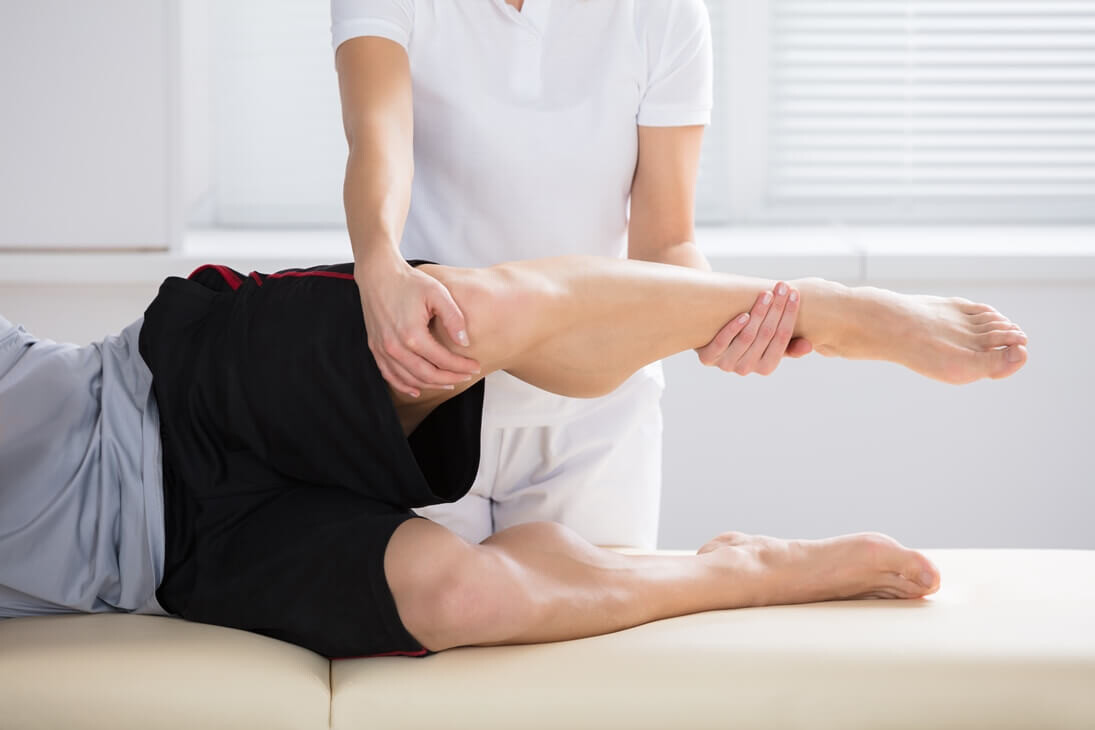
An effective warm up will also deliver nutrients to the muscles more efficiently. This, in turn, can prevent a quick build-up of lactic acid – too much lactic acid is known to contribute to muscle aches and even a burning sensation in the limbs.
The ideal warm up should last for at least ten minutes and it should cover all muscles. Take a look at our blog ‘Stretches for runners’ for more information and easy to follow videos.
2. Adjust your route

Even though you may have managed to run 10km on Monday, that doesn’t mean you will be able to run the same distance or more on Tuesday. That’s because fatigue in the legs can build up over several days. Therefore, instead of doing the same run over and over, it is essential to allow yourself short runs, or rest days in between long runs. On the whole, it is more important to ensure your run is of a high quality, rather than trying to achieve a certain distance. This will strengthen your muscles and improve performance in the long run.
3. Adjust your stride
Sprinting in short bursts, and keeping the pace slower in between, is thought to be a more effective training regime than continuing to run at a moderate pace. That’s because this approach builds muscle strength and fitness.
As soon as you feel your legs getting tired, try to lengthen your stride, without increasing the pace. This will stretch your muscles and disperse the build-up of lactic acid. As I’ve already mentioned, too much lactic acid is a contributing factor in heavy, painful legs whilst running.
4. Adjust your focus
Running along a stretch of straight road with nothing to look at, or pounding it out on a treadmill in the gym, can be pretty dull. Therefore, with nothing else to focus on, it is likely you will soon become absorbed in the tired feeling of your legs.
To distract yourself from this, try listening to music or a podcast. Alternatively, running a new route, or a route with lots of twists and turns, should give you something else to turn your attention to.
How to relieve heavy legs after running
5. Stretch
Just as warming up before a run is important, so too is stretching out your muscles afterwards. If you do not do this, your muscles are more likely to cramp and become painful the next day. Stretching your muscles also helps to minimise the effects of lactic acid in the muscles, and also makes you less prone to developing injuries.
6. Rest
A small amount of rest will speed up the recovery process, and prevent further injury from occurring. Rest will also help ensure your legs are ready for their next run, should you decide to do one in the days ahead.
Our blog ‘How to recover from a workout’ will provide more information about what to do to help your body after a period of exercise.
7. Massage your legs
If your legs need that extra bit of help to get moving the next day, then a massage may be just the thing. This encourages blood flow to the deep tissues thus removing waste products such as lactic acid from the muscles. Not only that, a massage may encourage nutrients and water to enter the muscles, therefore, repairing and restoring the tissue.
Massages are a particularly good idea if you are training hard and regularly, as this also helps to prevent injury to muscle.
8. Check for injuries
As a runner, the worst thing you can do is run on injured joints or muscles. Not only will your legs feel very painful, but it is likely to cause lasting damage. Therefore, do not battle on regardless of aches and pains, and do not ignore warning signs of pain and muscle fatigue as developing strains, sprains or stress fractures will take you off the running scene for a long time. It’s definitely not worth running for an extra mile if it means you can’t put your running shoes on for the next couple of months!
Remedies for tired legs
9 – Watch your diet
Not only is it important to run whilst full of nutrients to sustain you, but it is also critical to stay properly hydrated. Just ensure you take small sips, however, rather than big gulps as, coupled with the movement of running, too much water has the potential to cause digestive upset. If you are going for a particularly hard or long run, you could consider taking an energy bar with you as well.
You need to feed your muscles by giving them the correct balance of protein, carbohydrate, healthy fats and salt. Wholegrain varieties of bread, pasta and rice are higher in fibre and energy than their white or refined counterparts. Also, treating yourself to a small piece of dark chocolate after each run will not do any harm.
(09/23/2022) ⚡AMP
by A. Vogel
Why more men than women are running in ultra and trail races?
A recent study published in the Sport and Society journal set out to determine what barriers prevent women from entering ultra-distance races. It’s certainly not news that far more men sign up and race ultra and trail races than women.
Hardrock 100 recently added changes to their lottery system so that the percentage of women that enter the lottery is equal to the percentage of women racing, and other races are following their lead and promoting inclusivity in ultra and trail racing. In a sport where we are seeing women beat men at longer distances, why are so few women signing up to race?
The study

The research was conducted via online questionnaires sent to participants of all genders in two ultras in the U.K., the Highland Fling 85 km (53-mile) Ultratrail Race, and the Jedburgh Three Peaks Ultra. Jedburgh Three Peaks Ultra is a 61 km (38-mile) race that notably takes a firm stance on promoting inclusivity within their race and the larger Jedburgh Running Festival, offering a non-binary category for all of their races and encouraging transgender athletes to sign up in the category they identify with.
Following the online questionnaires, one-on-one phone interviews were conducted to compare the racing and training experiences between men and women and to determine what differentiated them.
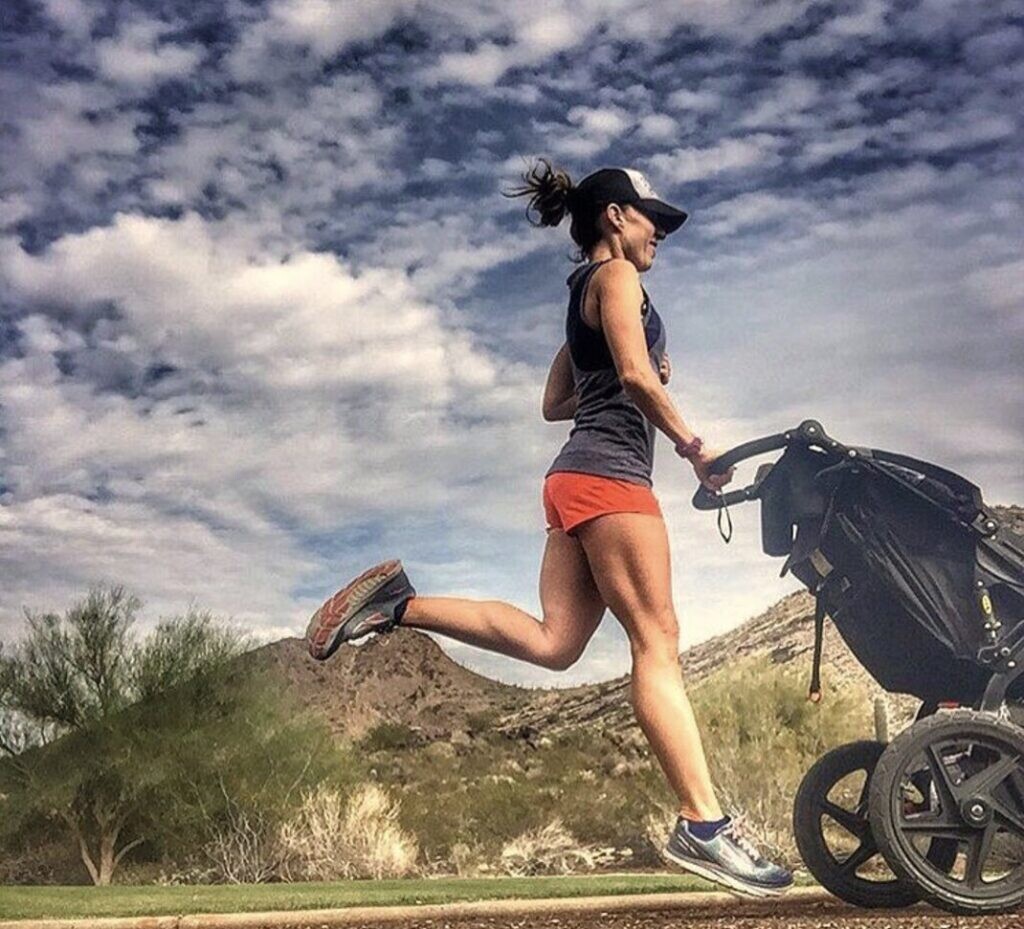
The takeaway
The conclusions researchers arrived at probably aren’t surprising to many women. While time was a factor impeding both men and women from training for longer or terrain-specific (ie. trail) races, it impacted women more. Interestingly, more men than women within the study had dependents, and the study determined that traditional gender roles seem to be the greatest barrier to women signing up for ultras.
Both male and female participants shared that negotiating time for running with family and work commitments required considerable planning and prioritizing and that sometimes this process of negotiation efficacy was a family or team effort.
"Despite gradual shifts towards egalitarian family roles in society, more restrictive traditional gender roles persist, and these may still influence the negotiating-efficacy of female ultrarunners more than males, thereby potentially reducing the availability of female training time,” researchers said.
While this suggests that women are still carrying a greater burden of workload within families, the study concluded with optimism, reporting that more women are signing up for races than ever before. Researchers determined that the current historical influence of traditional gender roles is diminishing, and the ratio of women to men in ultra and trail races should continue to improve.
(09/23/2022) ⚡AMPLeg pain? Four running mistakes you’re making
Running – how hard could it be? After all, you’re just putting one foot in front of the other, right?
Unfortunately, it’s exactly that attitude that’s behind so many leg and foot injuries!
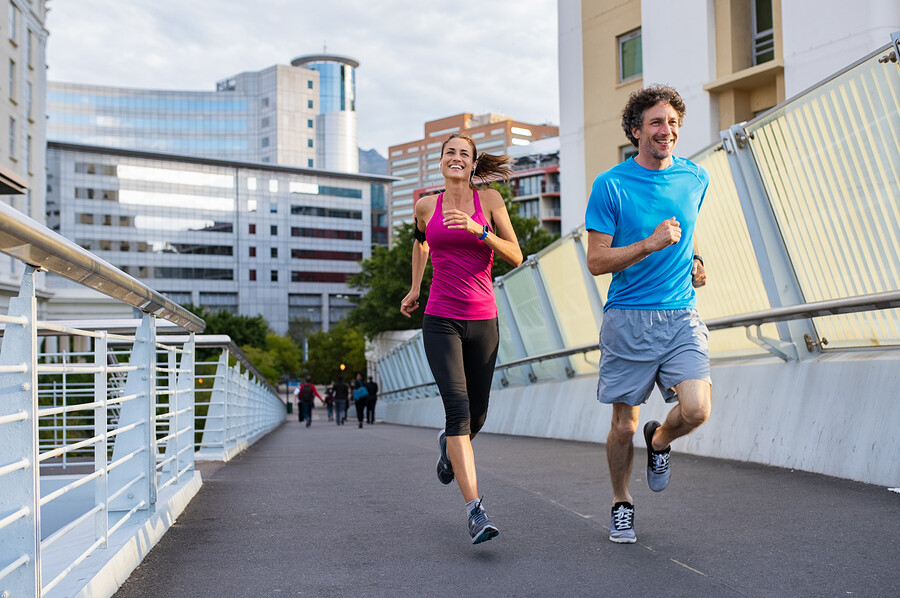
There’s much more to running than just putting on a pair of trainers and going for it. Believe it or not however, there’s a lot going on behind the scenes when you go out for a run.
And with that comes the risk of lower leg pain – especially if you have no idea how to run properly!

What kind of problems might I run into?
Injuries and falls aren’t the only problems you might run into when you go out for a jog – each step you take when you run sends shockwaves up your legs.
Over time, these shockwaves can damage the tissue, ligaments and cartilage in your legs.
This can lead to a whole host of different lower leg pains, including:
Microfractures
Muscle tears
Runner’s knee
Shin splints
Needless to say, any one of these problems may result in lower leg pain strong enough to stop you from running… or worse!
As such, you’ll want to make sure you that you’re running properly, and not making one of these common running mistakes…
Running mistake 1: wearing the wrong shoes
A good pair of shoes is essential – think of them like shock-absorbers for your feet, soaking up and distributing the impacts that come with running and minimising the stress on your lower legs.
When choosing running shoes, it’s essential that you select shoes that are designed with your particular running-style in mind. This directly affects how much of the impact your feet and lower legs are exposed to.
For example, if your footfalls tend to be on the outside of your soles, then you’ll want extra thickness and padding in those parts of your shoe.
Running mistake 2: not warming up
While it can be tempting to skip the pre-run warmup (especially when you’re short of time), we strongly advise against it!
Warm-up exercises “activate” your body, signalling to your organs and muscles to prepare for physical activity.
In particular, this results in increased flexibility, speed and range of motion in your limbs and muscles, reducing your chances of accidentally overstretching your lower legs.
Not to mention, they also prepare you for exercise by starting up blood flow and psyching you up!
When preparing for a run, we recommend cycling through a range of mobility movements for your lower legs – we show our clients complete warm up routines that have them ready to run in under 5 mins.
After that, it’s a good idea to not dive straight into your run, but to open with a brisk walk or gentle jog, gradually working your way up to your normal pace.
Running mistake 3: overstriding
Many people assume that having long strides is a good thing.
However, that’s not always the case!
Think of the amount of force that goes up your legs every time you take a step.
When you overstride, your heel strikes the ground at a harsher angle, sending greater force up your leg than shorter strides would and consequently, leading to a higher risk of lower leg pain.
Ideally, you’ll want your feet to land midsole, with your foot closer to your body. This results in the optimum distribution of force, and is the safest way to run.
Luckily, this type of problem can be trained around with the help of a physiotherapist.
At Physio AUS, our Highett physio work with all sorts of athletes, runners included, to improve their technique.
Running mistake 4: biting off more than you can chew
Running is deceptively simple – after all, the only thing you’ll need are some shoes and a stretch of road to get started.
Unfortunately, that’s also why so many first-time runners end up with lower leg pain – they inadvertently wind up pushing their bodies too far!
Instead, we recommend starting small and gradually bumping up the distances and times.
It’s also a good idea to take periodic “rests” to give your body time to bounce back.
How an Highett physiotherapist helps you run
If you’re keen to get back into running, you may want to touch base with your local physiotherapist.
Physiotherapists may be able to help runners such as yourself get back into running a number of ways.
Conditioning and training that help you get back into running
First-time runners and people who are getting back into exercise after a long time away are especially prone to lower leg pain.
As such, we suggest booking an appointment with your local Highett physio before you take to the track.Using a range of exercises, stretches and other treatments, your Highett physio will help condition, enhance resilience and build strength in your lower leg muscles.
(09/23/2022) ⚡AMPby Physio Aus
Are records going to be broken at the Berlin Marathon this weekend?
The fall marathon season kicks off this Sunday, Sept. 25, in Germany for the 48th annual Berlin Marathon, which is the first of four Abbott World Marathon Majors over the next six weeks. The biggest name is distance running Eliud Kipchoge returns to the course he set the world record on four years ago, but the question everyone is asking is whether he can run 2:01:39 again?
He also looks to become the second man to win four Berlin Marathon titles, joining the great Haile Gebrselassie, who won four consecutive between 2006 and 2009.
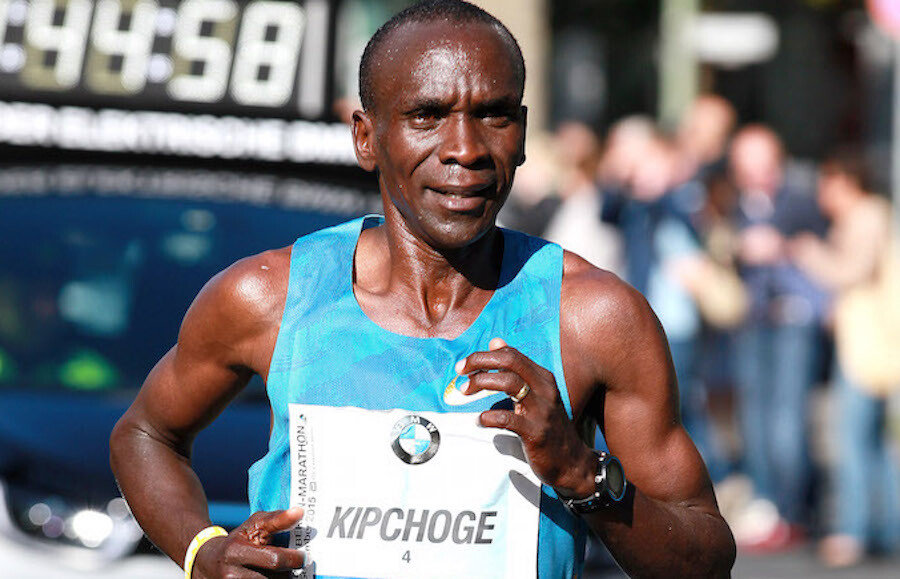
Kipchoge isn’t the only athlete chasing a record in Berlin. U.S. marathon record holder Keira D’Amato has made a quick turnaround from her eighth place finish at World Championships and has her eyes on the American record of 2:19:12, which she ran in Houston earlier this year.
Vancouver’s Natasha Wodak is the lone Canadian in the elite field, and she is looking to take advantage of the fast Berlin course. In 2020, Wodak ran the second fastest marathon time by a Canadian woman, 2:26:19, at The Marathon Project in Arizona. She followed up that performance with an impressive 13th place finish in the marathon at the 2020 Olympics Games.
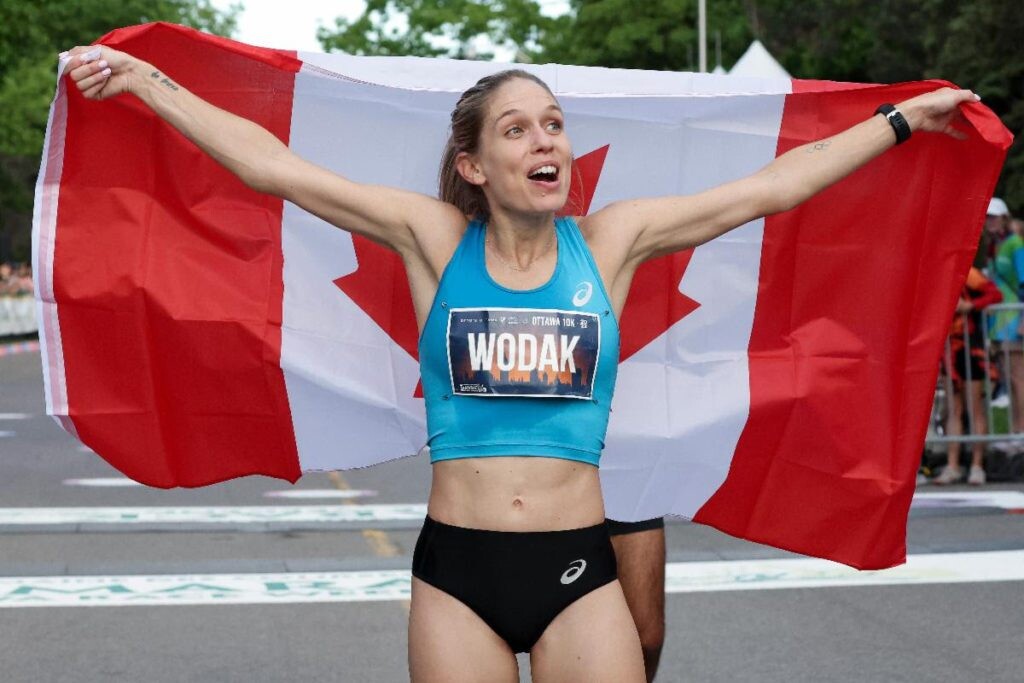
Wodak hopes to shake 90 seconds off her marathon PB Sunday to challenge Malindi Elmore’s Canadian record of 2:24:50 from 2019.
The weather
The race starts at 9:15 a.m. local time on Sunday (which is 3:15 a.m. E.T. in Canada). The temperature looks to be perfect for marathoning — between 10 C and 14 C, with next to no wind.
Men who hope to finish near Kipchoge
It is well-known that Kipchoge is the favorite, but who are the guys most likely to finish second or stick with him until 30K?
Ethiopia’s Guye Adola, who was second to Kipchoge in 2017, won Berlin last fall in 2:05:45. The win marked his first major victory after struggling with injury earlier in his career. Like Kipchoge, Adola is fast and knows what it takes to win on this course. In 2017, he ran the fastest marathon debut in history on this course but since has not run near 2:03.
Adola is the only other sub-2:05 runner, which Kipchoge is bound to finish under. If anyone else wins this race, it would take a miracle, or mean both Kipchoge and Adola have blown up.
Ghirmay Ghebreslassie of Eritrea won the 2015 World Championships in Beijing and the New York Marathon in 2016 after missing the podium at the Rio Olympics. Although Ghebreslassie has the experience, in a sub-2:05 race, he may not have the speed to keep up with Adola and Kipchoge.
Marley’s Pick: Eliud Kipchoge (KEN) – 2:02:29
Can Keira D’Amato become the first American winner?
D’Amato has the fastest time out of the 24 runners in the women’s elite field with a time of 2:19:12, but she has only had nine weeks to prepare for Berlin after her 2:23:34 at the World Championships in Eugene. She was only selected for the U.S. team after Molly Seidel dropped out a few weeks before the championships.
To run 2:23 at worlds off not much training is impressive and should be a confidence booster for D’Amato on a faster Berlin course.
Many of the top Kenyan and Ethiopian runners will be competing later this fall, but there are other sub-2:22 runners in Berlin. Kenya’s Nancy Jelagat Meto (2:19:31 – Valencia) and Vibian Chepkirui, the winner of the Vienna City Marathon in 2:20:59 in April, have the experience and speed to deny D’Amato the title.
Rosemary Wanjiru of Kenya, a 65:34 half marathoner, is making her marathon debut here in Berlin. Although this is her first marathon, she will likely be in contention most of the race.
Marley’s Pick: Rosemary Wanjiru (KEN) – 2:18:39.
(09/23/2022) ⚡AMPby Marley Dickinson
BMW Berlin Marathon
The story of the BERLIN-MARATHON is a story of the development of road running. When the first BERLIN-MARATHON was started on 13th October 1974 on a minor road next to the stadium of the organisers‘ club SC Charlottenburg Berlin 286 athletes had entered. The first winners were runners from Berlin: Günter Hallas (2:44:53), who still runs the BERLIN-MARATHON today, and...
more...Eliud Kipchoge ready for fast times in Berlin
Eliud Kipchoge is ready for a very fast race in the BMW BERLIN-MARATHON on Sunday which may well lead him to break the world record here for the second time.
The double Olympic champion, who set the current world record of 2:01:39 in Berlin four years ago and also broke the two-hour barrier when he ran 1:59:40.2 in a race in Vienna in 2019 which did not conform to regulations, will start as the clear favourite.
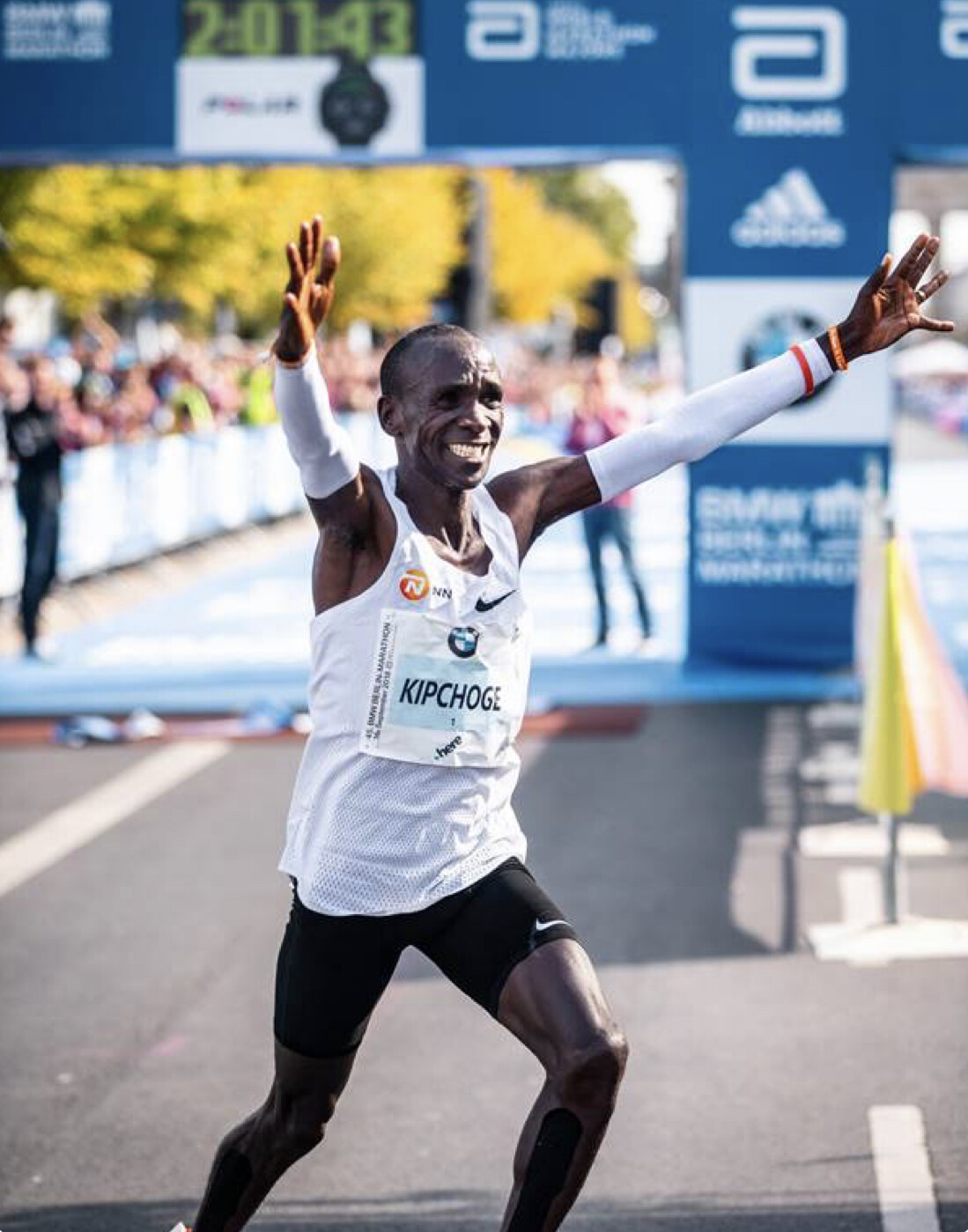
Organisers of the BMW BERLIN-MARATHON have registered 45,527 runners from 157 nations for the 48th edition of the event. Germany’s most spectacular road race is part of the Abbott World Marathon Majors (AWMM) and is also a Platinum Label Road Race of the international athletics federation, World Athletics.
The 37-year-old Kenyan held back from making any hard and fast promises when he spoke two days before the BMW BERLIN-MARATHON. “I’d like to thank the organisers for letting me race again in Berlin after four years and expect a very good race. I’ve trained well as usual – every training day is a challenge.”In response to the question at the press conference, what would be “a very good race” for him, Eliud Kipchoge answered: “A very good race is a good race.”
That got the audience on his side before he added: “I want to inspire people and if a course record comes out of this at the end, I will appreciate it,” added this outstanding athlete. It should be noted that the course record is, of course, the world record, but Eliud Kipchoge was careful not to utter these words.
The world record holder, whose career so far has brought him victory in all but two of his 18 marathons, could well achieve his fourth win in Berlin after taking the title in 2015, 2017 and 2018. That would bring him equal with the Ethiopian legend Haile Gebrselassie as the two men with most wins in Berlin. If the world athlete of the year for 2018 and 2019 is in world record form, Eliud Kipchoge should prove unbeatable on Sunday.
On the other hand, the elite field has plenty of strength in depth. Heading the list of challengers is last year’s champion Guye Adola from Ethiopia, winning the title in unseasonably warm conditions in 2:05:45 and beating the Ethiopian superstar Kenenisa Bekele into the bargain.
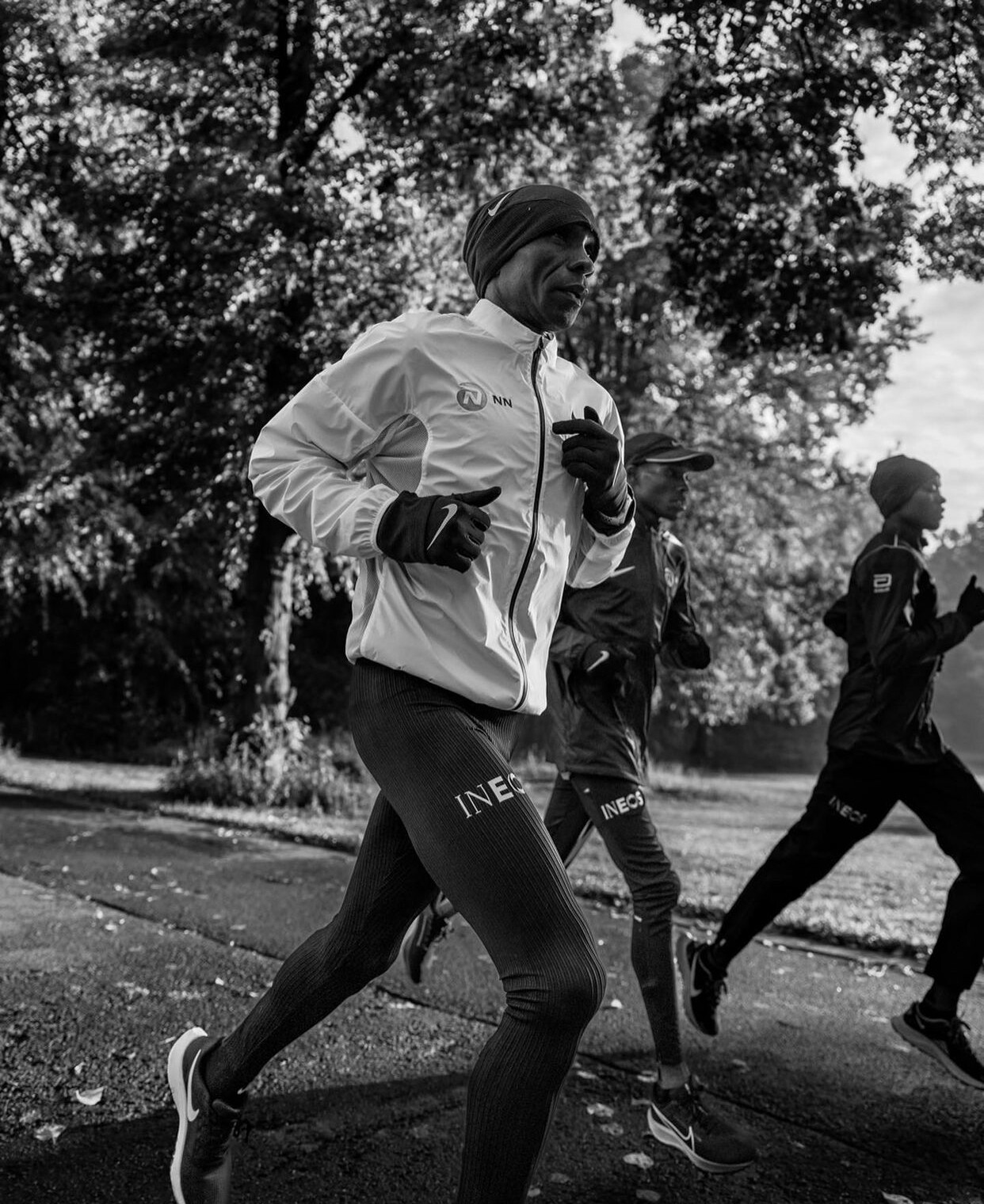
It was in Berlin in 2017 that Guye Adola ran what remains his personal best of 2:03:46 and on his debut at the distance. Only Eliud Kipchoge finished ahead of him though from time to time Adola took the lead. “I have prepared well and look forward to the race,” said the 31-year-old, who described Kipchoge as “a hero.”
The BMW BERLIN-MARATHON has greater strength in depth among the men’s elite field than ever before. As many as 18 runners have personal bests under 2:08. Among them is Ghirmay Ghebreslassie who caused a surprise when winning the world title in 2015 and also won in New York the following year. The Eritrean athlete has a best of 2:05:34 which he set in finishing third in Seville in February.
“It’s a big challenge to run in such a field and against Eliud Kipchoge. I’ll do my best and my aim is a place on the podium,” said Ghirmay Ghebreslassie.
An unusually large number of Japanese runners will be among the elite starters, the reason being that they are trying to qualify for the 2024 Olympics. There will be 13 of them with personal bests of under 2:10 in the BMW BERLIN-MARATHON. The fastest of them is Ryu Takaku with a best of 2:06:45.
The leading German in the field is Johannes Motschmann, who was a member of the German team at the European Championships which won the silver medal in Munich. Despite a short recovery time of six weeks since that competition, the 28-year-old wants to improve his personal best of 2:12:18 in the direction of 2:10.
The race in Berlin is the biggest of my career so far. Since I’m a hometown boy here, I’d even rate it above the European Championship marathon,” said Motschmann, who runs for the Marathon Team Berlin.
The Austrian record holder, Peter Herzog, will also be aiming to take advantage of conditions at the BMW BERLIN-MARATHON and run faster than ever before. His current best is 2:10:06 and his ambition is to become the first Austrian.
While a double world athlete of the Year in Eliud Kipchoge will take centre stage, a former star of world sport will be running some way behind him: the Brazilian football legend Kaká, a member of the team which won the World Cup in 2002, and also a Champions League winner and Footballer of the Year.
“I definitely wanted to run a major marathon and asked friends who recommended Berlin to me. That’s why I’m here. On Sunday I want to run 3:40. The marathon is something very special in that we, as mass runners, run together with the elite. I’m very excited,” admitted Kaká at the press conference.
Elite runners with personal bests
Eliud Kipchoge KEN 2:01:39
Guye Adola ETH 2:03:46
Ghirmay Ghebreslassie ERI 2:05:34
Dejene Debela ETH 2:05:46
Mark Korir KEN 2:05:49
Ashenafi Moges ETH 2:06:12
Tadu Abate ETH 2:06:13
Bethwel Yegon KEN 2:06:14
Awet HabteERI2:06:25
Ryu TakakuJPN2:06:45
Limenih Getachew ETH2:06:47
Hiroto InoueJPN2:06:47
Zablon Chumba KEN 2:07:18
Kenya Sonota JPN 2:07:23
Kento Kikutani JPN 2:07:26
Kazuki Muramoto JPN 2:07:36
Tadashi Isshiki JPN2:07:39
Atsumi Ashiwa JPN 2:07:54
Daisuke DoiJPN2:08:13
Rintaro TakedaJPN2:08:48
Yuki Matsumura JPN 2:09:01
Peter Herzog AUT 2:10:06
Johannes Motschmann GER 2:12:18
Third photo: Kipchoge's first run in Berlin
(09/23/2022) ⚡AMPBMW Berlin Marathon
The story of the BERLIN-MARATHON is a story of the development of road running. When the first BERLIN-MARATHON was started on 13th October 1974 on a minor road next to the stadium of the organisers‘ club SC Charlottenburg Berlin 286 athletes had entered. The first winners were runners from Berlin: Günter Hallas (2:44:53), who still runs the BERLIN-MARATHON today, and...
more...Here’s how to master that explosive finishing kick, become a pro at finishing hard on tired legs with these workouts
Many people believe you’re either born able to finish fast, or not–but that’s not actually the case. The ability to finish strong on tired legs can be learned and improved on. Coach and author Steve Magness says that while people assume they’re limited by genetics, “that stuff can be manipulated to a degree.”
Here are three workouts to add to your routine so that your finishing kick astounds everyone around you. While these are easily done on a track, you can take them to the road or wherever you prefer to train, and your measurements don’t have to be exact. If you’re a newer runner, feel free to modify the workout by doing less reps, and gradually adding more as you get stronger.
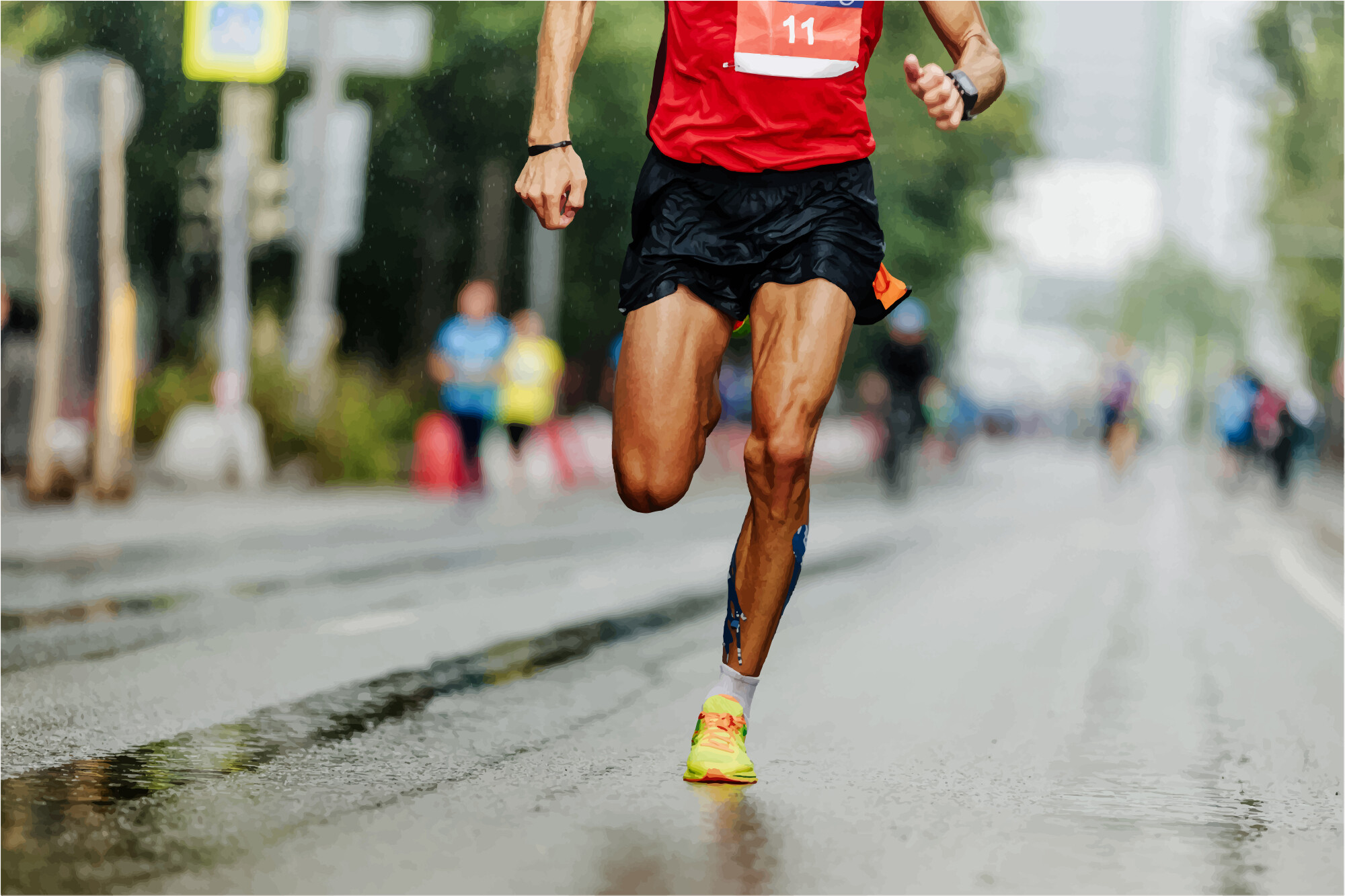
500 meter repeats with bounding
Bounding involves taking long, exaggerated strides, driving off the back leg and lifting the front knee as high as you can. These increase your force requirement and muscle-fibre recruitment. Adding the kick at the end of each repeat forces you to switch between speed and fatigue resistance.
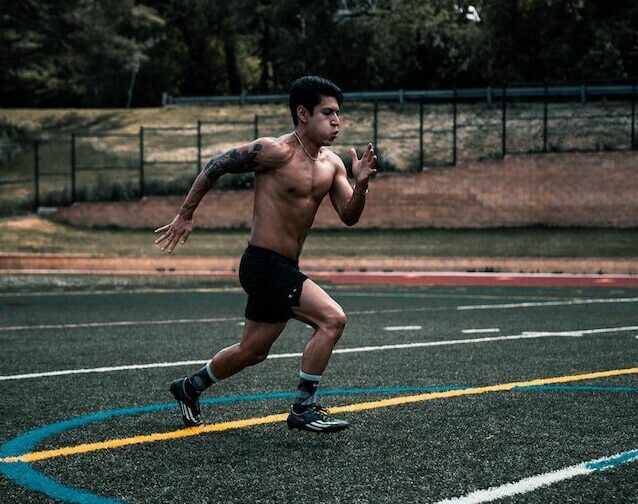
Warm up with 10 to 15 minutes easy running
Try four to six 500m repeats, with the first 200m at 5K pace or faster, moving straight into 100m of bounding, followed by a 200m kick finish.
Cool down with 10 minutes easy running
800 meter accelerations
For each rep, run the first 400m at 10K race pace, the next 300m at 5K pace and the last 100m full-out.
Warm up with 10 minutes easy running
Run four to six 800m repeats with three minutes rest in between each 800m
Cool down with five to 10 minutes easy running
Practicing relaxing to open up on that final stretch
I had a track coach in high school that had us repeat “relaxed runners are fast runners” every practice. He was right–runners tend to tense up during the end of a race, trying to force a fast finish, and end up actually slowing down. Magness suggests shaking it out. “One of the best things you can do is to just drop the arms, open up the hands and shake them out for a second.’
Aim for faster turnover and even, controlled breathing. Like anything else, running relaxed when you’re tired takes practice, and it’s normal for it to feel challenging at first.
(09/23/2022) ⚡AMPby Running Magazine
Aleksandr Sorokin wants to become the first man to run 200 miles in 24 hours
On Sept. 17, the world’s fastest ultrarunner, Aleksandr Sorokin of Lithuania, demolished his previous 24-hour world record from a year ago, running 319.61 kilometers at the IAU 24-hour European Championships in Verona, Italy. There is no doubt that Sorokin’s record will stand the test of time, but the 40-year-old ultrarunner says he’s not done yet with the 24-hour distance.
After breaking Yiannis Kouros’s long-standing 24-hr record of 303.506 km a year ago, with 309 km, Sorokin has once again redefined human performance, beating his old mark by more than 10 kilometers.

No runner has ever covered 200 miles (321.86 km) in 24 hours, but Sorokin has come the closest, with his most recent record of 319.61 km. “I have unfinished business with the 24-hour distance,” he says. “There’s much more to come.”
Ten kilometers is a significant improvement for Sorokin in a year, but he says he hasn’t changed much in his training. “Nothing has changed, but little by little, my body has become faster,” he says. “We’ve added a little more mileage this time around, too.”
Three to four weeks out from the European championships, Sorokin’s peak training weeks were between 360 and 380 kilometers (an average of 50-plus kilometers per day).
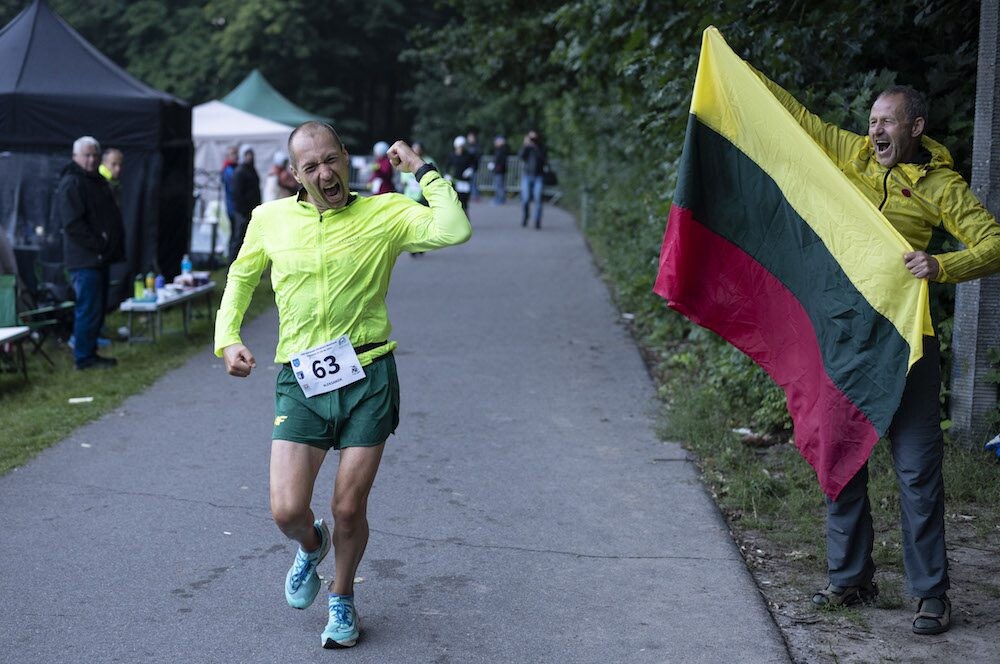
“My training for these ultra races is no secret,” Sorokin says. “My coach and supporters motivate me to achieve my goals and work hard.” Sorokin has a public Strava profile where he uploads all his training in the lead-up to each race.
In a 2021 interview with Sorokin, he spoke about how winning European championship gold for Lithuania was his ultimate goal when he began running in 2013. Sorokin holds seven world records on the track and road: 100,000m (track), 100 miles (road), 100 miles (track), six-hour run, 12-hour run (track), 12-hour run (road), 24-hour run (road).
The Lithuanian distance runner has no races planned for the immediate future but he is excited for what is yet to come. “I think running 200 miles in 24 hours is possible,” says Sorokin. “There are many factors that need to go your way—like good weather and a fast course.”
In January, Sorokin became the first runner to break the 11-hour barrier for 100 miles in 10 hours, 51 minutes and 39 seconds at the Spartanion Race race in Tel Aviv, Israel.
(09/22/2022) ⚡AMPby Running Magazine
Haile Gebrselassie to be the International Event Ambassador at the Vedanta Delhi Half Marathon 2022
Haile Gebrselassie, one of the greatest distance runners in history, will be the International Event Ambassador at the Vedanta Delhi Half Marathon 2022 on Sunday October 16.
The Ethiopian legend won the 10,000m gold medal at both the 1996 and 2000 Olympic Games as well as four successive World Athletics Championships 10,000m titles from 1993-99.
In addition, Gebrselassie won a further four world indoor gold medals and the 2001 World Athletics Half Marathon Championships title, and set no less than 15 world records outdoors and on the roads, and a further five world indoor records, revising the record books over a stunning range of distances from 1500m to the marathon.

“There are few things more inspiring and joyful than seeing a city run together. When we run together, we stay together, we win together,” said Gebrselassie, whose activities in Delhi will include motivating and inspiring the thousands of runners who will take to the streets of the Indian capital next month, as well as promoting the event in the final days before the gun goes.
"Running and the community are the two things that are most important to me, and an event like the Vedanta Delhi Half Marathon brings them together in a special way.
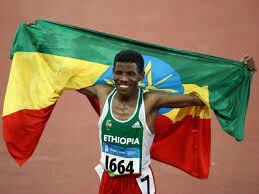
“The enthusiasm of the host city inspires something special in everyone involved in making this beautiful event possible. I’m going to be cheering all the runners as we celebrate the different hues of Delhi,” he added.
Uganda’s Jacob Kiplimo, the reigning world half marathon champion and world record holder over the distance, will headline the elite field for the 17th edition of the Vedanta Delhi Half Marathon 2022.
The Vedanta Delhi Half Marathon 2022 is a World Athletics Elite Label Race and one of the world's most prestigious half marathons.
(09/22/2022) ⚡AMPby Runners Web
Vedanta Delhi Half Marathon
The Airtel Delhi Half Marathon is a haven for runners, creating an experience, that our citizens had never envisaged. The streets of Delhi converted to a world-class running track. Clean, sanitized road for 21.09 kms, exhaustive medical support system on the route, timing chip for runners, qualified personnel to ensure smooth conduct of the event across departments. The race...
more...Eight Interval Training Workouts used by World Champions and Coaches
Interval training involves high-intensity repetitions followed by standing, walking or jogging recoveries. Interval training can be of varied length but are usually short and intensive accelerations.
This forms a crucial part of all distance runners – some throughout the year, others closer towards the lead-up to a race. Here are some examples of interval sessions used by elite athletes.
1. Craig Masback who represented the United States in international competitions on several occasions devised his own interval running workouts. He and his roommate ran 6 x 300m followed by a 2min rest. They would then progress to 4 x 1100m with 800m between each set at an aerobic pace where they ran the last 300m at a hard pace. Including warm-up and cool-down they would run a total of 10miles during their session.
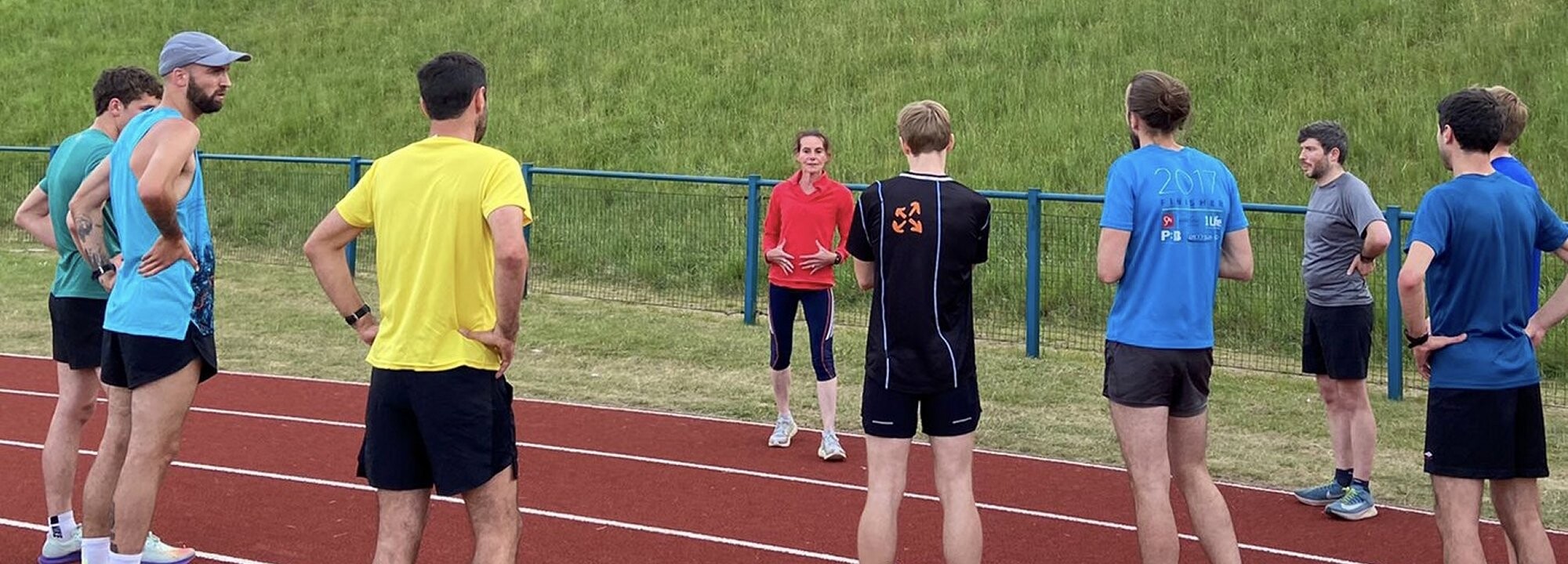
2. Arturo Barrios, a five-time world record holder and Olympic Games runner, had a favorite interval running workout: 10 x 1000m on the track @ slightly faster than 5km race pace, with a slow jog recovery as rest. Barrios used this workout every other week in the lead up to a race with his last session occurring 2 weeks before racing.
3. Silvio Guerra, gold medalist at the South American Games and Olympic Games runner, found that his most important track workout was 8 x 1km with 2mins to 2:30mins recovery depending on weekly workload and time of the season. He recommends this workout as it provides a runner with speed and endurance. He used a 3-mile warm-up that ended with a quick pace followed by 15mins of stretching and striding (10 strides).
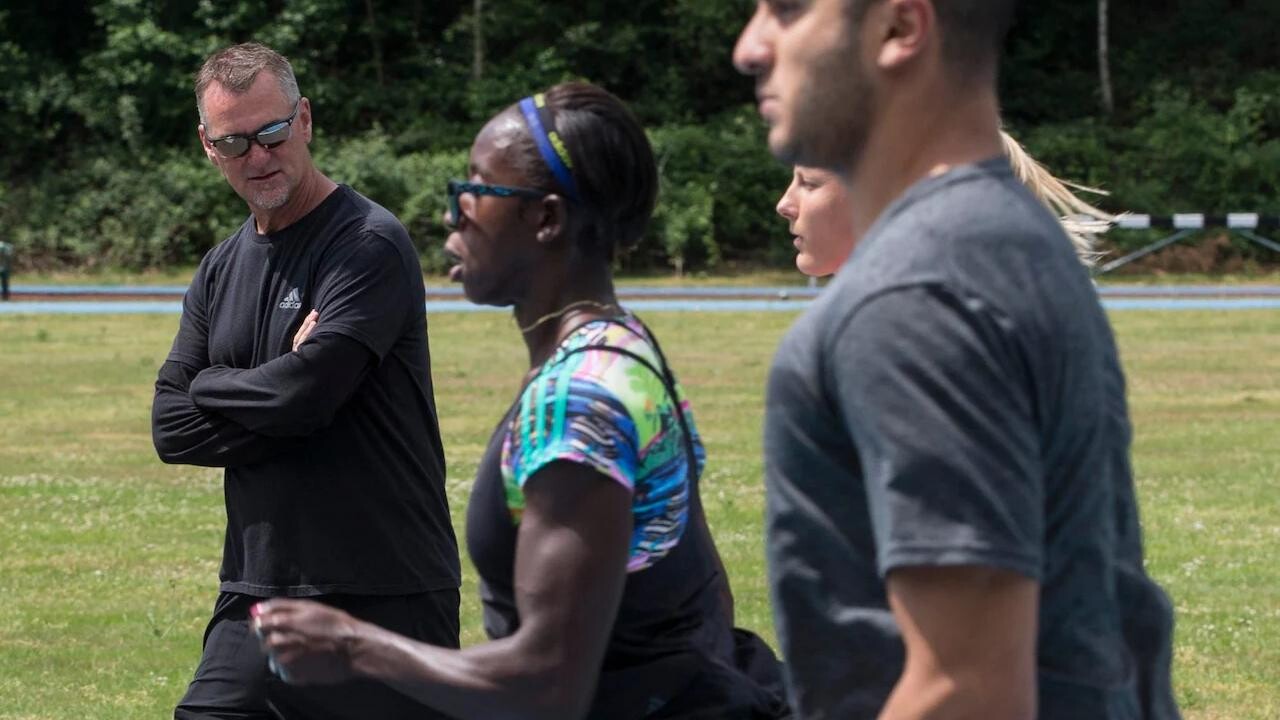
4. Bill Dellinger, a bronze medalist at the 1964 Olympic Games for the 5000m, used advanced interval training to his advantage. He completed 3 miles of alternating 30s and 40s 200m runs with no recovery. The workout finished when he could not keep up with the pace anymore. As a coach he uses the 40-30 with his athletes almost 3 times during winter training with some of his best athletes going for 18 laps continuously. He also used the 800-300, which consisted of running 800m at a runner’s 5km goal pace with a 400m recovery, followed by 300m at mile race pace with a 200m recovery in 40s. The cycle repeated until the athlete could not keep up with the pace anymore.
5. Libbie Hickman, World Champion and Olympic Games runner for the US, used a straightforward 8 x 300m in 48s with a 200m recovery phase. She tries to be in a fairly recovered condition before the start of every 300m also making this her toughest workout. Hickman feels that runners need to have a strong base before trying a workout like this.
6. Marc Davis, a former US record holder for 2 miles, used a fast ladder style workout for his interval training sessions. He ran a hard mile, followed by a 1200m, 800m and 400m. The recovery between each was half the distance of each segment. He ran his workouts close to a 4-minute mile pace and called it the Alberto Salazar special.
7. Adam Goucher, a US national champion runner, used to run 10 x 500m on the track with a 100m recovery between each repeat. Goucher ran his 500m between 1 minute 16 seconds and 1 minute 18 seconds. He calls it ‘Coach Wetmore’s Secret’ and feels that it provides great preparation for a 5km. Goucher recommends bringing the training down to your level by providing adequate recovery so that you are able to finish the session. As you improve and get fitter reduce the recovery time to suit your needs.
8. Rich Kenah, an elite runner who represented the US, uses a 4 x 400m with a 4min jog recovery when he approaches his racing season. His wife Cheri uses a 3 x 1mile workout running them in 4:45. To them, these sessions are key indicators for their current state ‘a great barometer of our fitness’. For example, if Rich can run all 4 sets of 400m in 52.0s, he knows that he is in good shape for a quality 800m race.
The workouts are preceded by a 1-hour warm-up including jogging, stretching, drills and striding. This particular session usually comes after a month of ‘fairly high volume’ during the season.
Conclusion
Interval training is a form of workout that is used by runners and coaches across the world. They help improve your speed and endurance while simulating situations and pain that you are likely to face during your races. There are several ways of doing interval training across a lot of surfaces, therefore there is no one right way to complete this kind of a session. Find what suits your current level of fitness and race distance and to create an interval session for your needs.
(09/22/2022) ⚡AMPby Chelsea Ho
Tips to build back your confidence after a running break
If you haven’t run in a while and you’re worried about getting back into it, you’re not alone. Setbacks can happen to anyone, and everyone takes a different amount of time to return to running confidently. When you are coming back from a long break or an injury, it’s easy to compare your current fitness with your former results, but understanding your setback can help you to gain confidence and motivate you to get back on track.
Here are a few things to remember to build back your confidence.
Set short-term goals

Long-term goals are easy to set, but hard to achieve. Everyone can dream of making their comeback at Boston or getting back to their previous fitness, but physically getting there requires confidence in your training.
Instead of setting a long-term goal, focus on a few shorter-term goals, so you can enjoy a feeling of accomplishment before you tackle bigger ones. Short-term goals can help increase your motivation to keep working toward your long-term goal.

Take it slowly
Whatever you do, do not rush your return to running. Regardless of where you are at in your training, it’s essential to listen to your body and take plenty of rest days, rather than trying to cram all the running you missed into the next few weeks. Returning to your previous fitness will take time, and it’s better to start with a few weeks of easy jogging before hopping into hard workouts.
Get into a routine
Finding a training plan for a short-term goal (like a 5K or 10K six or eight weeks from now) and setting a running routine can help you get back on track. Once you find a routine of running two or three times a week, your training runs will begin to feel like second nature again, and you’ll look forward to them, instead of dreading them.
Knowing what you can expect in your training can help boost your confidence levels.
Enjoy the process
Rome wasn’t built in one day, and neither was your marathon prep. Enjoy the process of your training build, and don’t put too much pressure on yourself to get runs done. Progress takes time.
If you are still struggling with running confidently, it may be a sign you need more time off or a different structure to your training. Running should be fun, and it’s crucial to find a balance in your training between regular efforts, hard efforts and recovery.
(09/22/2022) ⚡AMPby Marley Dickinson
Two-time Vienna champion Vibian Chepkurui now targets Berlin glory
Two-time Vienna Marathon champion Vibian Chepkurui has set her sights firmly on successfully graduating to the World Marathon Majors and claiming the Berlin title this Sunday.
Chepkurui, who trains in Iten, Elgeyo Marakwet County, has been preparing for the Berlin Marathon for the last three months and is confident of a good outing on the streets of Germany’s political capital.
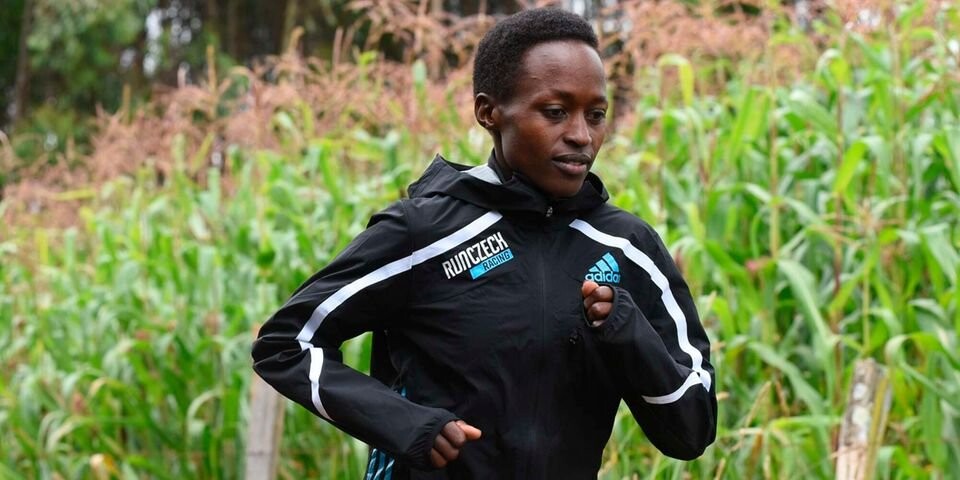
Kenya will be seeking to recapture the title that Ethiopia bagged in the last two editions with Gotytom Gebreslase having won last year while Ashete Bekere bagged victory in 2019.
The last Kenyan athlete to win the race was Gladys Cherono who ran a course record two hours, 18 minutes and 11 seconds in 2018. Cherono has since retired from elite running.

“My target in Berlin is to run my personal best from 2:20:59 to 2:18 and I believe if the weather conditions will allow, I will be able to hit the target,” Chepkurui, who is managed by Ikaika Sports Management, told Nation Sport at her home.
She said that after running well in this year’s Vienna Marathon in April where she clocked a course record, she is confident of an “impressive race” in her first major marathon.
(09/21/2022) ⚡AMPby Bernard Rotich
BMW Berlin Marathon
The story of the BERLIN-MARATHON is a story of the development of road running. When the first BERLIN-MARATHON was started on 13th October 1974 on a minor road next to the stadium of the organisers‘ club SC Charlottenburg Berlin 286 athletes had entered. The first winners were runners from Berlin: Günter Hallas (2:44:53), who still runs the BERLIN-MARATHON today, and...
more...African Games 5,000 meters champion Lilian Kasait is the latest Kenyan athlete to be banned for violating doping rules
World Athletics’ Athletes Integrity Unit (AIU) disclosed on Wednesday that it had banned the 2017 World Cross Country bronze medallist for a period of 10 months starting April this year for using a prohibited substance, Letrozole.
Consequently, AIU disclosed that Kasait's results from January 20, this year have been disqualified.
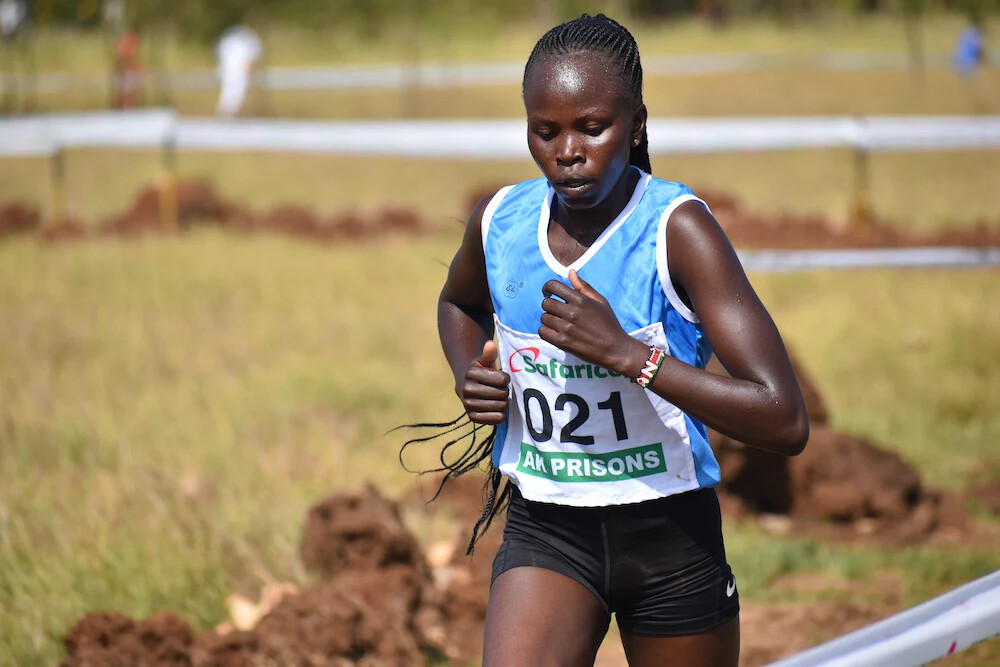
The ruling from AIU indicated that an out-of-competition provided by the 25-year-old Kasait during a doping control conducted on behalf of the AIU on January 20, this year.
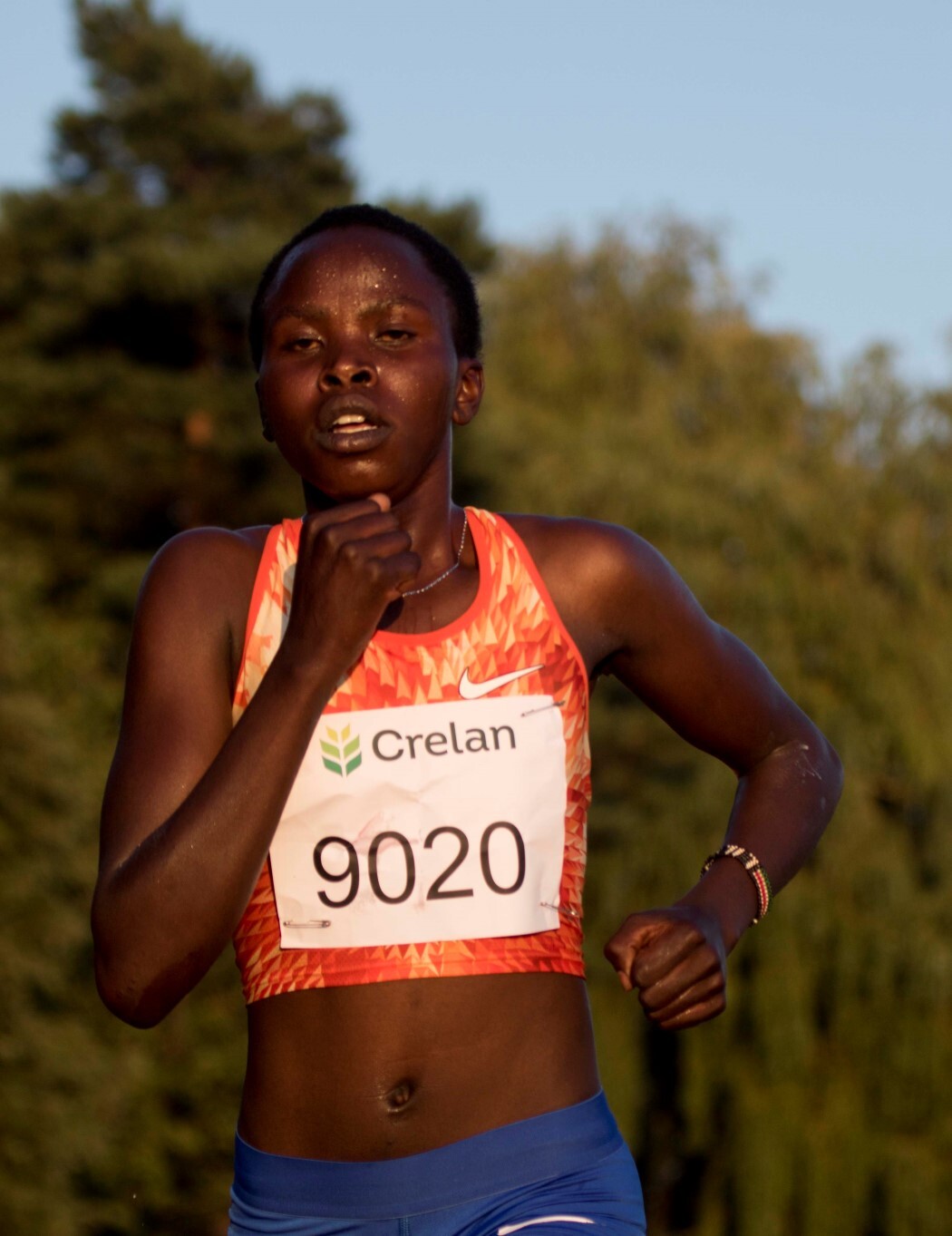
“It resulted in an adverse analytical finding for Letrozole, which is prohibited at all times, which was potential anti-doping rule violations (ADRVS) pursuant to Rule 2.1 and Rule 2.2 of the World Athletics Anti-Doping Rules (ADR)," said AIU who notified the athlete of the violation on February 16 this year.
Kasait now joins a long list of close to 20 Kenyan athletes who have been banned or suspended for various doping offences this year.
The last time for Kasait to compete was last year where she won the national trials in 5,000m to represent Kenya at the Tokyo Olympic Games where she finished 12th.
The suspension comes after five Kenyan athletes were banned from the World Athletics Championships held on July 15 to 24 in Oregon, USA, and Commonwealth Games held July 28 to August 8 in Birmingham, England.
The 2019 Boston and Chicago Marathon champion Lawrence Cherono was kicked out of Oregon before the men’s marathon after failing a dope test.
Marathoners Philemon Kacheran, Stella Barsosio, Purity Changwony and 1,500 metres athlete Kumari Taki were also hounded out of the Commonwealth Games for the same reasons.
Middle distance runner Eglay Nalianya was suspended from the World Indoor Championships in March in Serbia, for the use of Norandrosterone.
Long distance runner Mathew Kisorio was banned in April for the second time for four years for his whereabouts alongside Justus Kimutai and Morris Munene Gachaga, who got two years each for a similar offence.
Another distance runner, Joyce Chepkirui, was suspended by the Anti-doping Agency of Kenya (ADAK) for four years in March for discrepancies in her Athletes Blood Passport.
Two-time Paris Marathon champion Paul Lonyangata was among four Kenyans, who were flagged down by AIU in February.
AIU suspended Lonyangata on January 24 for the use of prohibited substance Furosemide. Others are Edward Kiprop Kibet, Tabitha Wambui and Vane Nyaboke.
(09/21/2022) ⚡AMPby Ayumba Ayodi
For the second year in a row, all runners who applied to run the Boston Marathon will be accepted into the race, as long as they have a valid qualifying time
For the second year in a row, everyone who qualified for and applied to the Boston Marathon will get to run.
The Boston Athletic Association (B.A.A.) announced on September 21 that there is no cutoff time for the 2023 race. Applicants who ran a verified qualifying time for their age group and gender during the qualifying period will be accepted into the race, which will be held on April 17, 2023.
The field size of the race is 30,000 runners, which will make the race the same size as the 2022 edition—and almost back to pre-pandemic levels. In 2020, before the pandemic canceled the race, the field size was set at 31,500.
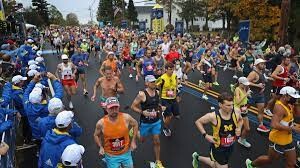
But runners have been slow to return to road racing—even as COVID-19 cases have dropped, vaccines and boosters have become widely available, and races have returned to the calendar.
Athletes cite the expense of race entry fees and the high cost of travel required to get to events, wariness about COVID-19, and shifting motivations as reasons why they’re not racing as frequently as they did in 2019 and the early days of 2020.
It appears even the Boston Marathon is not immune from these trends.

Usually 80 percent of the field, or roughly 24,000 spots, are reserved for time qualifiers. The other spots go to elite runners, those running for charity, and special invitational entries.
According to the B.A.A., the race had 23,267 applicants during this year’s registration period. The field of 2023 qualifiers is made up of 13,315 men, 9,930 women, and 22 nonbinary athletes.
In 2019, the B.A.A. received 27,288 applications for the 2020 Boston Marathon (which never happened, due to the pandemic). Application numbers have declined 14.7 percent from pre-pandemic levels.
The drop is in line with what other races are seeing across the U.S.—but somewhat surprising given Boston’s status as the Holy Grail among many marathoners.
Since the 2014 Boston Marathon, running a qualifying time has been no guarantee of entry into the race. Those who beat their qualifying times for their age and gender by the largest margins get in, while those who just squeak by with a qualifier have often been shut out.
Every year, runners eagerly await the announcement of the “cutoff” time—the margin by which you had to beat your qualifying time in order to gain entry into the race. In 2018, that cutoff reached 4:52 for the 2019 race, and more than 7,000 qualified runners who applied did not get in.
That September, the B.A.A. announced it was tightening the entry standards by 5 minutes across all age groups and genders.
Today’s announcement that there is no cutoff could also affect charities. In the past, many qualifiers who didn’t hit the cutoff ran the race for a charity. But with all verified applicants accepted, that reduces the pool of runners seeking bibs—and doing the required fundraising—for nonprofit organizations.
The 2023 race will be the 10th anniversary of the Boston Marathon bombings.
“On Patriots’ Day, the determination, passion, and unity of marathoners will be on display, bringing our community together in the spirit of athletics and our heritage,” said Jack Fleming, acting Chief Executive Officer of the B.A.A., in a release. “We are very much looking forward to the 127th running of the Boston Marathon in just seven months.”
(09/21/2022) ⚡AMPby Sarah Lorge Butler
Boston Marathon
Among the nation’s oldest athletic clubs, the B.A.A. was established in 1887, and, in 1896, more than half of the U.S. Olympic Team at the first modern games was composed of B.A.A. club members. The Olympic Games provided the inspiration for the first Boston Marathon, which culminated the B.A.A. Games on April 19, 1897. John J. McDermott emerged from a...
more...Thousands of London Marathon runners to face disruption due to train strikes
Thousands of London Marathon runners are expected to have their journeys disrupted by train strikes next weekend.
Asked announced on Tuesday that train drivers at 12 companies across the country will walk off the job on October 1 and 5 over a pay dispute.
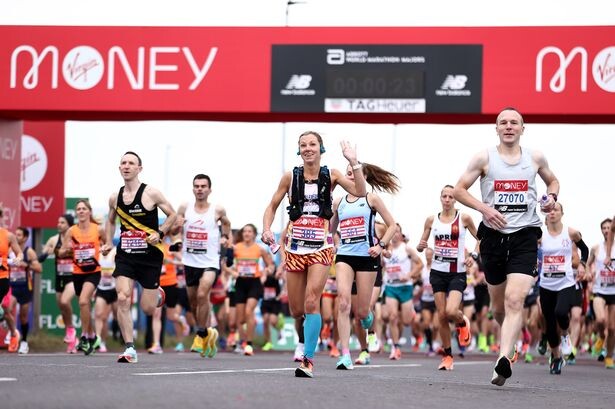
They will be joined by RMT union members, including conductors, train cleaners and station staff and Network Rail’s signallers and maintenance teams, in their national rail strike on October 1.
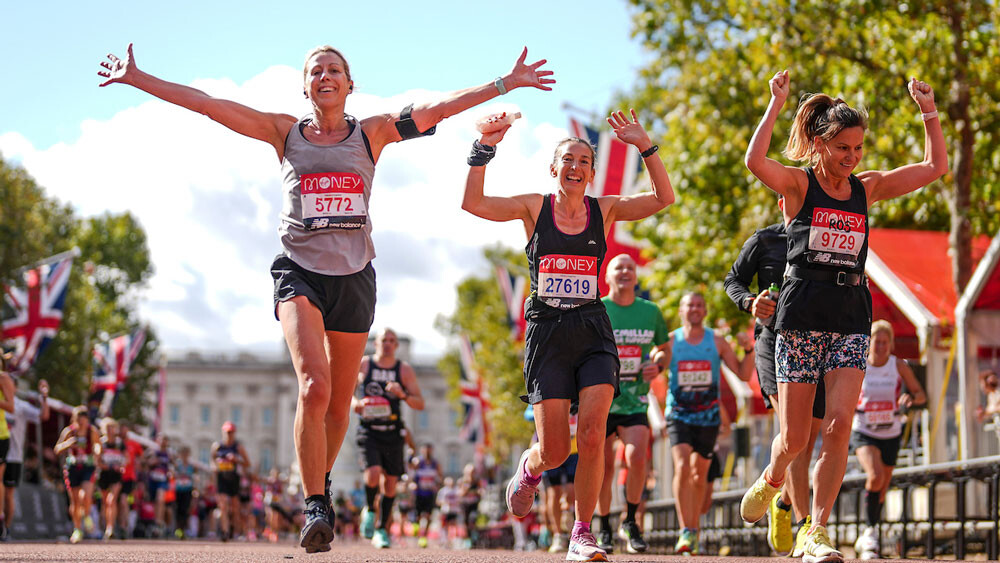
People travelling to the London Marathon on Sunday October 2 will be affected, as the 24-hour strikes have a knock-on effect the following day. There will be no services between 7 and 7.30am, Greater Anglia has warned.
Last year around 40,000 people ran the event in person and 40,000 virtually.
(09/21/2022) ⚡AMPby Miriam Burrell
TCS London Marathon
The London Marathon was first run on March 29, 1981 and has been held in the spring of every year since 2010. It is sponsored by Virgin Money and was founded by the former Olympic champion and journalist Chris Brasher and Welsh athlete John Disley. It is organized by Hugh Brasher (son of Chris) as Race Director and Nick Bitel...
more...This nutritious pizza is fuel for the fastest, you might not be able to run as quickly as Kilian Jornet and Emelie Forsberg, but you can definitely eat like them
Power-ultrarunning couple Kilian Jornet and Emelie Forsberg have it all–glorious mountain miles to run surrounding their home in Norway, the launch of athletic brand NNormal, and delectable home-cooked meals baked from their small family farm. While Jornet recently won both Hardrock 100 and UTMB, Forsberg is an accomplished athlete herself and details her running journey in her book Skyrunner.
Forsberg is also the co-founder of Moonvalley, a plant-based sports nutrition company, with fellow pro runners Ida Nilsson and Mimmi Kotka. Forsberg has a simple pizza recipe that is so easy and versatile you’ll want to have it on a weekly rotation.
Homemade pizza is a family favourite at my house. Since our kids were little, my husband and I have taken turns whipping up a batch of pizza dough, pulling out whatever vegetables we find in the fridge and letting everyone create their own masterpieces. The best part about pizza is that it’s easy to cater to everyone’s unique tastes–try a double batch of dough or split this recipe into four for individual pies.

Emelie Forsberg’s ‘Fast Food’ Veggie Pizza
Ingredients (makes two pizzas)

Dough:
2 1/4 cups almond flour (since there is no yeast in this recipe, Forsberg suggests any type of flour without wheat, including corn, coconut, chickpea, or a combo)
3/4 cup water
1/2 tsp salt
1/2 tsp garlic powder
1/2 tsp baking powder
1 Tbsp vegetable oil
Toppings:
assorted veggies of choice (mushrooms, beets, eggplant, tomato)
tomato sauce
cheese (can use vegan)
arugula for topping
Directions
Mix all the dough ingredients together well. Roll out the dough on some parchment paper and pre-bake it for 5 mins at 225 C (440 F).
While the dough is pre-baking, start chopping your veggies. Forsberg says she throws in what she has at home, and if she’s in a hurry will simply use plain store-bought tomato sauce.
Add tomato sauce, veggies, and your choice of cheese, and pop back in the oven at 220 C for approx 10 more minutes. Top with arugula and enjoy.
(09/21/2022) ⚡AMPby Keeley Milne
What are progression runs?
Progression runs are a worthy addition to a runner’s training arsenal, especially if you’re building up to a pace or returning from an injury.
The concept is simple. Start easy, speed up as you go along and then finish fast.
Correctly done, a progression run can provide an excellent training stimulus with less stress than a full tempo run, and it doesn’t have to be one of the main runs in your training schedule either.
It can be a lighter workout or just a way to test those legs on days in between key sessions.

Building up from a relaxed starting pace, and as the run continues, bit by bit, you edge closer to your intended goal speed.
The longer warm up and build up should leave your legs already a little taxed when you come to the meaty section of the run, but unlike intervals, this isn’t the result of multiple hard running blocks.
Building up to a pace

So you want to test your training progress or maybe you want to see how the legs respond to race pace?
The more this stimulus feels like race day, the better. But rather than running a full distance at your intended pace or just doing intervals on fresh legs, you build up to the speed over a few miles, and then importantly, aim to hold it.
Starting easy, and then progressing to a steady effort before a faster finish can be more difficult than simply doing a warm-up followed by intervals or a tempo run.
It can teach you to work on tired legs in the second half of a race, which is a good time for visualising that push for the finish.
Coming back from an injury
Equally progression runs can be beneficial for those coming back from injury. The extended warm up and build up of speed gets the muscles and joints ready for the higher intensity to come.
Coming back from injury is always difficult. If any issues are lingering then a progression run might highlight them before you run too fast.
When you’re building up to six-minute miles, but the legs start complaining at 6:30s then you can back off to limit any damage done.
Jumping straight into six-minute miling in that situation could result in injuries reappearing and damage the progress of your rehabilitation.
A common mistake for runners to make though is to start the progression aspect of the run too soon. You mustn’t underestimate the added difficulty compared to a straight up tempo effort.
If you don’t have the extra gears to move up into, then you’ll find yourself at top speed halfway through. That’s not fun.
Starting a bit easier allows the body to warm up correctly, keeps the steady section of the progression comfortable, and importantly means you completed the session successfully.
Types of progression runs
Progression running can be as simple or complicated as you like.
Personally, as long as the progression element is in there, set paces aren’t something I would prescribe someone I coach. This is especially true if you are running on undulating roads or trail.
An added benefit of not setting a pace is that it can encourage a runner to think a little more about their effort levels.
Treadmillin’
The main reason for doing a progression run on a treadmill is to alleviate the boredom of the ‘dreadmill’.
I find the monotony of indoor running lessens if you keep increasing the speed with every kilometre (or other set distance or time) until you fall off the back – but be careful.
A treadmill is useful for regulating those early paces and ensuring you get the right speed at the top end too. And it turns out a little computer is better at judging that pace than the human brain.
If you tell a runner to hit X pace at the start most will start out 20 seconds too quick then slow down.
Progressing the progression
The easiest way to segregate a progression run is by time. Simple go for 15/15/15 minutes or 30/10/10 with each section faster than the previous one.
You can get overcomplicated and do 1.3km at 10.3kph, 2.17 mile at 11.96kph and 3000m at half marathon pace but why make your head hurt?
Maybe on a treadmill a km/h increase every kilometre might work nicely. In the great outdoors though, such delicate pace increases aren’t practical.
Easy, steady, and then maybe marathon pace or tempo pace allows for a bit of flexibility.
Start nice and comfortable, especially the first time. There’s nothing worse than getting through 15 minutes easy, 15 minutes steady and then finding out you haven’t another gear.
You also don’t want to do a reverse progression or regression run. This is an amateur move where you start as fast as possible and then slow down.
Not an easy session
For some, especially when paced poorly, progression runs can be one of the toughest to master.
However, done correctly, this type of run can be a good session when easing back into training, testing a niggle for the first time after injury or trying out a faster pace.
It’s also worth being aware that you may already be doing progression runs unintentionally. Many of us will warm up on an easy run and, when endorphins are flowing, push the pace to finish. So don’t underestimate the training stress when you do this.
(09/20/2022) ⚡AMP
by Robbie Britton
Broken mile repeats to negative-split training for your upcoming half-marathon
When training for a half-marathon, longer interval workouts are essential to developing your top-end speed. One-mile repeats are a combination of speed and endurance, two things needed in a half-marathon, and are often prescribed by coaches to help raise your aerobic threshold. But these repeats can feel long and tedious, especially if they are in your training plan every two weeks.
Instead of doing one-mile repeats, try this broken-mile workout designed to help you negative-split your next half marathon.

The workout
Four to six reps of 1,000m, 30 seconds jog rest, 600m with 2 minutes stand or slow jog rest between reps.
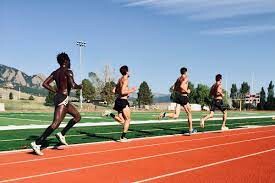
Start with 10 to 15 minutes of warm-up and dynamic activation.
The strategy behind the workout is to do the 1,000m (or 1K) at your goal half-marathon pace, take a short rest, then 600m at a faster yet comfortable pace. You want to negative-split the rep, with your final 600m to be at a faster pace than your first 1,000m.
Between reps, jog slowly for two minutes or take standing rest. End the workout with 10 to 20 minutes of cool-down jogging.
Training for a negative split teaches you how to manage your energy and pace yourself properly. If you can complete six reps at your goal pace for the 1,000m reps, you should have no problem sticking to pace through the 10K in your half-marathon, making sure you don’t blow up during the second half.
Negative splitting takes a lot of discipline, and practising it in training can help you build up confidence in the second half of the race.
(09/20/2022) ⚡AMPby Marley Dickinson
Hong Kong Marathon rescheduled for February next year
The Standard Chartered Hong Kong Marathon has been rescheduled to February next year, the organizer announced on Tuesday, days after canceling the race amid ongoing Covid-19 restrictions in the city.
“The Hong Kong Association of Athletics Affiliates (HKAAA) announced today… that it has received the Government’s full support to actively plan the staging of the 25th Standard Chartered Hong Kong Marathon on Sunday, 12 February 2023,” a press statement by the organizer read.

Last Friday, the HKAAA said the sporting event would not go ahead in November as planned, citing “insufficient time for runners and relevant stakeholders to adequately prepare for the race.” Organizers said they had yet to receive approval from the government with only two months remaining.
Commissioner for Sports Yeung Tak-keung questioned the group’s reason on Monday, saying the 2021 race was also approved with only two months to go.

He said the government had been in close contact with the organizer and provided help as best as it could. Yeung at that time said the HKAAA did not consider postponing the race, even there was an available slot in February.
Rescheduling
The HKAAA on Tuesday, however, reversed course, hours after Chief Executive John Lee had expressed disappointment over the axing of the popular sports event.
“Our position is very clear, we are very supportive and we want both sides to work towards the goal of making it happen,” Lee said during his weekly press briefing. “[I]t is both [in] the organiser’s interest, and Hong Kong government’s interest and the community’s interest for these things to happen. So I want that common will to be developed for the good of Hong Kong.”
Further details were yet to be announced by the HKAAA, but it promised to “strictly adhere to and implement all necessary anti-pandemic measures,” and work closely with relevant government departments.
Covid concerns
Several sporting events have been canceled or relocated due to Hong Kong’s strict Covid-19 measures, with all incoming travelers required to undergo three days of hotel quarantine and four days of “medical surveillance.” The city also maintains a four-person public gathering limit and an outdoor mask mandate.
Blaming the stringent quarantine rules, the organizers of the 2023 World Dragon Boat Racing Championships abandoned Hong Kong for Thailand on Sunday. The previous day, the Oxfam Trailwalker event was also called off.
Lee on Tuesday said the government would review the pandemic situation and make necessary adjustments to the quarantine policy, with an announcement to follow “as soon as possible.” Experts have called for measures such as mandatory hotel quarantine to be scrapped so that Hong Kong can begin to return to normalcy.
Hong Kong has reported a total of 1.71 million Covid-19 infections and 9,901 related deaths since the pandemic began.
(09/20/2022) ⚡AMP
by Almond Li
HONG KONG MARATHON
The Hong Kong Marathon, sponsored by Standard Chartered Bank, is an annual marathon race held in January or February in Hong Kong. In addition to the full marathon, a 10 km run and a half marathon are also held. Around 70,000 runners take part each year across all events. High levels of humidity and a difficult course make finishing times...
more...Here’s how to get mountain-running legs, even if you live in the flats
Those of us who live in prairie provinces are familiar with the dilemma of trying to fit some form of hill workout into our schedule. A mountain race sounds glorious (and the vert is definitely real), but how do you get your legs in shape to tackle steep climbs and downhill running? Here are three ways to nail the fitness that will take you up to the peaks with ease, even if you live hours away from any hilly terrain.
Become friends with stairs
Stairs can be an incredibly effective tool for runners, even if you don’t have mountains in your plans. When you push off each stair, it’s a form of explosive or plyometric training. This builds strength and power, increasing the ability of your muscles and joints to react upon landing. A set of bleachers can be a veritable playground for a runner, with a wide variety of workouts that can be done. Try this ladder stair workout to get started.
Pyramid stair workout

Warmup: 10 to 15 minutes easy running on flat ground
Workout: Run up and down stairs or bleachers for two minutes, rest for 30 to 60 seconds
Run up and down stairs or bleachers for three minutes, rest for 30 to 60 seconds

Run up and down stairs or bleachers for four minutes, rest for 30 to 60 seconds
Run up and down stairs or bleachers for three minutes, rest for 30 to 60 seconds
Run up and down stairs or bleachers for two minutes, rest for 30 to 60 seconds
Cooldown: 10 to 15 minutes easy running on flat ground
Build functional strength
Functional strength training will help your legs propel you up the ascents, and will help you maintain efficient form even when you’re feeling tired. Body-weight exercises are perfect for building mountain legs–you don’t need a gym membership or access to fancy equipment. This 3-minute routine by coach and author David Roche will have you ready to tackle the climbs and descents of a hilly race.
“The burn should feel somewhat similar to the screaming quads of steep climbs,” says Roche. He suggests adding it to your routine twice a week, on hard workout days (speedwork, or after a long run), so that you get the maximum recovery benefits the day after. Note that even though you’re only adding three minutes of leg-strengthening to your routine, if you don’t normally do drills like these, you will probably feel quite sore afterward the first few times.
Embrace the treadmill
Treadmill-incline workouts can be a fantastic go-to to build climbing strength and bolster confidence. You can mimic hill sprints, or longer, rolling hill runs on a treadmill with just the press of a button. Try this hill repeat workout to start off.
Treadmill hill repeats
This workout mimics a traditional workout of shorter hill repeats. If you’re new to hill repeats, start your incline at four to five per cent, but more experienced runners can up the incline to six to eight per cent.
Warmup: 10 to 15 minutes easy running
Workout: Six x 60 to 90 seconds at 5K to 10K pace with three minutes of recovery between each one (easy running). If you choose the shorter sprints, aim for the 5K pace, and try to hit your 10K pace if you’re doing the longer sprints.
Cooldown: 10 minutes easy running
Remember to follow a hill session with an easy running or recovery day.
(09/20/2022) ⚡AMPby Keeley Milne
Moses Kibet wins Sydney marathon in record time on Australian soil
Kenyan Moses Kibet has claimed a historic victory in the Sydney marathon as the top three finishers all bettered the previous fastest time on Australian soil.
Kibet clocked a winning time of two hours, seven minutes and three seconds on Sunday, crossing the line just two seconds ahead of countryman Cosmas Matolo.
Ethiopian Chalu Deso Gelmisa – the victor in the Paris marathon earlier this year – was third in 2:07:08.
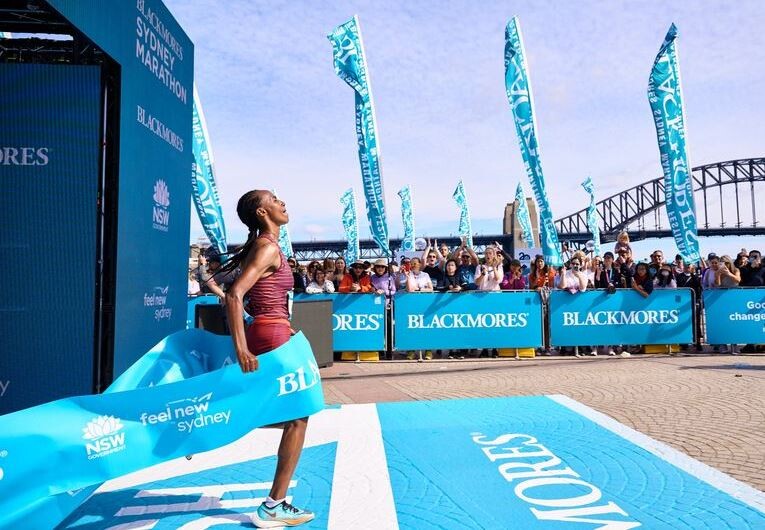
The three Africans smashed the Australian all-comers record of 2:07:50 set by Japan’s Yuta Shitara on the Gold Coast in 2019.
Ethiopia’s Tigist Girma Getachew won the women’s marathon in 2:25:10 ahead of compatriot Letebrhan Haylay Gebreslasea and Eritrea’s Nazret Weldu Gebrehiwet.

Jun Hiromichi won the men’s wheelchair marathon in 1:52.47, with Australian Richard Colman second in 1:53:28.
Australian Sinead Diver – who was a creditable 10th in the marathon at last year’s Tokyo Olympics – claimed victory in the women’s half-marathon at the Sydney Running Festival in a course record of 1:13:07.
Diver was also fifth in last month’s Birmingham Commonwealth Games marathon which was won by countrywoman Jess Stenson.
The Sydney marathon is in the first year of a three-year candidacy to join the prestigious World Marathon Majors.
(09/19/2022) ⚡AMPKipchoge underlines Paris 2024 ambition, says world record could be broken in Berlin
Marathon world record-holder Eliud Kipchoge has hinted he might break that mark when he runs his sixth Berlin Marathon next Sunday (September 25) - and has also renewed his vow to seek a record third Olympic title at Paris 2024.
Speaking by videolink from his Kenyan training base, the 37-year-old - who set the world record of 2 hours 1min 39sec the last time he ran in Berlin four years ago - was reluctant to be specific, but insisted with one of his enigmatic smiles: "I'm thinking of running a very good race."
"And if it is my personal best, I will accept it," Kipchoge continued.
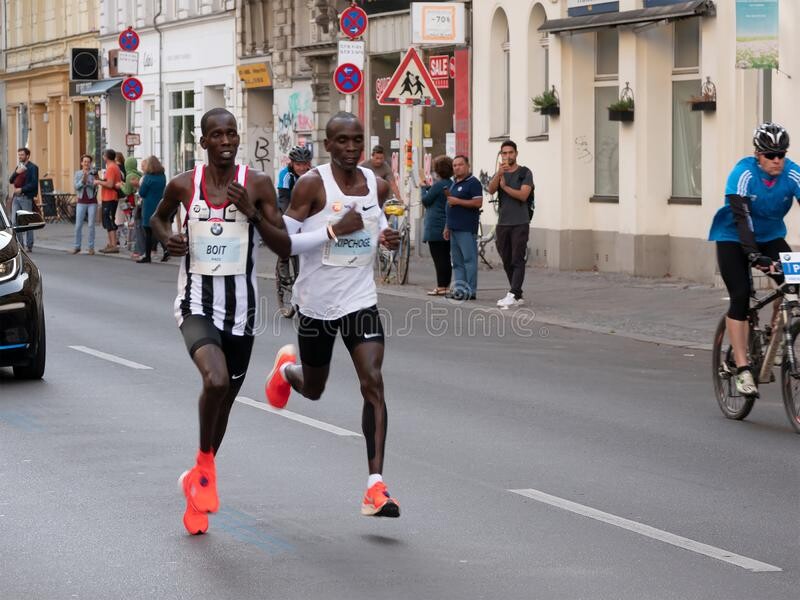
"But I don't want to commit to a time.
"I will try to push myself.
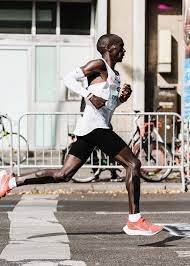
"I always say, if you want to push yourself, come to Berlin."
Each of the last seven lowerings of the men's world record have occurred at the Berlin Marathon.
In the more distant future, Kipchoge plans to add the Paris 2024 Olympic title to the ones he has already secured in Rio de Janeiro and Tokyo.
"That’s a very important thing to me," Kipchoge said.
"Because I am running to make history.
"I am running to tell young people that consistency is what we need, for performing at a high level.
"It's what the world needs.
"I trust I will be lining up in Paris 2024 and having a lot of energy to run to the gold medal."
Nobody has ever won three Olympic marathon gold medals.
In 2019, Kipchoge became the first person to run a marathon in less than two hours as he clocked 1:59:40.2 in Vienna in a specially-constructed event, although this did not count as a world record because standard competition rules regarding pacing and the provision of fluids did not apply and it was not an open race.
Kipchoge refuted the idea that it was not "a real race" today.
"What was in Vienna was a real race," Kipchoge insisted.
"If you run the marathon in sub-two hours it is a real race!
"In Vienna I was making history, and in Berlin, when I ran 2:01.39, I was making a world record.
"I trust that I have showed the way to many athletes of the next generation that one day a human being will run under two hours in a normal course, like Berlin or somewhere."
Turning his attention back to his next race, he added: "I don’t say I am going to run under two hours but I am going to run a very good race.
"I don’t like to commit myself.
"Let us call it a good race.
"And what I trust is, one of these fine days I might even run under two hours…"
(09/19/2022) ⚡AMP
by Mike Rowbottom
BMW Berlin Marathon
The story of the BERLIN-MARATHON is a story of the development of road running. When the first BERLIN-MARATHON was started on 13th October 1974 on a minor road next to the stadium of the organisers‘ club SC Charlottenburg Berlin 286 athletes had entered. The first winners were runners from Berlin: Günter Hallas (2:44:53), who still runs the BERLIN-MARATHON today, and...
more...Ethiopian duo Mengesha and Teshome secure Ethiopian double in Copenhagen
Milkesa Mengesha and Tadu Teshome took top honors at the Copenhagen Half Marathon on Sunday (18). And with 15 men finishing inside an hour at the World Athletics Elite Label road race, the event witnessed record depth.
Mengesha, the 2019 world U20 cross-country champion, beat a quality field to notch up his second half marathon victory of the year, winning in a PB of 58:58. Teshome, meanwhile, smashed her PB to lead an Ethiopian 1-2-3, winning in 1:06:13.
After a steady opening 5km of 14:02, the pace dropped slightly in the following few kilometers of the men’s race as the large lead pack reached 10km in 28:10. The leading contenders – which included Mengesha and his compatriots Amedework Walelegn and Chala Regasa, Kenya’s Felix Kipkoech, Vincent Kipkemoi and Edmund Kipngetich, and South Sudan’s Dominic Lobalu – then started to increase the pace.
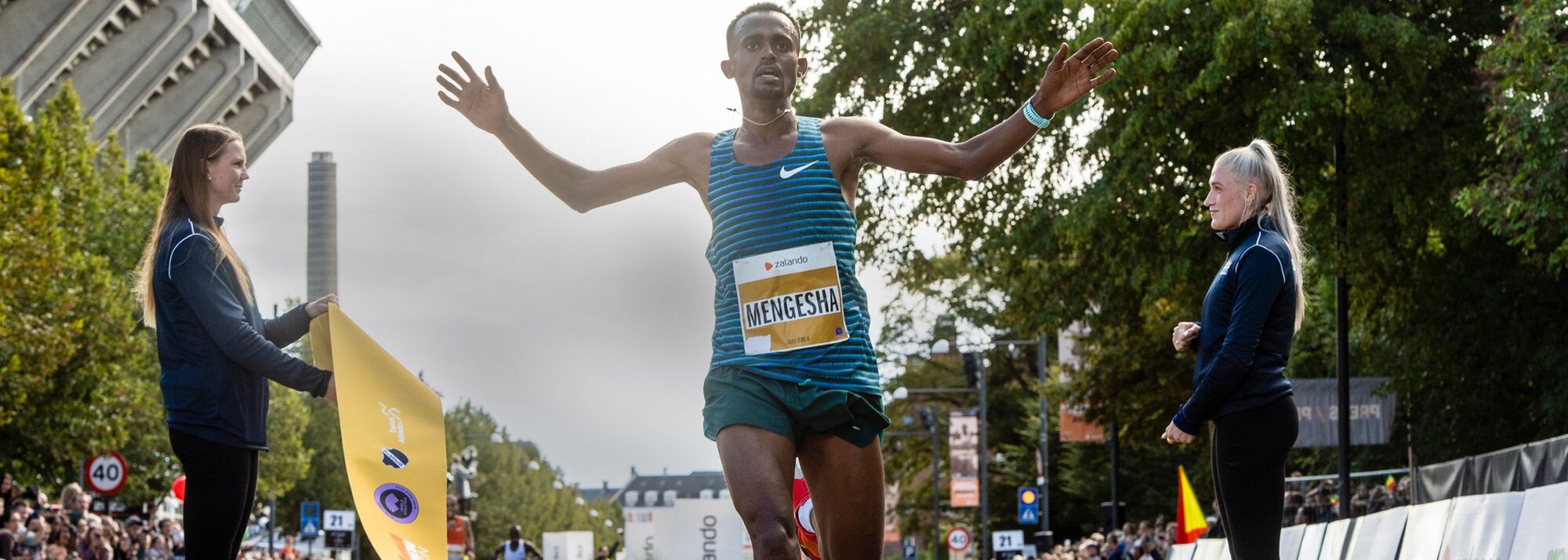
By the time of the 15km checkpoint, reached in 42:06, the lead pack was down to 12. They remained bunched together for a few more kilometers before Mengesha started to ease away, carving out a small lead before going on to win in 58:58. Compatriot Walelegn followed him home in 59:05, two seconds ahead of Kipkoech.
Lobalu, winner of the 3000m at the Wanda Diamond League meeting in Stockholm earlier this year, was fifth in a national record of 59:12. Further back, Switzerland’s 40-year-old Tadesse Abraham became the oldest man in history to finish inside 60 minutes for a half marathon, clocking 59:53.
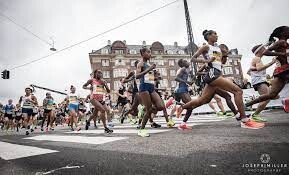
In contrast to the men’s race, which increased in pace as it went on, the women’s race started off remarkably quick but soon became a war of attrition as athletes tried to hold on as best they could.
When the first 5km was covered in a swift 15:19, most of the lead pack decided to ease off the pace, but Teshome and Tsigie Gebreselama maintained that tempo for another 5km, reaching 10km in 30:40 – inside both of their PBs for 10km.
Gebreselama then broke away from Teshome and opened up a gap of 30 seconds by 15km, reached in 46:39, but it didn’t last. Teshome came back over the next few kilometers and caught her compatriot with about two kilometers to go.
Once she was in the lead, Teshome continued to pull away and she went on to win in 1:06:13, 22 seconds ahead of Gebreselama, who was making her half marathon debut. Ethiopia’s Tiruye Mesfin almost caught Gebreselama, eventually finishing third in 1:06:42.
Leading results
Women
1 Tadu Teshome (ETH) 1:06:13
2 Tsigie Gebreselama (ETH) 1:06:35
3 Tiruye Mesfin (ETH) 1:06:42
4 Magdalena Shauri (TAN) 1:06:52
5 Eunice Chumba (BRN) 1:07:34
6 Sintayehu Tilahun (ETH) 1:07:41
7 Janet Ruguru (KEN) 1:07:51
8 Anchalem Haymanot (ETH) 1:08:09
9 Vicoty Chepngeno (KEN) 1:08:22
10 Betelihem Afenigus (ETH) 1:08:35
Men
1 Milkesa Mengesha (ETH) 58:58
2 Amedework Walelegn (ETH) 59:05
3 Felix Kipkoech (KEN) 59:07
4 Vincent Kipkemoi (KEN) 59:09
5 Dominic Lobalu (SSD) 59:12
6 Chala Regasa (ETH) 59:13
7 Edmund Kipngetich (KEN) 59:25
8 Matthew Kimeli (KEN) 59:39
9 Titus Kimutai (KEN) 59:44
10 Ronald Kirui (KEN) 59:51
(09/19/2022) ⚡AMPby World Athletics
Copenhagen Half Marathon
The Copenhagen Half Marathon was the first road race in Scandinavia and is one of the fastest half marathons in the world. The Copenhagen Half Marathon has been awarded with the International Association of Athletics Federation's (IAAF) most distinguished recognition - the IAAF Road Race Gold Label. Copenhagen Half Marathon was awarded the IAAF Road Race Bronze Label in January...
more...Why stretching is important for runners
Do you often get sore after exercising? Do your muscles feel taut and painful? If so, you’re not alone. Many runners find their muscles going tight after their daily workout. This is because some don’t incorporate stretching into their routine.
It’s a common belief that stretching only improves flexibility, but that’s not all. It also decreases your risk of injury and promotes blood flow to your muscles so that you don’t get cramps and stiff muscles. This is why athletes must include stretching in their daily activities, and this is equally true for runners; the benefits of stretching are too significant to ignore. To know more about why stretching is essential for runners, keep reading.
1. Prevents Injury

Stretching before running reduces the risk of injury. This is because when you stretch, your muscles expand and enhance your flexibility. As a result, you won’t suffer from injuries that correspond to taut muscles because now you have more room to twist and turn yourself. Your blood flow also increases, so your muscles will get enough oxygen and won’t become sore after your routine exercise. Stretching also decompresses your spine and joints, which helps relieve pain related to these areas.
2. Increases Range of Motion

Repetitive athletic movements can cause tension to develop in your body. Through stretching, you decompress your joints. This ultimately increases your range of motion. You will feel that your performance also improves drastically. Runners require larger strides for better productivity, and stretching before the run will enable you to move with longer strides.
3. Improve Posture
A bad posture affects a running stride. One of the reasons why you experience back pain is because you don’t stretch. This affects your posture, and you might experience difficulty running. Stretching manipulates your joints and muscles, decompressing them and improving posture affecting your running pose as well. You will also experience relief in back and joint pain.
4. Impacts Mental Flexibility
Stress affects your flexibility as well. It tightens muscles and causes them to become taut. When you stretch, your body releases endorphins. These hormones reduce pain, and you feel positively good. This can help you decrease stress levels before a run so that they don’t hinder you and you perform your best.
5. Decreases Post-Run Aches
Stretching after a run will loosen your muscles so that you don’t suffer from cramps. It also decreases the risk of any ligament tear many people suffer from. So, runners need to stretch before and after a run. There are different types of stretches, such as active stretching, dynamic stretching, and proprioceptive stretching, to name a few, so be sure to follow a guideline and go for the ones that suit you the most.
Endnote
Incorporating stretches into your daily routine will help improve circulation and flexibility and increase your range of motion. It is especially beneficial for athletes. Stretching is a prerequisite for workouts or sports. It is a meditative and beneficial exercise that increases flexibility and range of motion and decreases the risk of injury. If you do suffer from a fall or any damage, stretching will help you recover faster by enhancing blood flow and alleviating soreness and tautness.
However, stretching without any research and guidance can negatively impact you and cause an injury. You need to know the types of stretches and what proportions you should do them. Be careful and do not overexert yourself.
(09/19/2022) ⚡AMPby Colorado Runner
New thinking on metabolism suggests a 20-year-old has the same metabolism as a 60-year-old
Some surprising truths about matabolism
We imagine our metabolism as a fire, flaming up when we exercise to torch calories. But that’s just a very small fraction of what it does, according to Herman Pontzer, Ph.D., an evolutionary anthropologist at Duke University, the author of Burn: The Misunderstood Science of Metabolism, and the principal investigator for a game-changing new study on metabolism.

“Metabolism is the work your cells do every minute of every day,” says Pontzer. “You’ve got 37 million of them, and each cell is like a little factory churning out everything needed to keep your body functioning.” Some calories do get burned during exercise, but most of what you eat is used to fuel the continuous work your cells do.
The new research, published in Science by Pontzer and more than 80 coauthors, looked at metabolism more precisely than had ever been done before. It measured metabolism in almost 6,500 people around the world, from newborns to 95-year-olds. Once the scientists controlled for variables that affect energy expenditure, like a person’s body size and percentage of fat, they got “a clear road map of metabolism over our life span,” says Pontzer.
METABOLISM DOESN’T SLOW DOWN IN MIDLIFE
For years we’ve heard that our metabolism peaks when we’re teenagers and slows significantly as we approach middle age. But the researchers discovered that metabolism crests far earlier and declines much later, and that it has four distinct stages.
Metabolism is at its highest during infancy, and a baby’s metabolic rate is 50 percent higher than an adult’s. From ages 1 to 20, metabolism drops about 3 percent a year. Then, from ages 20 to 60, metabolism holds steady. After age 60, it slowly starts to decline (0.7 percent a year). That means for 40 years we’re burning calories at a steady rate, about 2,500 a day on average, says Pontzer. And a 60-year-old has the same metabolism as a 20-year-old!
MEN DON’T HAVE A BETTER METABOLISM
“There’s nothing special about the male metabolism,” says Pontzer. “Men tend to be bigger, and their bodies consist of more lean muscle and less fat.” Muscle uses more energy than fat, which accounts for the difference (the reason he can lose a pound faster than you can). The scientists controlled for these factors and found no difference in metabolic rate.
MILESTONES DON’T CHANGE METABOLISM
It’s a myth that pregnancy and menopause make a big difference. “These major metabolic milestones didn’t affect metabolic rate,” says Jennifer Rood, Ph.D., a coauthor of the study who specializes in research on metabolism and energy expenditure at Louisiana State University’s Pennington Biomedical Research Center. “That was a surprise. But it’s also encouraging. The fact that your rate remains steady through childbirth and into your 60s means you don’t have to work harder to maintain a healthy weight, as long as you follow a healthy diet and get the recommended amount of exercise and rest.”
HAVING MUSCLE HELPS
The types of cells you have affect the amount of work they do and the energy they burn, says Pontzer. “A cell in your fat is not as busy as a cell in your muscles,” he says. “If you have a lot of lean mass, you’re going to burn calories more efficiently than someone who has more fat mass.” That’s why exercise, particularly muscle-building strength training, can be beneficial.
Alas, a reality check: There is no proven way to boost metabolism, says Pontzer. But exercise and diet do make a difference. “Think of it this way: You’re burning a set number of calories each day, but you get to decide how to burn them,” says Pontzer. “If you expend them on exercise, you’re going to be a lot healthier and have less inflammation than someone who doesn’t. The same is true with food. You decide how to fuel your body. That’s where a healthy diet factors in.”
TIMING MEALS MATTERS
When the day begins to wind down, our body does the opposite—cranking up to be at its calorie-burning peak, according to a study published in Current Biology. “We discovered that you naturally burn about 10 percent more calories in the late afternoon than you do later at night,” says Kirsi-Marja Zitting, Ph.D., an associate neuroscientist at Brigham and Women’s Hospital in Boston, an instructor at Harvard Medical School, and the lead author of the study. That’s about 130 calories that your body is torching without any extra effort on your part.
Researchers suspect that metabolism ebbs and flows according to our circadian rhythms. At night, when we’re asleep, our systems are expending less energy, so our metabolic rate slows. Eat in those wee hours, as night shift workers do, and your body isn’t able to burn off the calories, which could eventually lead to weight gain, says Zitting. During the day, when we’re naturally active, our metabolism rises, until it crests around 5 p.m. “Previous research has shown that hunger spikes in the afternoon as well,” says Zitting. “Since that’s also when we’re burning the most calories, it makes sense that we’re hungriest then, too. Our bodies may be tuned to a late-in-the-day rhythm.”
Syncing our diets to our internal clocks can have health benefits. For general well-being, the most important thing is to maintain a regular schedule, says Zitting. “Wake up and go to bed around the same time every day,” she advises, “and have breakfast, lunch, and dinner at about the same hours as well.” Your body is primed to do things at certain times. Throw its agenda out of whack, and your sleep, health, and weight can suffer.
Also, avoid eating at extreme hours. Let’s say you get home from work at 10 p.m. Don’t consume a big meal then because your body is in slowdown mode and is less likely to burn it off, says Zitting. Instead, have a healthy dinner earlier, before you leave work.
Finally, it may help to eat your carbs early in the day and foods higher in fat at night. “Our research found that you are more prone to burn carbohydrates in the morning and lipids [aka fats] in the evening,” says Zitting. “The difference was small, but it was significant.”
(09/18/2022) ⚡AMPYou’ve Heard of Running for Beer. But What About Running as Beer?
New Zealand ultrarunner Glenn Sutton finished the Dunedin Marathon on September 11 in a huge beer can costume that he crafted himself.
You might find this hard to believe, but only one of the 165 runners that completed the Dunedin Marathon in Dunedin, Otago, New Zealand on September 11 was wearing a human-sized beer can costume.
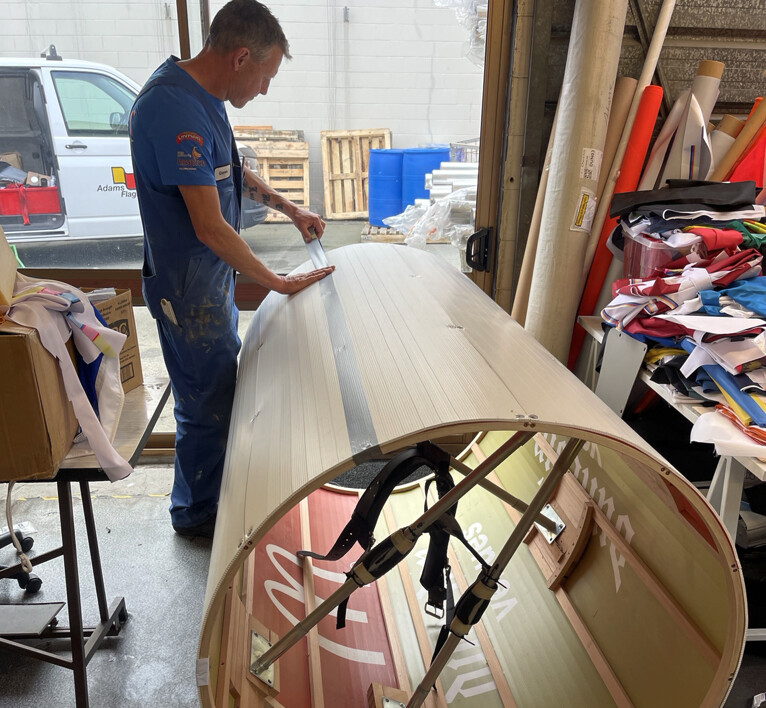
Glenn Sutton, a 48-year-old ultra runner from Dunedin, and local brewery Emerson’s, the marathon’s sponsor, came up with the idea before the COVID-19 pandemic canceled the 2020 edition of the marathon.
“I thought it would be something quirky to do. I hadn’t seen it done before,” Sutton told Runner’s World. “I’ve seen cans where people’s arms and heads poke out, but not a full-size can.”
After two long years of waiting, the Dunedin Marathon was finally scheduled for fall 2022, so Sutton got to work. A joiner by trade, he put his ornate woodworking skills into constructing a beer can costume that would cover his entire body from his head to just above his feet. His friend Bruce Adams made the signage that covered the wooden frame, which depicted Emerson’s Super Quench, a low-carb Pacific pilsner that launched earlier this year.
While in the can, Sutton couldn’t use his arms much and could only manage a shuffle rather than a full stride. It was hot, “like running in a glass house,” Sutton said. He could only see through a plastic cut-out at eye level, which blurred his already obstructed vision.
On race day, Adams ran about five meters ahead of him to make sure Sutton was on the right path. Sutton, who’s run ultra races like the days-long Badwater 135 before, wasn’t worried about taking his time to finish the race. He typically runs under three hours for marathons, but knew this particular attempt would take longer—especially if there were setbacks along the way.
Unfortunately, a major setback did occur. With 5K left, an unexpected gust caused Sutton to clip his foot on the inside of the can. He tried to catch himself, but fell on the footpath.
At that point, he was “like a turtle on its back,” rolling around while locked into harnesses around his shoulders and waist. Though the can took some damage, Sutton survived the fall unscathed. He unstrapped, got out, re-strapped in, and trudged forward for the final three miles.
As he neared the end, Sutton heard his name over the loudspeakers. A crowd clapped him through the finish line, which he crossed in a time of 6:12:37.
“It was quite cool,” said Sutton. “It drew a bit of attention, and that’s what it was all about.”
Sutton’s next challenge? Big Dog’s Backyard Ultra Satellite Team Championships, where he has to run a 4.167-mile loop at the top of the hour, every hour, for as long as possible. Nations choose their 15 best ultra runners to compete against the rest of the world, and the team that logs the most yards wins. If Sutton outlasts his 14 New Zealand teammates, he individually qualifies for the Backyard Ultra world championships in October 2023.
“I enjoy challenging myself to go these distances,” said Sutton. “I don’t mind grinding it out—and I want a bit of pain.”
(09/18/2022) ⚡AMPby Runner’s World
Some races are down since the pandemic took charge of road racing for a couple of years but there is some good news
Even marquee events have seen declines of 25 percent or more between 2019 and 2022.
Across the country, many road races are returning after the COVID-19 pandemic forced them into a two-year hiatus. But runners haven’t yet come back to those events in the same numbers as they were turning out in 2019.
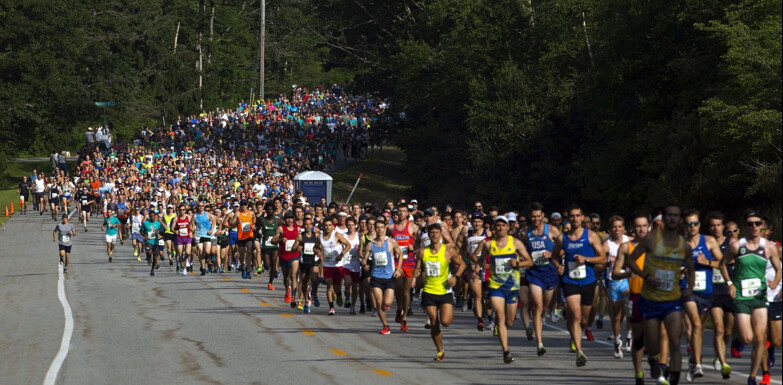
A few examples from the first eight months of 2022:
The BAA 10K in June had 5,144 finishers, down from 8,003 in 2019, a decrease of 35 percent.
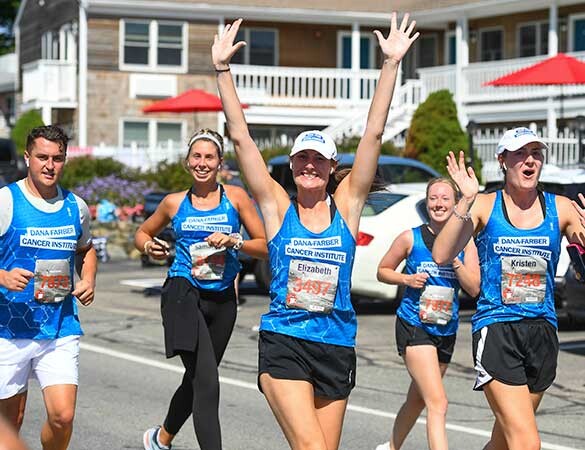
The Utica Boilermaker 15K in July had 5,848 finishers, which was up from 2021, when it had 3,480, but down from the 2019 tally of 11,194, for a three-year decrease of 47 percent.
In Colorado, the Cherry Creek Sneak, a 5K, 5-miler, and 10-miler in Denver, had its final running in 2022 after 40 years. Combined participation in the three events had already been falling before the pandemic, and it fell an additional 38 percent between 2019 and 2022 (from 3,390 finishers to 2,092).
Larger, well-known events haven’t been immune from the declines. The Cherry Blossom Ten Mile Run in April in Washington, D.C., had 2,700 fewer runners, for a decline of 15 percent.
The Falmouth Road Race in Massachusetts and the Beach to Beacon 10K in Cape Elizabeth, Maine, two popular destination summer road races, saw declines of 24 percent and 16 percent, respectively. The town of Falmouth reduced the field size of the race to 10,000 runners this year (from its usual 12,800) but only 8,610 finishers appear in the results.
Jean Knaack, CEO of the nonprofit Road Runners Club of America, wrote in an email to Runner’s World, “We are seeing a slow recovery in 2022, and we are tracking with participation data showing about 84 percent return.”
Why aren’t runners coming back to events? Industry experts cited many theories:
The economy: “I think inflation will be a factor for 2023 as events plan and people pick what events they can afford to run,” wrote Knaack. The cost of travel to races—for flights, hotels, rental cars, gas—has gone up. So, too, have race entry fees for many events, especially for runners who wait until the last minute to register.
Competing events: Long-postponed weddings are back on. So are family vacations. The annual road race might need to take a back seat this year.
COVID concerns: Many runners worry about contracting COVID at a race, or they get sick at an inopportune time, keeping them from the starting line.
Shifting priorities: Erin Vandenberg, 42, for years raced at least monthly, often more, at distances from 5K to the marathon. Running a race with coworkers and then getting drinks after in downtown Chicago was a common occurrence. But she always felt a certain pressure to be training hard and performing well, worried what the time read on the clock at the finish.
Since the pandemic, she has taken a new approach to running. “I want to enjoy it; not stress myself out about it,” she said. “I don’t know that getting up at 5 a.m. to hit a certain pace and worry whether I’m fueling correctly is how I want to spend my time.”
Vandenberg has run three races in 2022—including one with her dog.
Not every race is down. Michelle La Sala, president of race management company Blistering Pace, says two of the events her company works on—the Big Sur Marathon and the Napa Marathon—have emerged largely unscathed from the pandemic. Big Sur was down only 240 runners (6.8 percent) and registration is tracking strongly for 2023. Same for Napa, which “should grow significantly this year,” La Sala said.
The bigger “bucket list” marathons, with a few exceptions, are not having any problems at all, she said, while smaller, regional races, without a compelling point of differentiation, are “on the struggle bus.”
Grandma’s Marathon along Lake Superior in Minnesota was off only 6.4 percent in 2022 from its 2019 tally, and well up from 2021. The Eugene Marathon, in May in Oregon, and the Missoula Marathon, in June in Montana, were both well ahead in finisher numbers, although many might have been deferred entries from the cancellations of 2020 and 2021. Vandenberg has a deferred entry from the Chicago Marathon in 2020, and she plans to use it in 2023.
John Mortimer, owner and founder of Millennium Running in Bedford, New Hampshire, sounded an optimistic note as well. Millennium has 30 of its own events of varying distances, manages and times others, and it has a running store. Sales are strong at the retail location, showing him that people continue to walk and run, even those who took it up during the pandemic.
And race participation in Millennium events continues to be robust, in part, because the company developed a time trial start system during the pandemic as an alternative to a mass start race. For many months, they had the only events happening in New England.
The company kept in frequent contact with runners and tried to make the race experience safe and convenient for them. They continue to offer the option to make any race a virtual race, up until the last minute, if runners would otherwise have to be a no-show at an event—thereby ensuring the runners would at least be mailed their tee shirts and medals.
That policy will continue, Mortimer said. “Every week we’re shipping out apparel and medals and bibs,” he said. “We’re trying to make it easy for the participant to be a part of the running community.”
The effort aimed at keeping relevant has paid off, Mortimer said, and registrations for most of the company’s events haven’t declined. The same can’t be said, he knows, for races that have been off for two years.
For them, “It’s out of sight, out of mind,” he said. “People have moved on.”
(09/18/2022) ⚡AMPby Runner’s World
How Running Played a Big Role in the New Film, ‘The Woman King’
We spoke with the director and the run coach on set to get the scoop on training.
There’s a moment in The Woman King (released today) that, no spoilers, is one of the best running scenes this film-lover and running enthusiast has ever seen on screen. It involves the titular character and protagonist, Oscar-winning actress Viola Davis, dressed in the attire of the warrior army she leads. She sets off defiantly, on foot with machete in hand. As she takes her first few steps, bold and unwavering, we see not far behind her, the other Agojie women running in single file after her. It’s a rousing action that captures the heart and soul of the mighty Hollywood epic—and the running looks masterful.

It’s thanks to director Gina Prince-Bythewood’s own love of and dedication to running that the scene works as well as it does. A former triple jumper at UCLA, Prince-Bythewood tells Runner’s World that it drives her nuts “when you watch an action film or sports film and the actors can’t run.”
Known for her character-driven films, from Love & Basketball to The Secret Life of Bees, the director flexed her action film muscle in The Woman King. Set in 1820s West Africa, it’s about the all-women military squad of the Kingdom of Dahomey, called the Agojie.
Bringing The Woman King to the big screen was a years-long Herculean feat in itself—with Davis, Prince-Bythewood and the producers having to navigate a host of behind-the-scenes challenges Black women face in the entertainment industry before they even started filming, from convincing executives to bankroll their movie to being allowed to do hair and make-up the way they wanted it. To handle the on-set demands of shooting in South Africa, Prince-Bythewood wanted to make sure her cast was prepared.
Why Prince-Bythewood Prepped the ‘The Woman King’ Cast for Running With the Help of a Coach
Along with months of grueling martial arts and weapons training plus weight lifting, Prince-Bythewood enlisted the help of running coach and former 400-meter champ Jerome Davis. “Jerome is an incredible coach,” she tells Runner’s World. “There’s a difference between just learning to run and learning to run well. Also, there’s a difference between sprinting and long-distance running. I needed everyone to look good doing both.”
Having worked with Jerome Davis before, on both The Old Guard, with Kiki Layne, and the TV series, Shots Fired, with Sanaa Lathan, Prince-Bythewood was confident Davis could work his magic on The Woman King. She gave him the direction to make the women look athletic and believable.
“That was the key word, ‘athletic,’ especially in the heat of an action scene. I wanted it to feel second nature; these women grew up running. Running was an important part of their training, and I wanted the audience to feel the natural gait of these women,” says Prince-Bythewood.
Davis, who competed at the World U20 Championships and the World University Games in the late 90s, believes he’s always been a coach at heart. “I think it started in high school, I would always try and encourage my teammates, and it was kind of natural. I just always love to see people achieve and do their best,” he tells Runner’s World. Having been a coach for more than 20 years, these days he works a lot with elementary and high school runners.
The key to a good running scene, Davis says, is that you want to get as close to what you would see in a race or a good high school meet. “You want the form to be great,” he says. Running on film is like any other skill an actor might have to pick up for a role. “It’s like being a musician or a barber, you think, ‘Oh, they just do it. They just show up and the work comes out beautifully and it’s just easy.’ But the reality is, it’s an art form to it.”
Getting actors to perform the art of running requires flexibility and patience, considering they’re obviously not professional runners. So Davis asked them for an hour a day, three to four days a week, “and I’ll make you look like you have run your whole life.”
What Run Workouts Looked Like for the Cast of The Woman King
A large part of the hour-long run sessions, which took place over six weeks, focused on the warmup, which Davis sees as essential, both in achieving a solid foundation for good running form and preventing injuries that could impact the production schedule. In Davis’ workouts, that warmup would include drills.
“I’m a very big believer in plyometric drills to be able to activate the muscles that you want to use, and not only activate the muscles you want to use, but help get you in the mind frame of good running technique,” Davis says. Working on a small track at Cold Canyon Park in Beverly Hills, the actors would start with A-skips and butt kicks, and he’d have them run backwards to activate the hamstrings.
Because the actors would only have to run short distances for their scenes, he kept the track work short and honed in on repetition. “I would have them do build-ups of about 70 meters,” he says. “So every 10 meters they would get faster and faster and faster. And then they would walk back, and then they would get faster and faster and faster. I’m trying to get them at about 90% of their maximum speed.”
At the end of sessions, Davis had everyone do a two-lap cooldown, along with some stretching.
But Davis’ main focus during workouts: how the actors hit their stride, which he gave pointers on every chance he got. “I’m really focusing on their form; I’m looking at their arms, I’m looking at their hands, I’m looking at their facial expression,” he says. “There’s a cadence that comes with running and there’s also a controlled force. I want you to be fierce but I also want you to be relaxed.”
Davis also made sure the actors had a solid knee drive, activating the hip flexor, and pulling that knee up toward the chest—something he considers a telltale sign of whether someone is a runner if they can hit that point of the stride.
Another one of Davis’ mantras he’d impart to the actors? “Arms dictate your legs.” If you want to go faster, he’d tell them, you have to move your arms faster. “Your arms swing from your shoulder. There’s a ball inside of your shoulder for a reason. Your arms need to stay at 90 degrees so that you’re using the ball,” he says.
Davis worked closely with the women who make up the Agojie, including Adrienne Warren and Thuso Mbedu, who play the newest recruits to the army in The Woman King. Mbedu, a 31-year-old South African actress known for The Underground Railroad, has been vocal about her dislike of running on her social media. “Thuso hated running when we started,” says Prince-Bythewood. “I won’t say she loves it now, but she respects it.”
Davis commends Mbedu for her commitment to the training. “She would get so nervous to come see me,” he says. “But her last couple of sessions, I was like, ‘Alright, you’re getting it, I can tell it’s all starting to click.’”
While the Agojie women worked with Jerome Davis on their running, their general, Viola Davis worked with her long-time trainer Gabriela Mclain. At one stage, Davis was running a 6:23 mile on the treadmill, which Prince-Bythewood says made everyone feel proud: “That’s a full out [effort], and props to Viola for putting in the work.”
On set, Jerome Davis also chimed in with running tips for the actors, making them warmup for about 15 minutes ahead of filming run scenes. “You might be 19 years old or you might be 45 years old, but please, make sure you warm your body up. The directors, the associate producers, none of those people understand warming your body up. They just think you can go out there and just perform and run,” he says. “They’re just gonna say, ‘Action!’ That’s all they’re gonna say, and then you’re going to blast these reps of running, and next thing you know you come up with an injury and you’re out for weeks and weeks.”
In addition to warming up, Davis promoted the importance of massages and hydration to the actors to keep them in shape for every high-energy scene.
Overall, Prince-Bythewood was happy with the results. “People don’t pay enough attention to running when they’re doing action films, but for me, as a former track star, it’s all I pay attention to.”
How Running Has Shaped Prince-Bythewood’s Life Off Screen
Growing up loving to race her sisters, running has been a constant in the director’s life, from playing soccer to basketball, and then cross-country and track at school.
After college, as her film career took off, Prince-Bythewood’s running slowed down for a moment, but she got back into it after the birth of her sons and the C-sections she had. “It’s hard to come back from that: your mind tells you can do stuff and your body is not aiming and listening,” she says. “But it was through running that I was able to get those two in sync again.”
While making movies may keep her often too busy for the kind of runs she likes to take, Prince-Bythewood will always take any opportunity she has to bring it into her work—especially when presented with a scene like the one led by Viola Davis that has the potential to stay with audiences once the credits have rolled and the lights go up.
“I remember reading that scene in the script and feeling lifted. It was one of those scenes where, as a director, you feel the importance of it because you’ve reacted to it as an audience first.” Hiring a running coach is testimony to the devotion Prince-Bythewood had in making that scene—and the film as a whole —work as powerfully as it does.
MORE FROM RUNNER'S WORLD ON APPLE NEWS
(09/18/2022) ⚡AMPby Runner’s World
Your breath might be holding you back and these three drills help freedivers learn to use their lungs as efficiently as possible.
When it comes to training, many of us spend a fair amount of time devoted to designing the exercise routine itself (like how to get that extra pump on chest day), our form, gear, and recovery. One category we often overlook? The most basic and important thing of all: Breathing.
The MH team met up at the Red Bull Performance Camp with Kirk Krack, freediving coach at Performance Freediving Academy, to learn breathing drills that he uses to help people learn to optimize the lungs. Men’s Health fitness director Ebenezer Samuel, C.S.C.S. served as the guinea pig. Check out the video to learn how Krack helps people optimize the ole inhale and exhale. Below, a brief rundown of some things we learned.
“Our lungs are balloons trapped inside of cages," explained Krack. "Our lungs have the ability to expand more than the cage, than the ribs and the muscles… so how do we increase that by doing certain training and stretching routines? Specific to freediving, we can increase our lung volume up to 15 percent and more.”
What's more, Krack added that by holding our breath underwater, we can push more red blood cells into the circulatory system. “So that's like a natural form of doping,” he said.
Krack noted that there's definitely a level of risk in holding our breath. “We're going through a level of hypoxia of varying degrees of lack of oxygen That could potentially get to the point where we can't make the decision to come on up and that could be a fatal thing if you were doing it by yourself in a pool,” he said. “So this is something we always do with a trained buddy, knowing what the procedures are and what to look for, the hazards, and as well as how to do it properly, is really important.”
3 Breathwork Drills for Better Lung Capacity
Here are the three drills Krack put Samuel through. Don't give these a try on your own; even at the seminar with Krack leading the exercise, everyone trained with a partner.
Drill 1: Ventilation
This inhale-and-exhale cycle is a boon for stress relief. “This is really great for focus control and stress and just kind of getting yourself back into your headspace and your game as well as calming you down and relaxing you because it's really about lowering the heart rate over those course of breaths or of the minutes that you're breathing like that,” said Krack.
Drill 2: The Purge
You’ll incorporate your chest into this one. With high intensity exercises, you accumulate carbon dioxide, said Krack. “That's why you're breathing heavily. So if you breathe with more intention, to get rid of the CO2, that's going to prep you and get you ready for the next exercise.”
Drill 3: Peak Inhalation
Time to fill those lungs up, folks. For most people done in a safe way with a trained partner or at home out of water, Krack said it’s good to aim for a two-minute breath hold. “And we're going to go from the diaphragm, the lower to upper chest. We're going to actually engage the shoulders and the neck as well, trying to get as much volume into our lungs,” said Krack. “It's our main fuel tank.”
Worth noting: In addition to being physically tough, this isn’t easy mentally, either. Give yourself from grace if this doesn't come easy. “Breath holding is part of our primal fears," Krack said. "It's fear of falling, being eaten, and this one suffocation."
(09/18/2022) ⚡AMPby Men’s Health
SIMBASSA, BRUCE VICTORIOUS AT THE USATF 10 KM ROAD CHAMPIONSHIPS
Abbabiya Simbassa ran an incredible final mile on the men’s side, while Stephanie Bruce used a furious kick to the finish in the women’s race, both claiming victory Saturday morning in Northport, New York at the USATF 10 km Road Championships presented by Toyota.
The USATF 10 km Road Championships was the ninth stop on the 2022 USATF Running Circuit presented by Toyota.
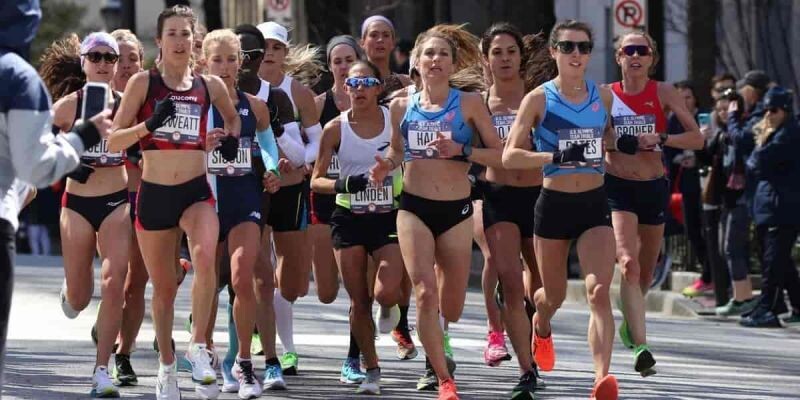
As the starting cannon sounded, the men’s field immediately strung out along the streets of Northport, with Jacob Thomson pushing the pace and taking over the early lead. The honest early pace kept the front pack small, with Thomson being joined by Sam Chelanga, Simbassa, and Korir, with a few second gap back to the rest of the field. With the halfway point in sight, Thomson opened a small lead over the rest of the lead quartet, passing through the 5 km mark in 14:21 and earning a half-way bonus.
Chelanga and Simbassa passed through two seconds back in 14:23, with Korir coming through 5 km in 14:27. Thomson would fall off pace shortly after halfway, with Simbassa and Chelanga taking over the pacing duties and pushing the pace over the next mile.
Korir sat just behind in third. With less than two miles to go, Simbassa pushed the pace and opened an immediate gap on Korir and Chelanga. Simbassa continued to push over the next mile, opening a nearly 20-second lead heading into the final mile of the race.
Over the final mile, Simbassa maintained both pace and form, extending his lead ever so slightly, on his way to claiming his third USATF Running Circuit title, crossing the finish line in 28:12, a new course record. Behind Simbassa, Korir and Chelanga waged an epic kick to the finish, with Korir pulling ahead by a step in the final meters to claim second overall in 28:34, while Chelanga placed third in 28:35.
Dillon Maggard, Futsum Zienasellassie, and Tai Dinger ran much of the race together Saturday, but in the end, it was Maggard pulling away in the final mile to claim fourth in 28:45. Zienasellassie earned another top-five finish on the USATF Running Circuit season with his fifth-place effort in 28:55, while Dinger finished a second behind in sixth in 28:56. Geoffrey Kipchumba claimed seventh overall in 29:00. Thomson slid back to eighth overall in 29:19. Ryan Kutch and Brian Barraza rounded out the top ten in 29:28 and 29:34.
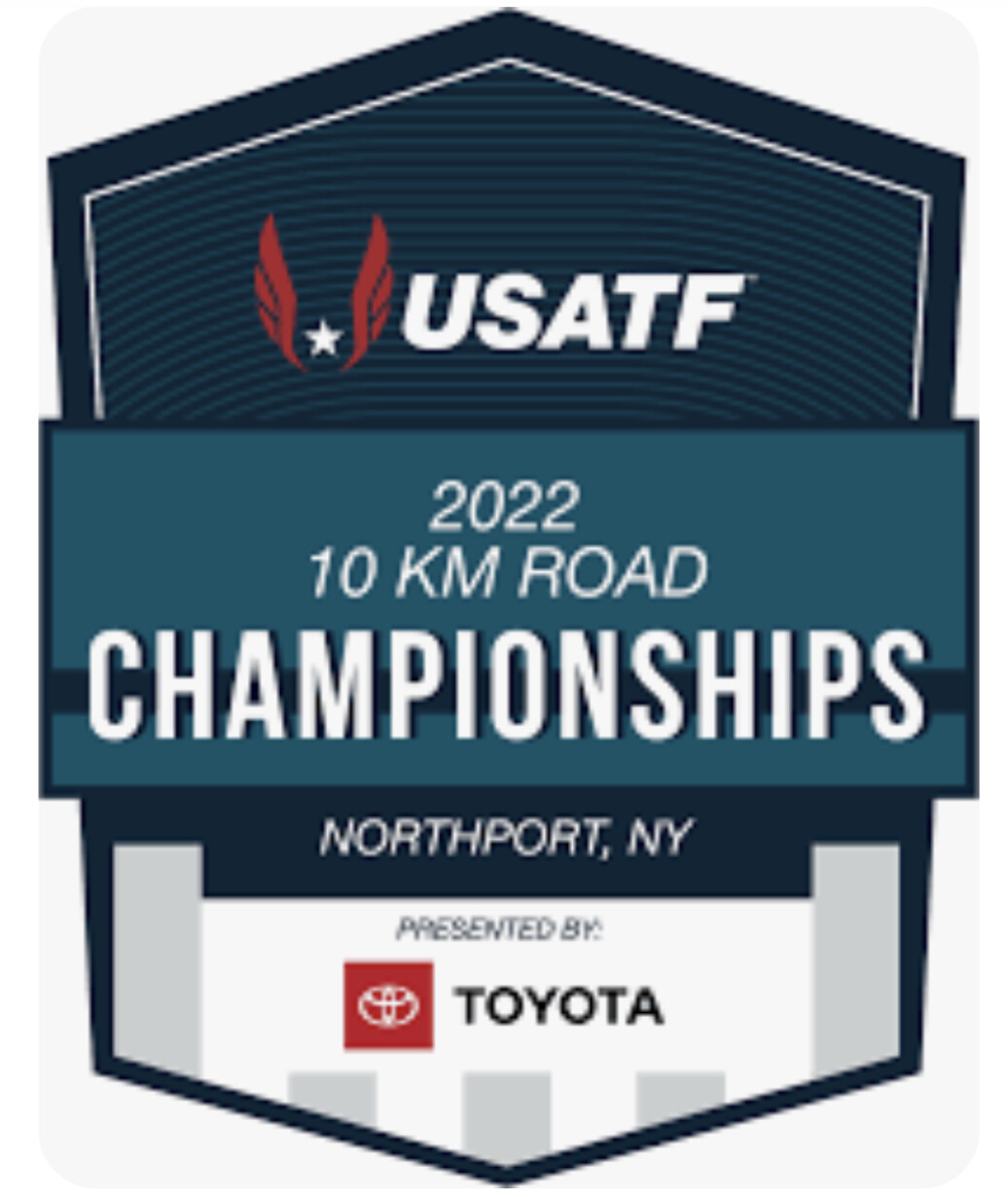
With Korir’s runner-up finish, his second of the USATF Running Circuit season, he elevated himself to an even more dominant first-place standing, with a 104 point total. Zienasellassie’s fifth-place effort added another six points to his standings total, giving him 56.5, sitting in second place overall. Chelanga’s third-place finish moved up into third place overall in the standings with 42 points.
Early in the women’s race, a pack of four women pulled away from the field, establishing a pace that no one else could manage. Bruce, Annie Frisbie, Nell Rojas, and Ednah Kurgat formed a tight pack and worked with one another along the streets of Northport.
The quartet came through the halfway point mark in 16:05, all four looking strong and able to handle the fast pace. Little changed among the top four until the final mile and a half, when Kurgat started to dip off the back of the pace, while the other three charged ahead, seemingly only a matter of time before someone made a move to try and break open the race.
Over the final mile, Bruce charged to the lead, ramping up the pace, a move that would prove decisive. Bruce pulled away from Rojas, Frisbie, and Kurgat, and never looked back, raising her arms as she crossed the line while earning her second USATF 10 km Road title and her third USATF Running Circuit victory of her career.
Bruce finished first in 31:52, while also breaking the course record. Rojas was able to break free of Frisbie and Kurgat in the final 800m to place second in 31:56, while Frisbie finished two seconds back in 31:58 and Kurgat seven seconds back in 32:03, as the two placed third and fourth, respectively.
With her runner-up effort, Rojas added 12 more points to her USATF Running Circuit standings total, giving her 33 points overall. That addition moves Rojas up into sole position of third overall, a half point ahead of Aliphine Tuliamuk, but still well behind USATF Running Circuit standings leaders Emily Sisson and Keira D’Amato, who are tied for first with 55.5 points.
After the top four women, there was a race for fifth happening over the back half of Saturday’s contest. In the end it was Emma Hurley pulling away from the field in the final mile, racing to a fifth-place finish in 32:49. Hurley finished just ahead of Amy Davis and Molly Grabill, who ran to sixth and seventh place finishes in 32:52 and 32:54. Erika Kemp, who owned the previous course record, placed eighth overall in 32:59. Carrie Verdon took home ninth place in 33:05 and Anne-Marie Blaney earned tenth in 33:21.
Next up on the USATF Running Circuit is the USATF 10 Mile Championships presented by Toyota, which take place on Sunday, October 2 in Minneapolis, hosted by the Medtronic TC 10 Mile.
(09/17/2022) ⚡AMPTry this effort-based speedwork to crush your fall trail race
Whether you’re trying cross-country for the first time or have signed up for a fall trail race, taking your speedwork to the trails is a game-changer. It can be a bit of an adjustment to shift from road running to trails–you’ll be running these intervals based on effort, not pace.
Trail running is particularly spectacular in the fall. Crisp leaves underfoot, end-of-summer warmth in the air, and the opportunity to eke out a few more runs in shorts make trail time glorious before the snow flies.
Out-and-back repeats

For these out-and-back repeats, pick a starting point on the trail and mark it. After you’ve finished your hard three-minute interval, mark your endpoint. Recover with easy jogging, and then run your next hard interval from the endpoint back to the start, trying to make it past the point where you began. Challenge yourself to run a little bit further each time, even if it’s only a few extra steps.
Warm up with 10 to 15 minutes easy running.
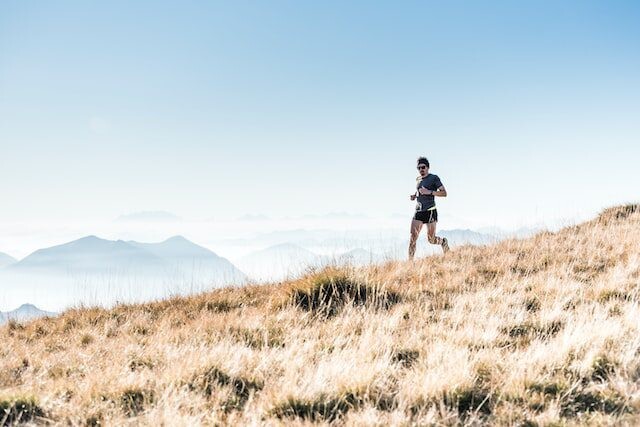
Start with 6 x 3 minutes hard effort, 90 seconds rest or easy running between each one.
Cool down with 10 minutes easy running.
Pace-change sprints
Fine-tune your acceleration and deceleration skills on the trails by adding these pace-change sprints after an easy run of any length. Find a path roughly 100 metres long (your best guess is fine) and divide it into thirds, marking each section or noting a landmark.
Run at a medium-hard effort to start, hard for the second section, then medium-hard to finish; walk or run easily.
Remember to follow a speedwork session with an easy or rest day, and hydrate, even in the cooler fall temperatures.
(09/17/2022) ⚡AMPby Keeley Milne
Eilish McColgan will race Great Scottish Run 10k on October 2
British and European 10km record-holder will take on distance on the streets of Glasgow.
Eilish McColgan will be back on home turf this autumn as she takes on the Great Scottish Run on October 2.
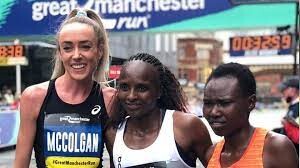
The 31-year-old holds the British and European 10km record – a time of 30:19 which she set at the 2022 Great Manchester Run – and will be confident of another fast time in Scotland’s biggest city.
McColgan was meant to make her much anticipated marathon debut in London on October 2 but after experiencing low blood sugar levels during long training runs – a condition called ‘rebound hypoglycaemia’ – she delayed her first taste of 26.2 miles until April.

The Scottish athlete has had a quite extraordinary year that has seen her set British records over 5km, 10km and the half-marathon, while on the track McColgan also claimed four major championship medals, including a famous Commonwealth 10,000m gold medal for Scotland in Birmingham.
She became the first British distance runner to compete in six championships outdoor finals in the same season and covered an astonishing 31 miles over five weeks on the track.
At the Great North Run (September 11), McColgan was the official honorary starter, setting 60,000 runners on their way from Newcastle to South Shields in the world’s biggest half-marathon.
“It’s been a great year for me, culminating in my medals on the track, the highlight was my Commonwealth Games victory, roared on by the crowd,” McColgan said.
“After postponing my marathon debut until next year and being involved in last weekend’s Great North Run, I feel I have one more race left in me this season.
“I can think of no better place to do that than to come home and take to the streets of Glasgow over 10km on October 2 at the Great Scottish Run.”
“It was a real honour to see Eilish get the Great North Run underway last weekend,” Paul Foster, Chief Executive of the Great Run Company said. “She has been an amazing ambassador for our sport and continues to inspire people around the UK on and off the track.
“It’s an incredibly exciting prospect to have Eilish completing a stellar season with a debut performance at the Great Scottish Run. I’m sure our runners will be delighted to have the opportunity to run alongside her in person.”
“The Great Scottish Run is one of the UK’s premier running events and Scotland’s biggest 10km & half-marathon.
(09/17/2022) ⚡AMPby Tim Adams
Great Scottish Run
Experience the inspiring atmosphere of Scotland’s biggest running event and achieve something great this autumn. This spectacular weekend of running is a celebration of sport that is suitable for the whole family and is televised live on the BBC. The Bank of Scotland Great Scottish Run half marathon welcomes thousands of runners to the city of Glasgow every year. The...
more...

